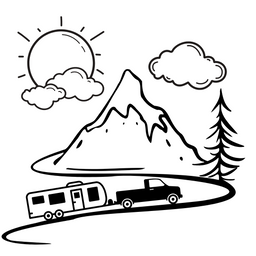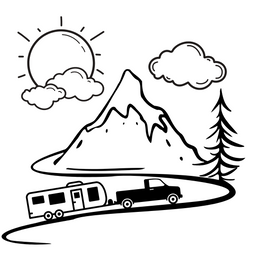RVing America's Loneliest Road, Part 3
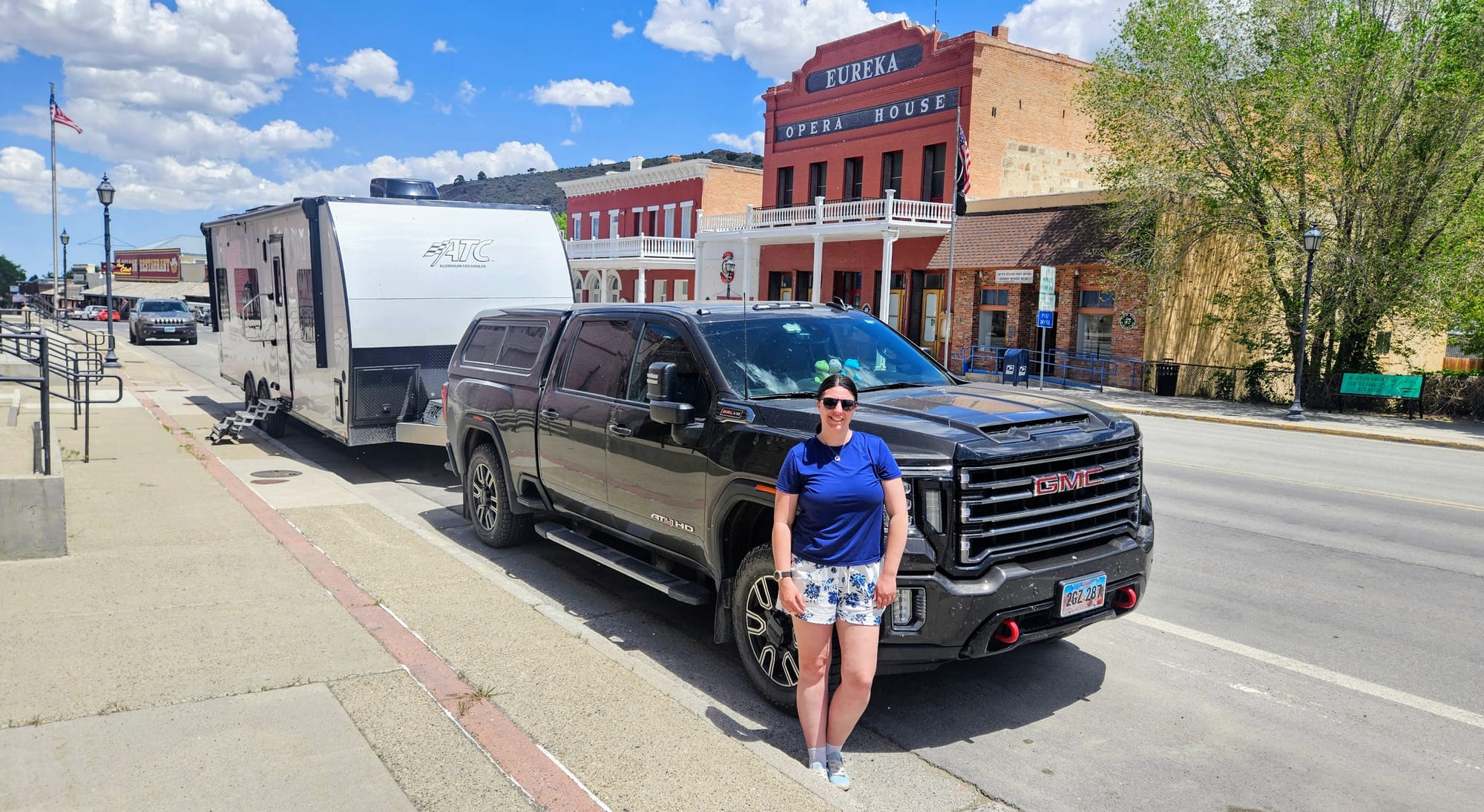
Continued from Part 1 and Part 2.
After a successful first overnight outside of Austin, NV, we were ready to hit the Loneliest Road once again.
Day 2: Austin to Ely
Our journey would take us another 3 hours without stops and end us in the town of Ely (pronounced "EE-lee"), the biggest town on the eastern part of the road. But first, we needed to pay a visit to another town.
Stop 1: The town of Eureka
Known as the "friendliest town on the loneliest road," we hoped we could find parking downtown and see the friendly faces of Eureka. With 56ft of combined length, pulling over on the side of Main St isn't a common occurrence, but this time we had no issues. We found a spot across from the Eureka Opera House, built in 1880 and known as the centerpiece of the historic district.
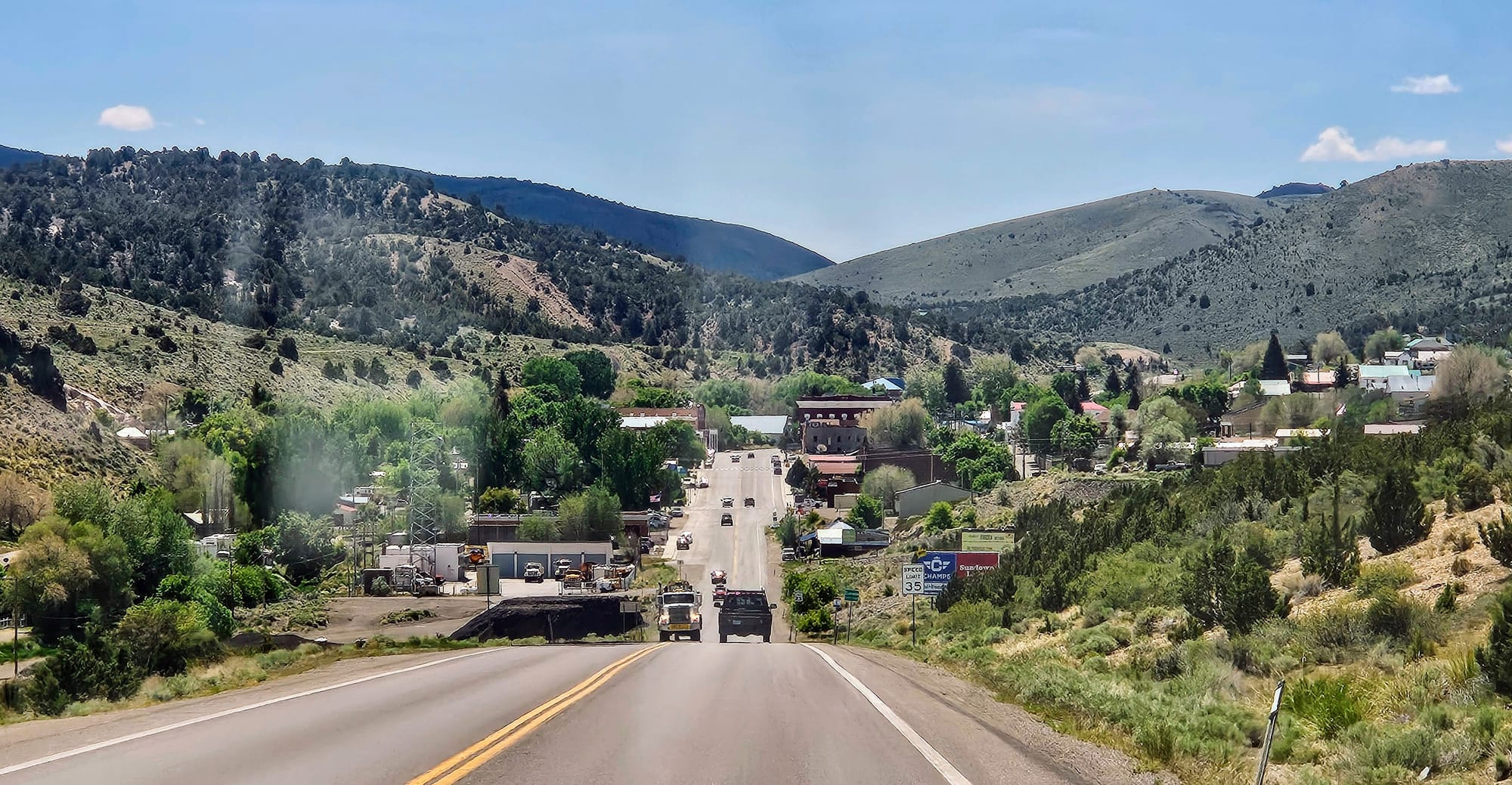
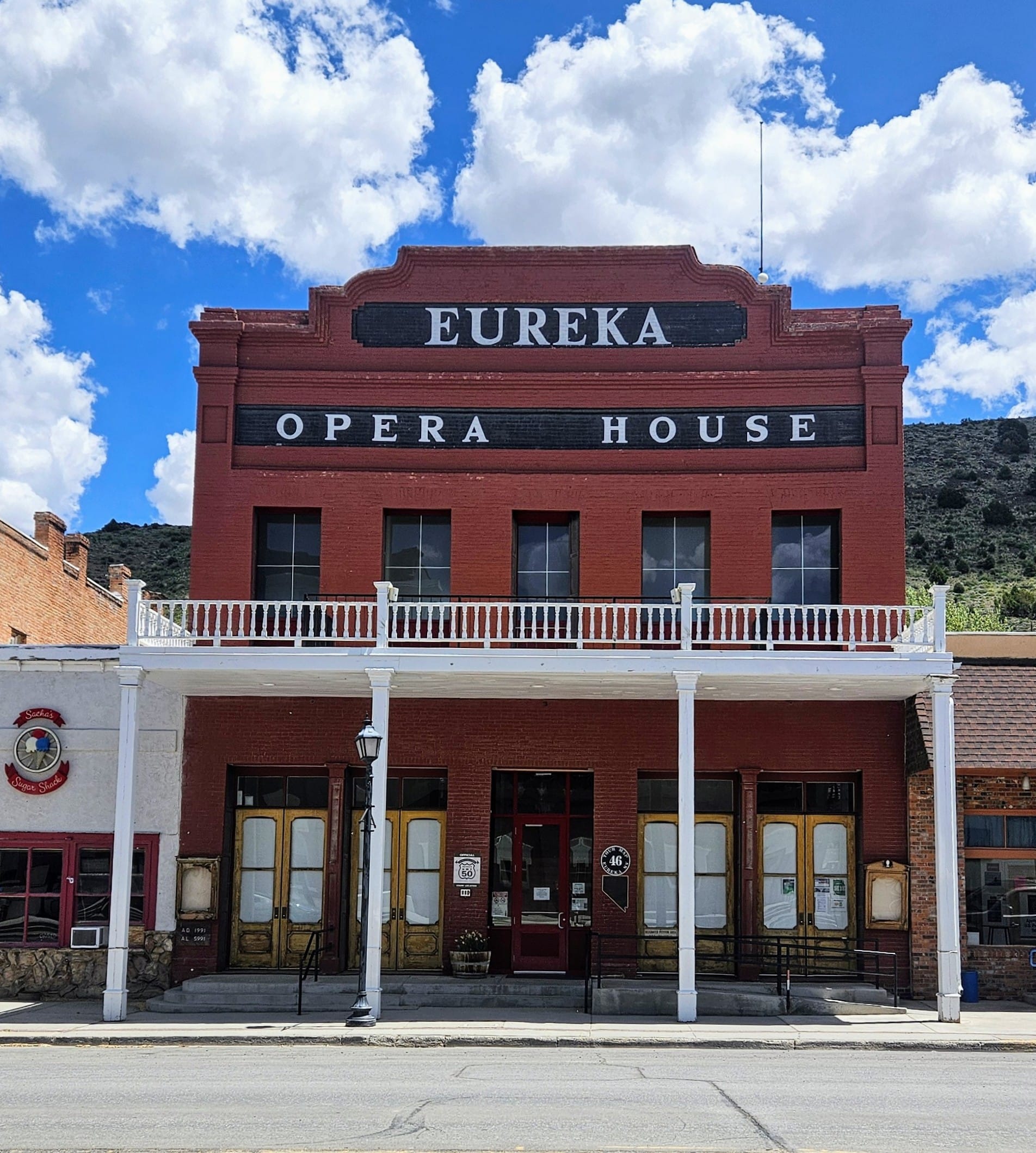
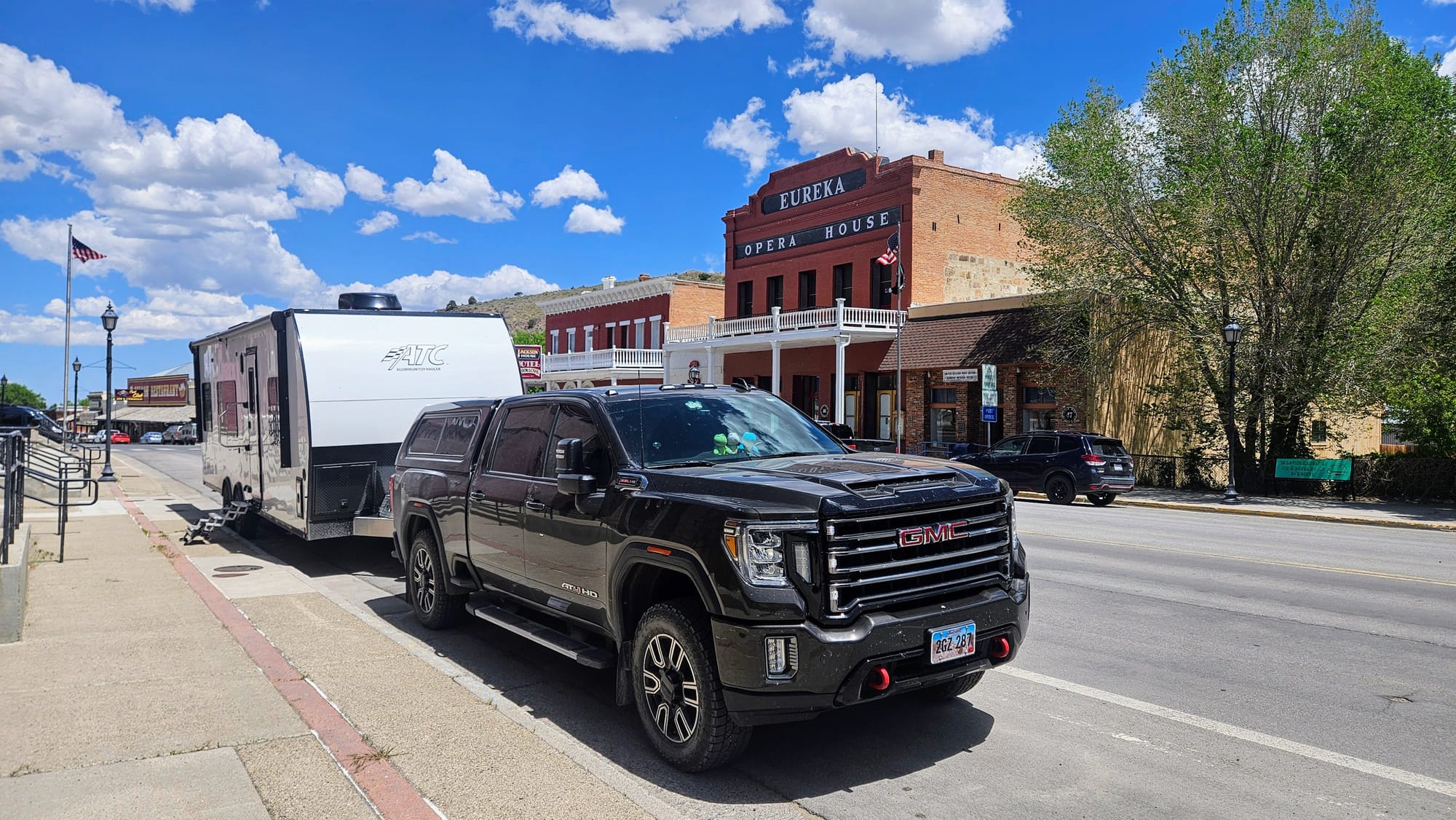
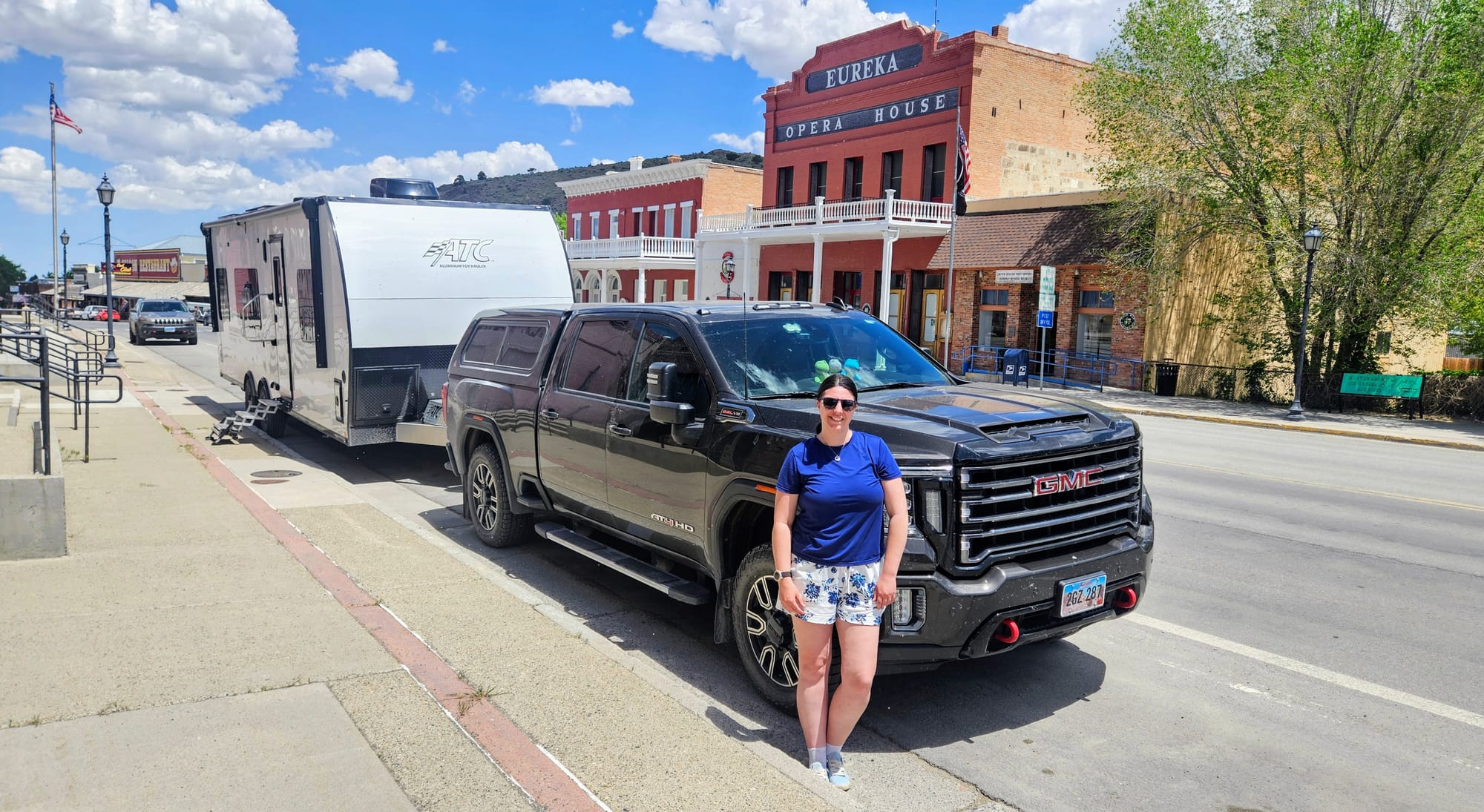
We were also on the same block as the Courthouse, which showcases Victorian architecture. The brick and sandstone in the building's construction came from local quarries.
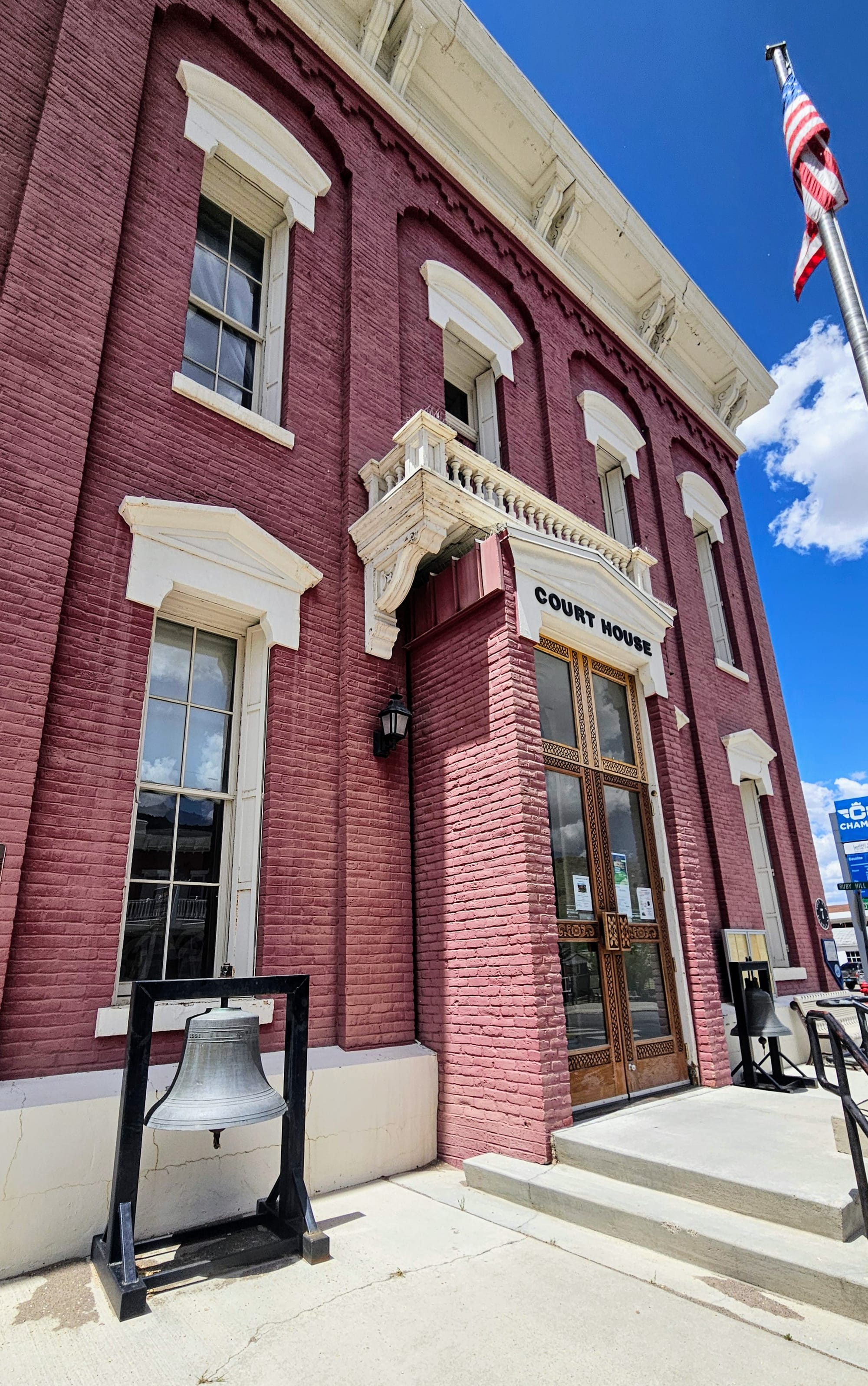
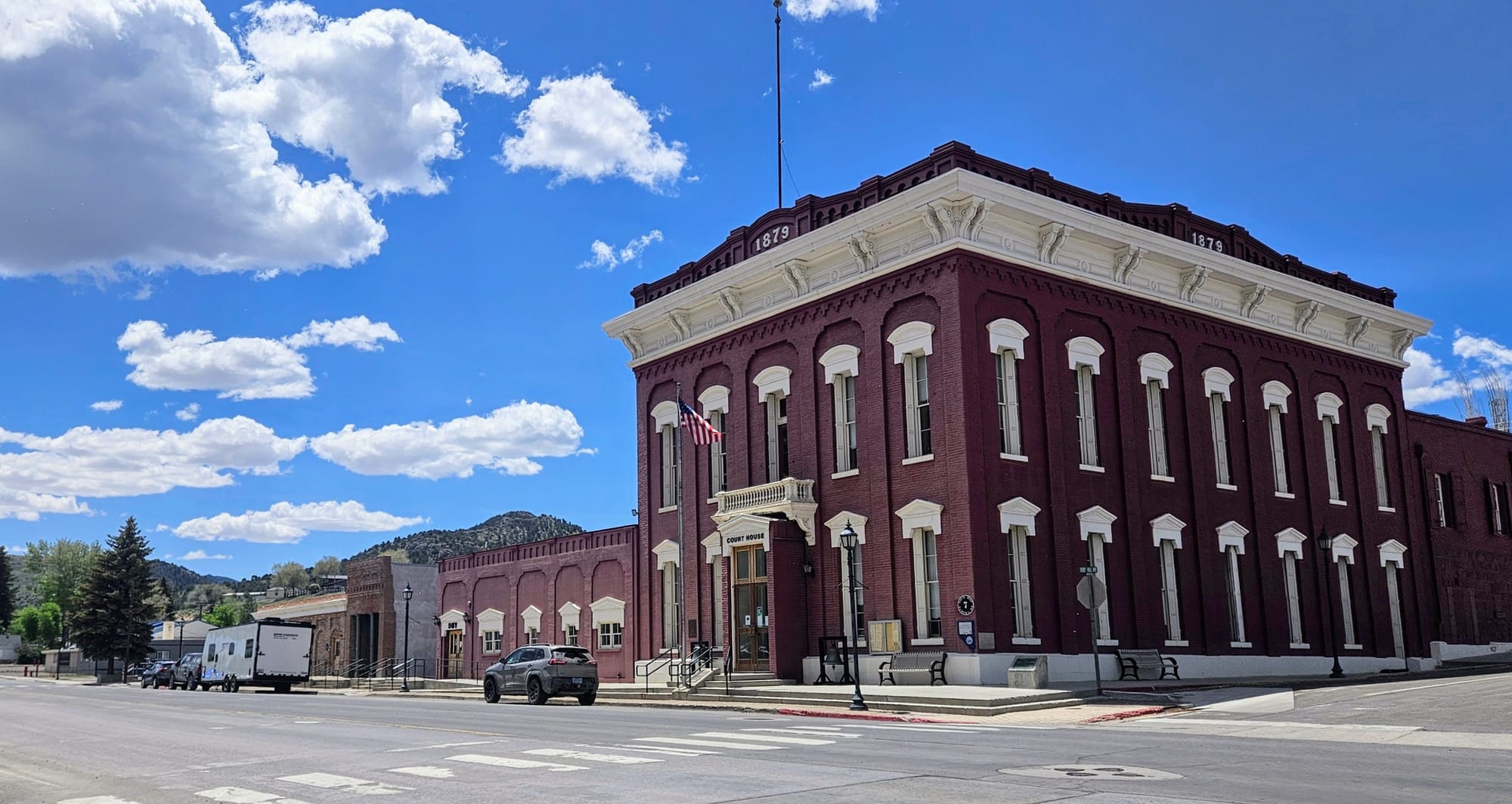
We were recommended by our audio tour to visit the Sentinel Museum. Housed in the Eureka Sentinel Newspaper Building, the museum displays original printing press equipment and posters of old copies of the newspaper. There are also exhibits on the town's mining history and the lives of the residents back in the early days of Eureka. The audio tour also spoke highly of the gift shop, a wonderful place to get local items made right in town.
Since we hadn't had the best luck with places being open in the towns we've visited so far, we checked Google. Open from 8am-4pm! We hoped that this meant our luck was changing. We understood places being closed on Memorial Day, but this was Tuesday now, so we hoped to see more life come to these towns.
We walked over to the museum and saw a sign posted on the front door: Closed May 27 and 28. No explanation. Bummer. But there was still more we wanted to do, like grab lunch over at Eureka Depot. Beverages, sandwiches, and baked goods served in a restored historic building. Once we saw croissant sandwiches on the menu, we were all in! We headed across the street and over to the depot. The sign on the door? Closed May 27 for maintenance. Bummer! After that, we cut our losses. We enjoyed walking around the town and seeing all the historic buildings, but the earlier we got to Ely, the better chance we'd have at getting a site at our top choice campground.
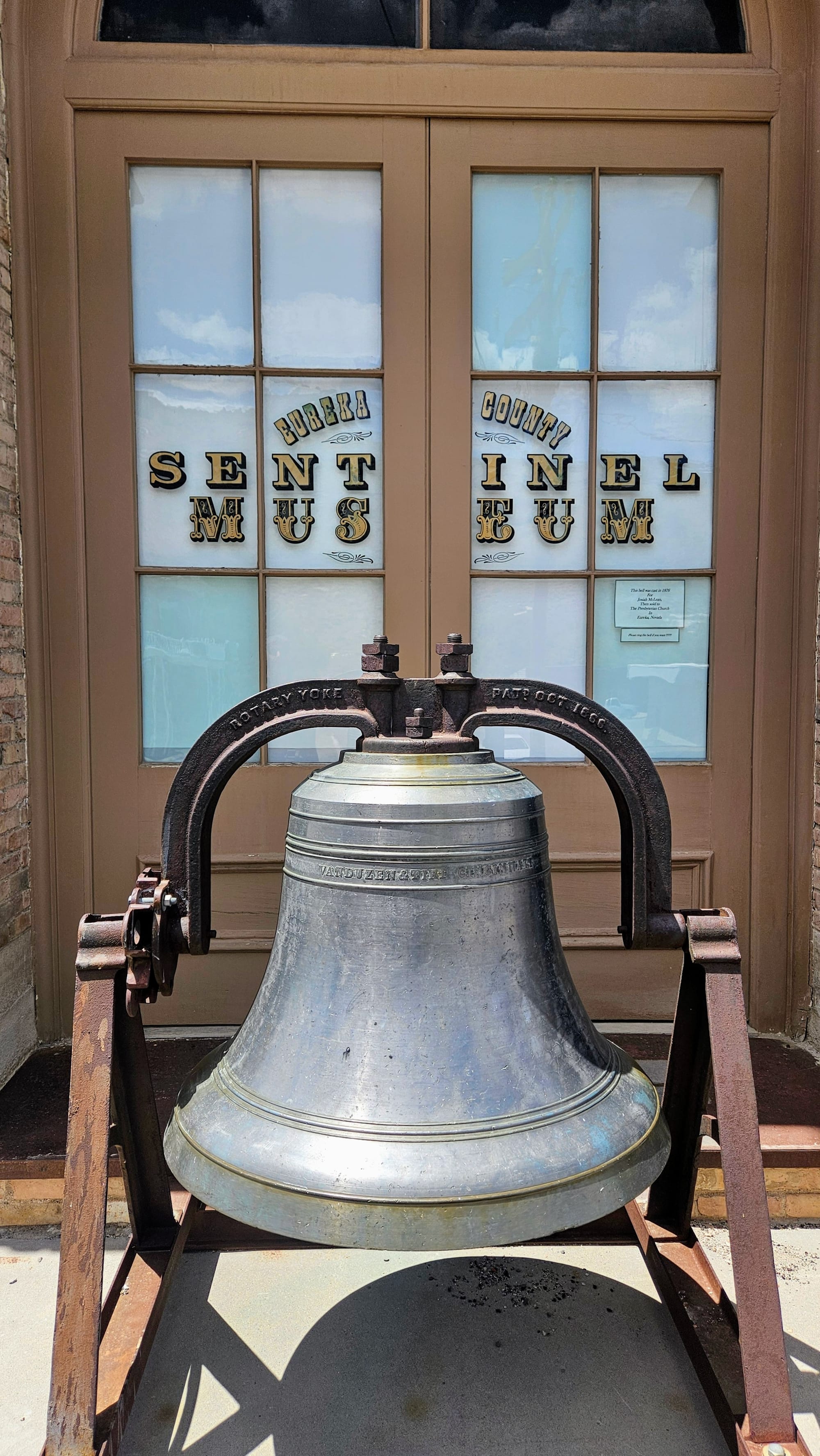
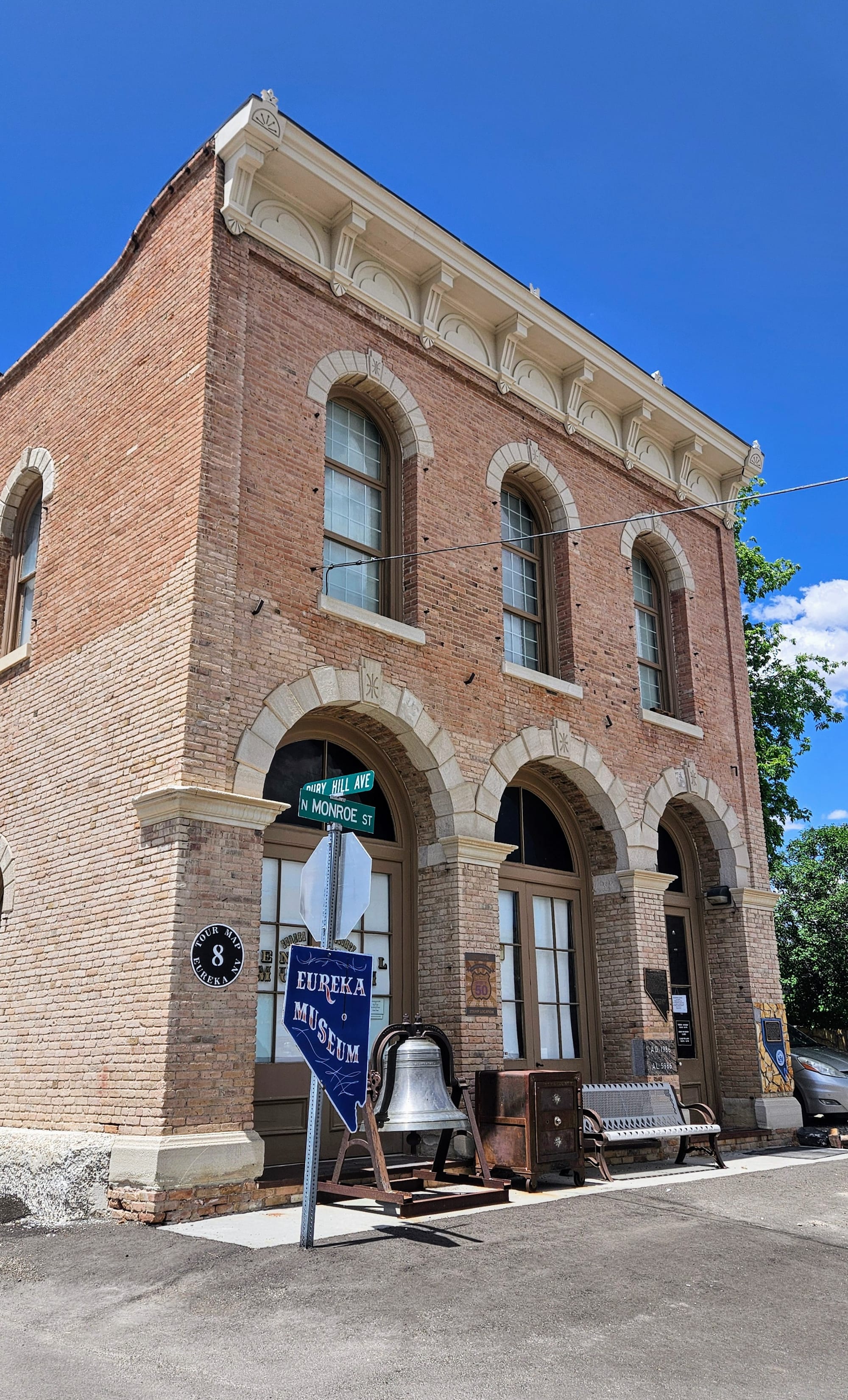
Stop 2: The town of Ely
We've been through a lot of old mining towns out west, but driving into Ely was unlike anything. To the left was Garnet Hill, a small mountain where people can rockhound for garnet stones, offering a modern-day mineral quest. To the right were incredible open pit copper mines, with the layers of minerals looking like nature's quilt. And then, another fun gateway sign welcoming us to the town and celebrating our survival thus far.
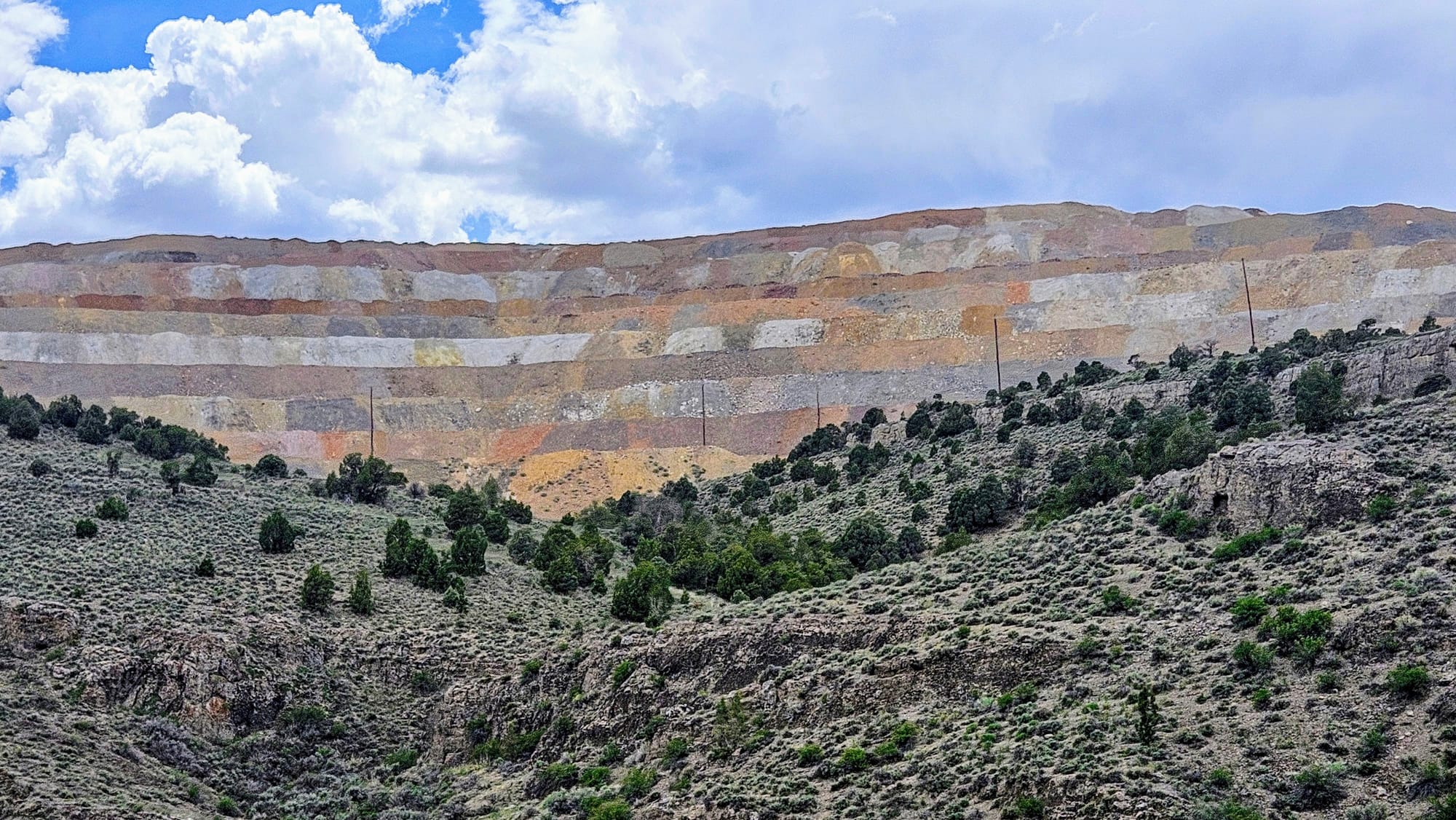
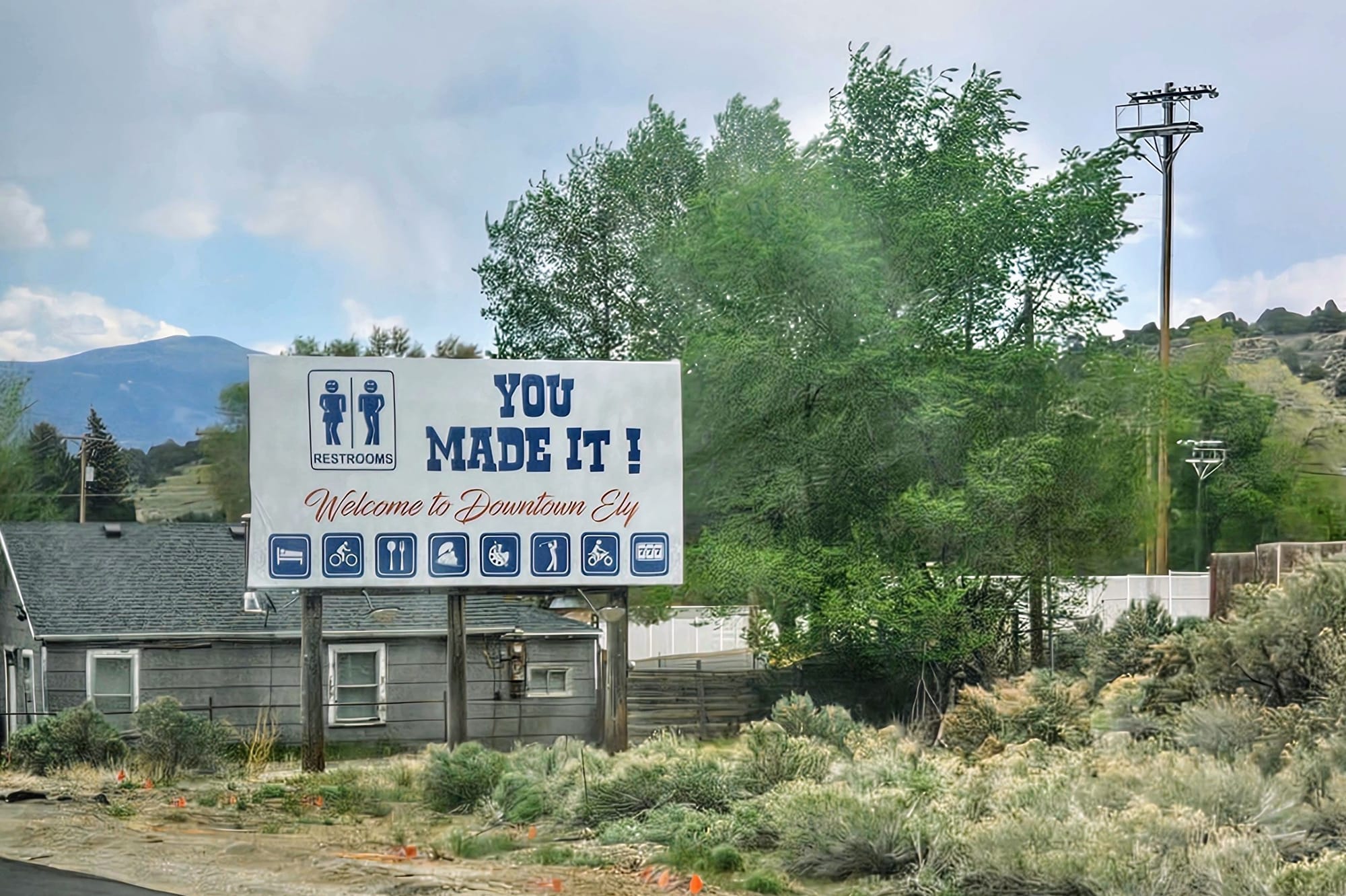
Our only stop in downtown was for gas. Thankfully, there are plenty of spacious gas stations here! We'd be heading back into town the next day for some fun excursions, but right then our top priority was finding a place to camp. The plan was to stay in Ely for 2 nights. There are a decent number of campgrounds in town, including some private RV parks, like the Ely KOA, and some state parks. We, however, reserved nothing and instead headed to Ward Mountain Campground, a national forest campground. In season they do allow reservations, and usually they start mid-May, but this year they weren't starting until May 31.
Once again, site availabilities weren't a problem, but when we passed the entrance to Loop A, we got nervous. Another loop that looked to be very narrow with lots of tree branches. We continued on and found a much larger loop with a sign pointing RVs in that direction. We were in luck! Just 2 sites were occupied in that loop. We chose site 16 for its length and what looked like levelness. It was actually deceptively sloped from front to back, but that's a much easier adjustment for us. We loved this spot. We had a beautiful picnic area and a huge space behind our campsite to walk Tanner. We were surrounded by gorgeous juniper and pine trees. Our lack of reservations had been really working in our favor!
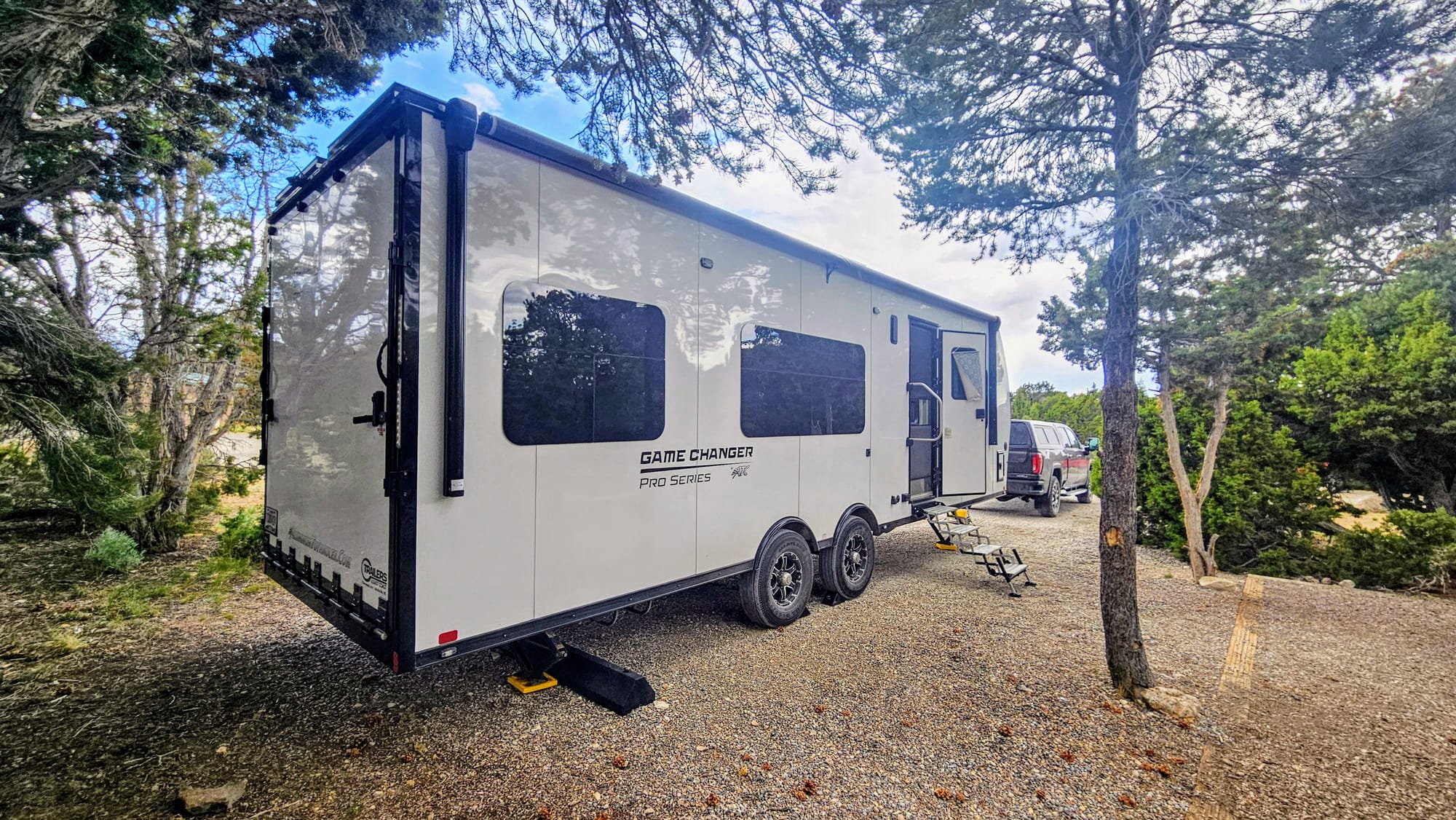
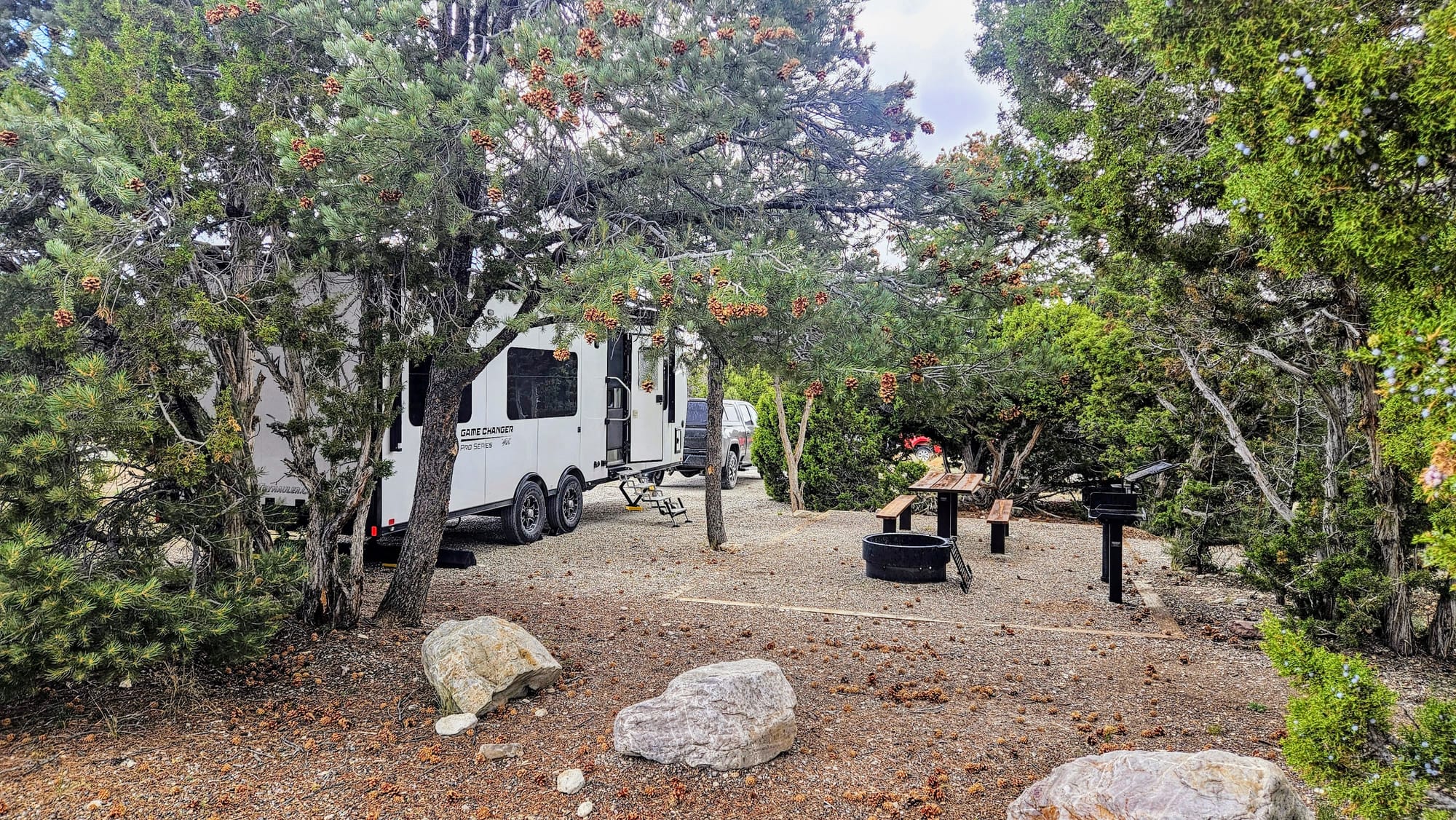
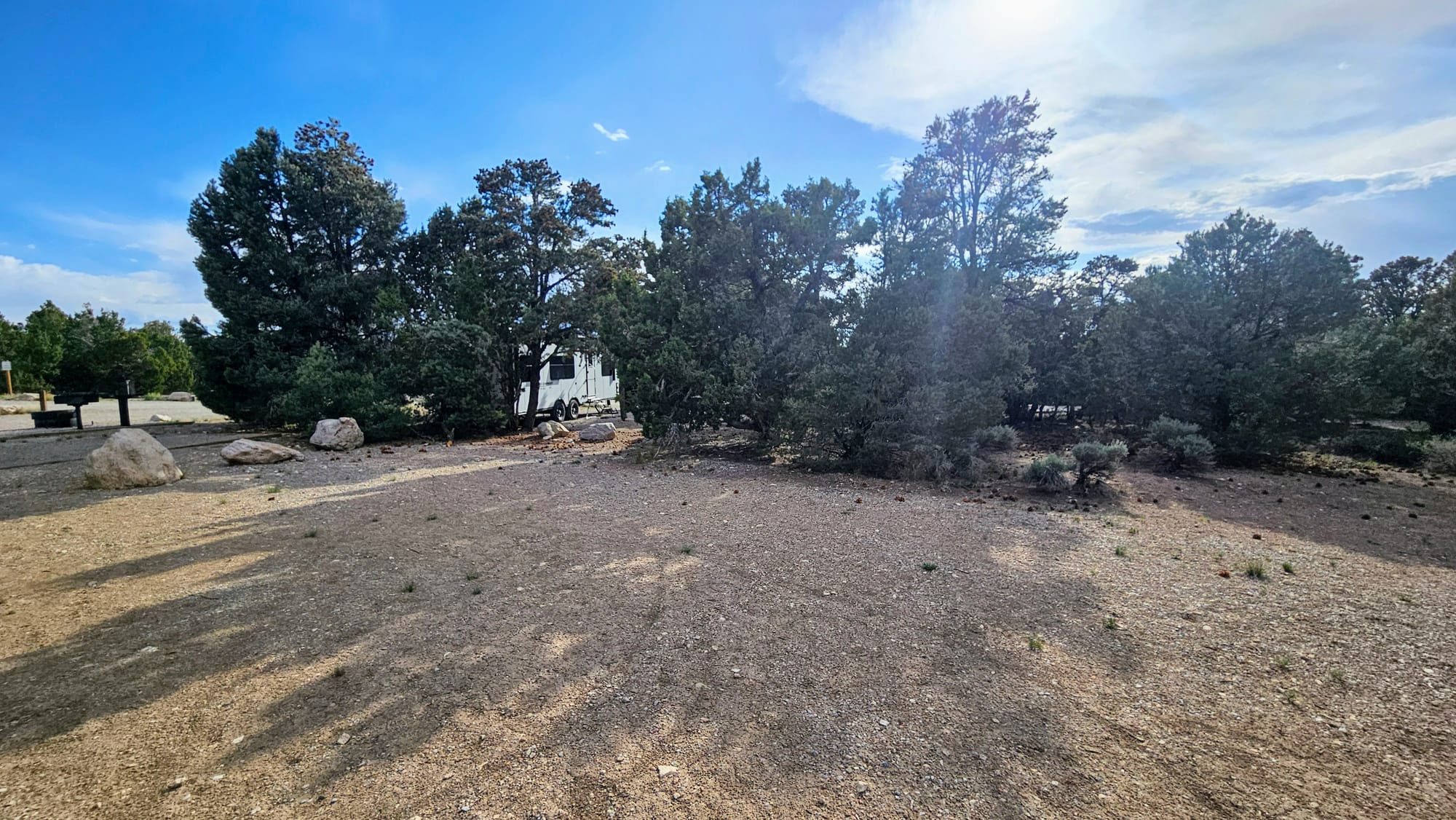
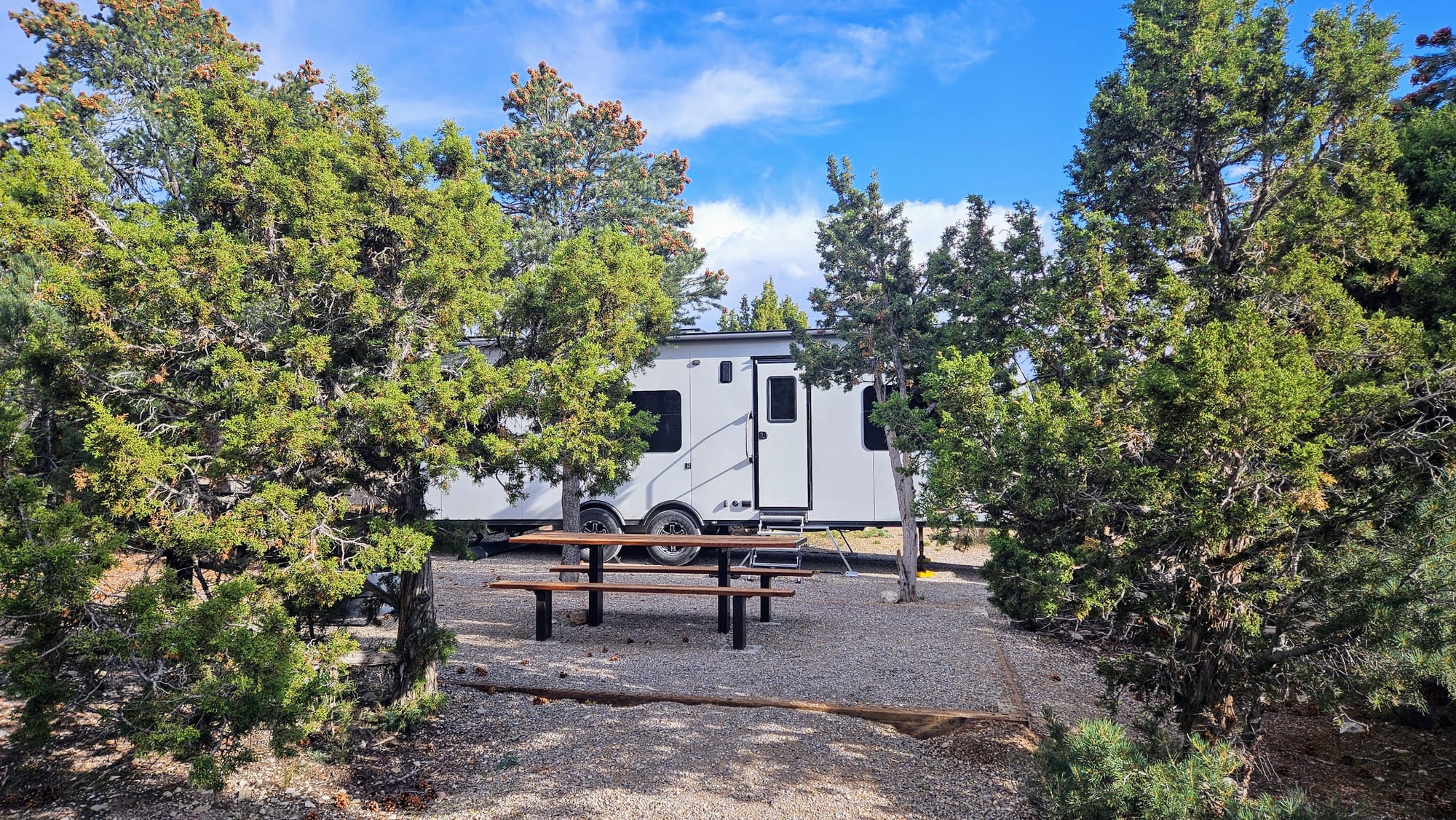

We took the rest of the afternoon to regroup. Even though our drive days weren't very far, we were thrown out of our routine. We don't typically have this many drive day adventures, nor do we plan so little ahead of time. We were feeling the effects of this new way of traveling. One activity we did plan, however, was happening the next morning, and we wanted to be energized and ready to enjoy it.
I found broken juniper "berries" and confirmed that they are in fact cones!
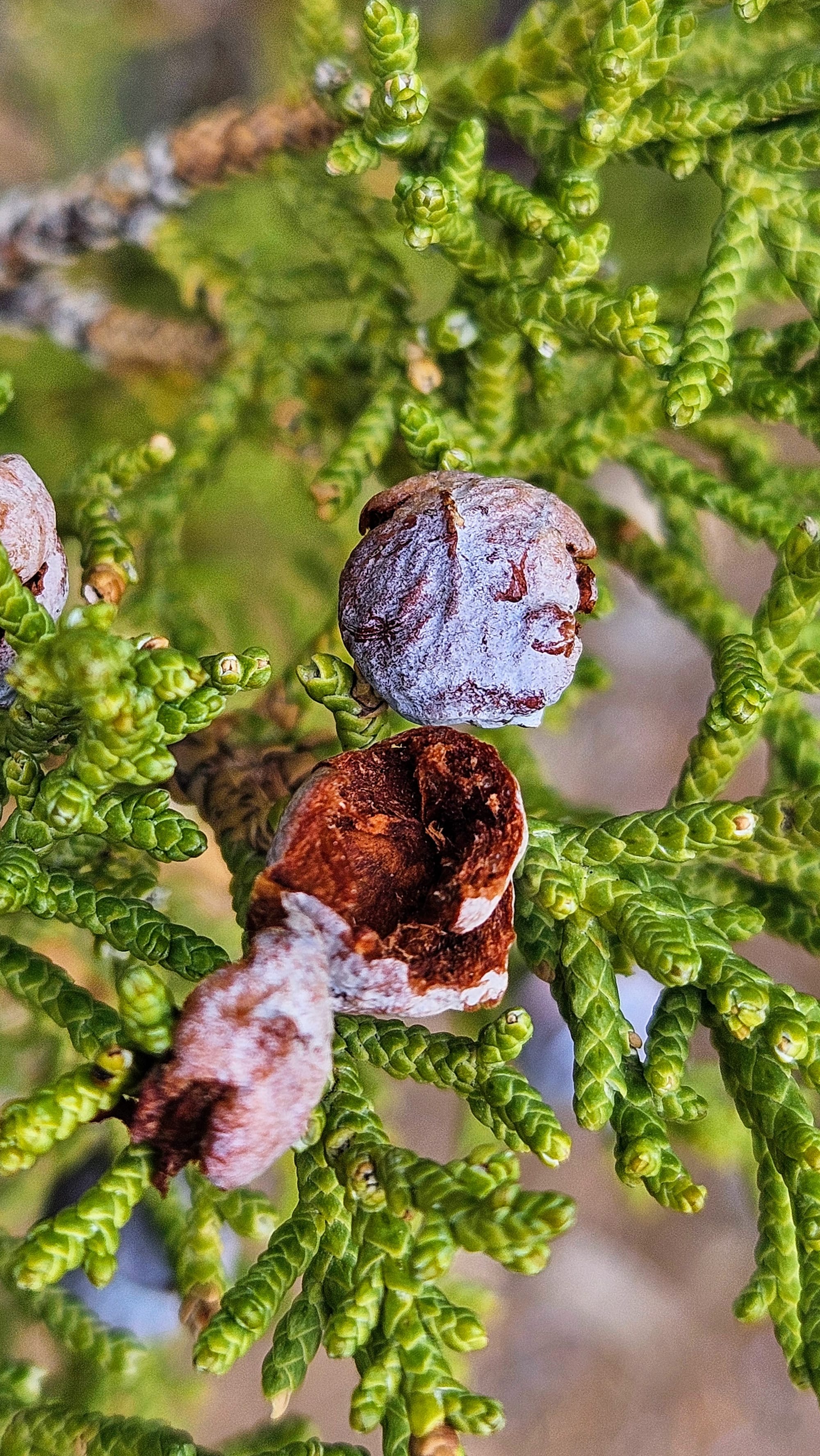
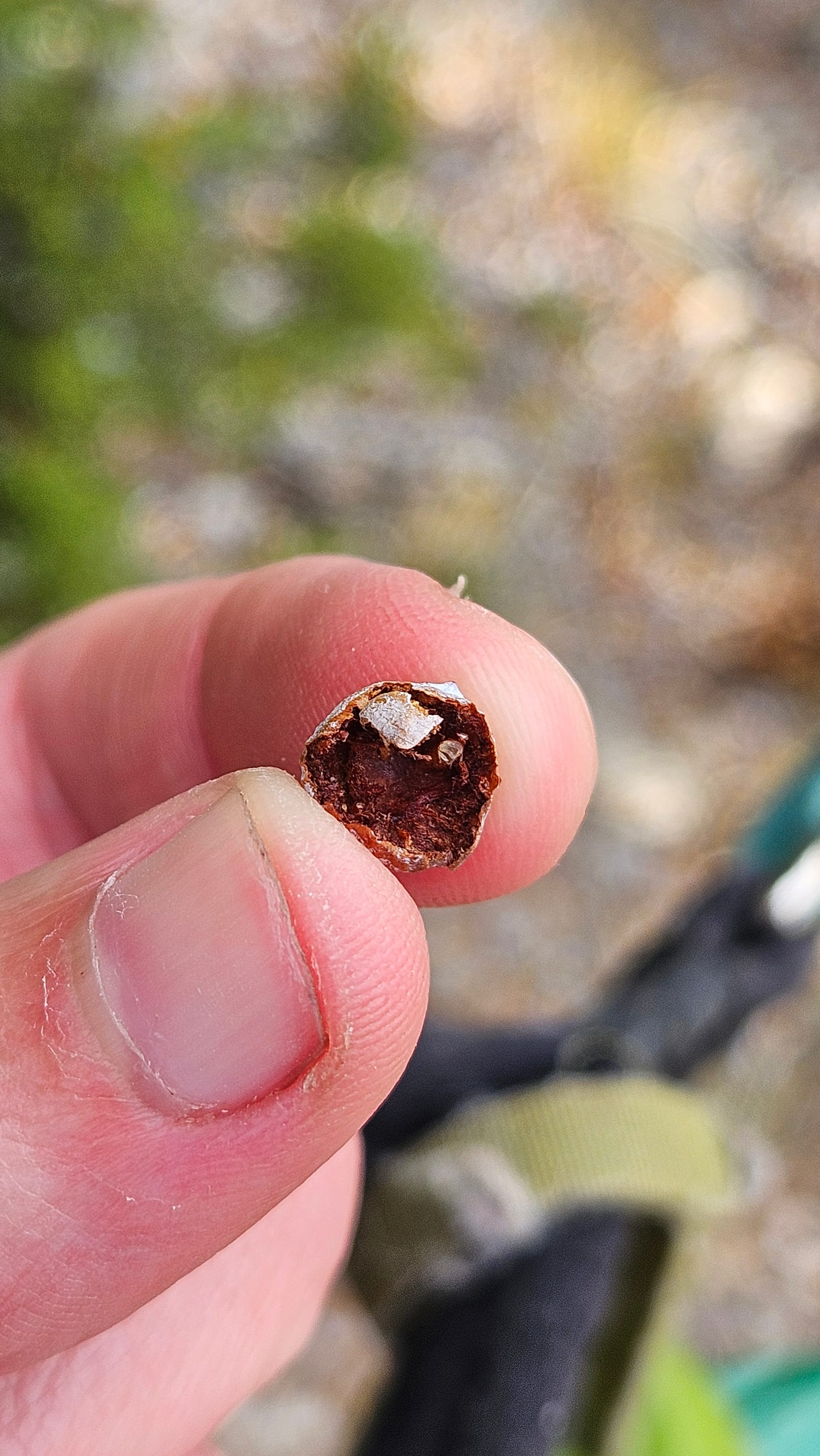
Don't know what the heck I'm talking about? Read these posts:
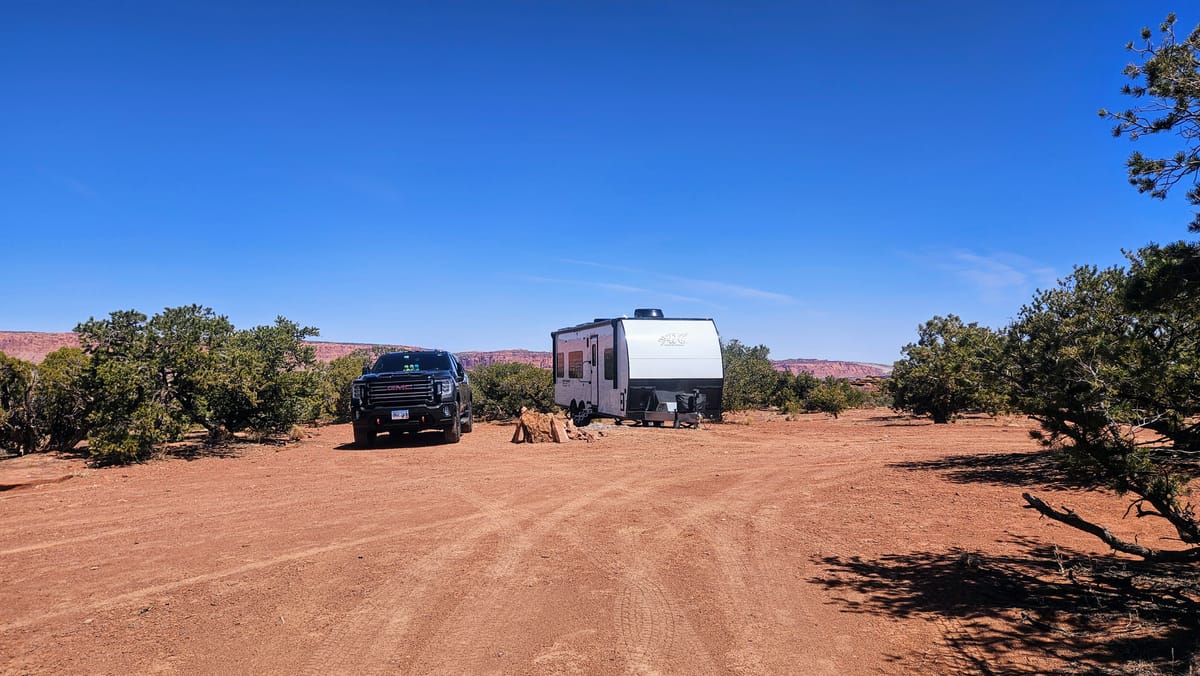
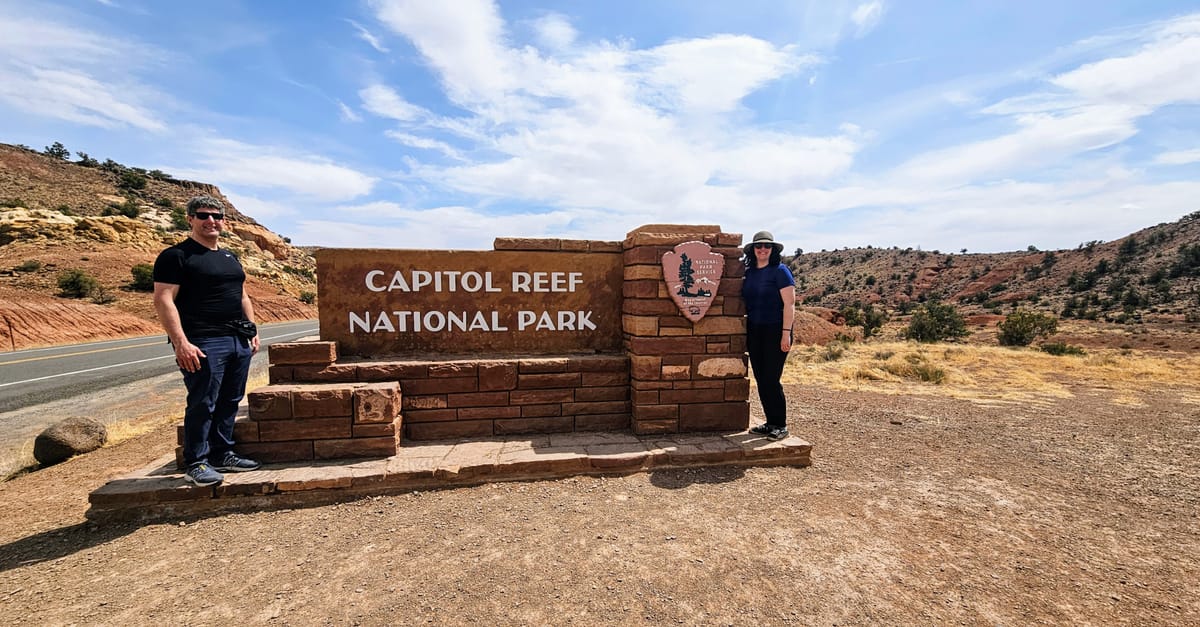
Day 3: Ely
If there is one "must-do" activity in Ely that we hear recommended again and again, it's the Nevada Northern Railway. This is a historic railway and museum, which hosts tours on steam locomotives. The website got me very excited because they offer all kinds of train rides, including themed rides, dinner rides, special holiday rides, and most intriguing to me, a ping pong ride and a bingo ride! Unfortunately, many of those rides were either on specific days or hadn't started yet for the season. I missed the bingo ride by just 3 days and am still disappointed about that. But, we were able to book a "normal" tour, the scenic ride through Robinson Canyon, where we can see old mining sites and hear a narration of the history of Ely.
The ride lasts 90 minutes, taking us west on the outskirts of town and then through 2 tunnels and into the canyon. Along the way, we heard about the town's booming mining industry and the bandits who tried to rob the trains. We also learned about the fight to get the railroad tracks rerouted to the edge of town, which they now are. It was a fun little excursion and a great introduction to Ely.
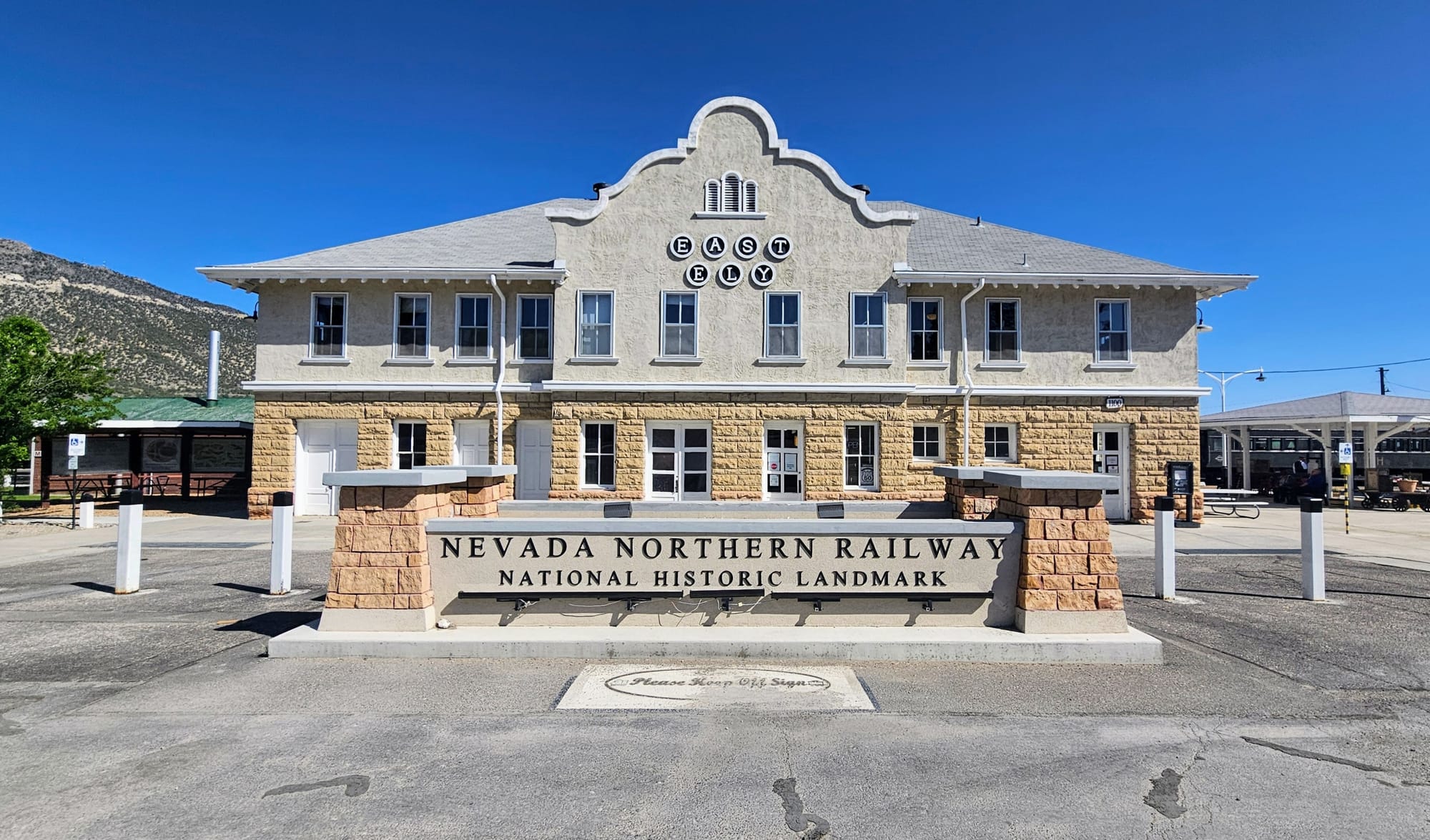
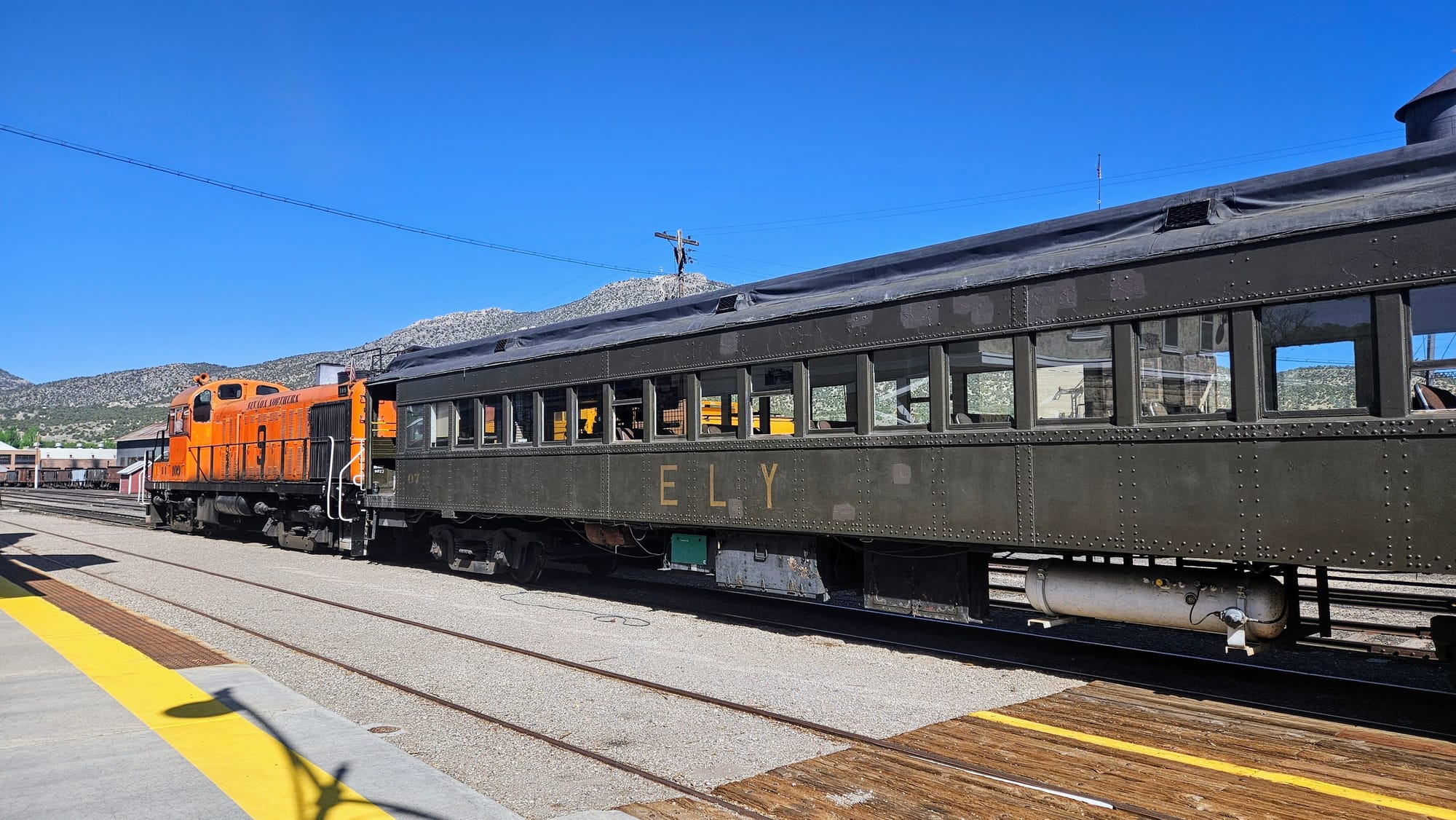
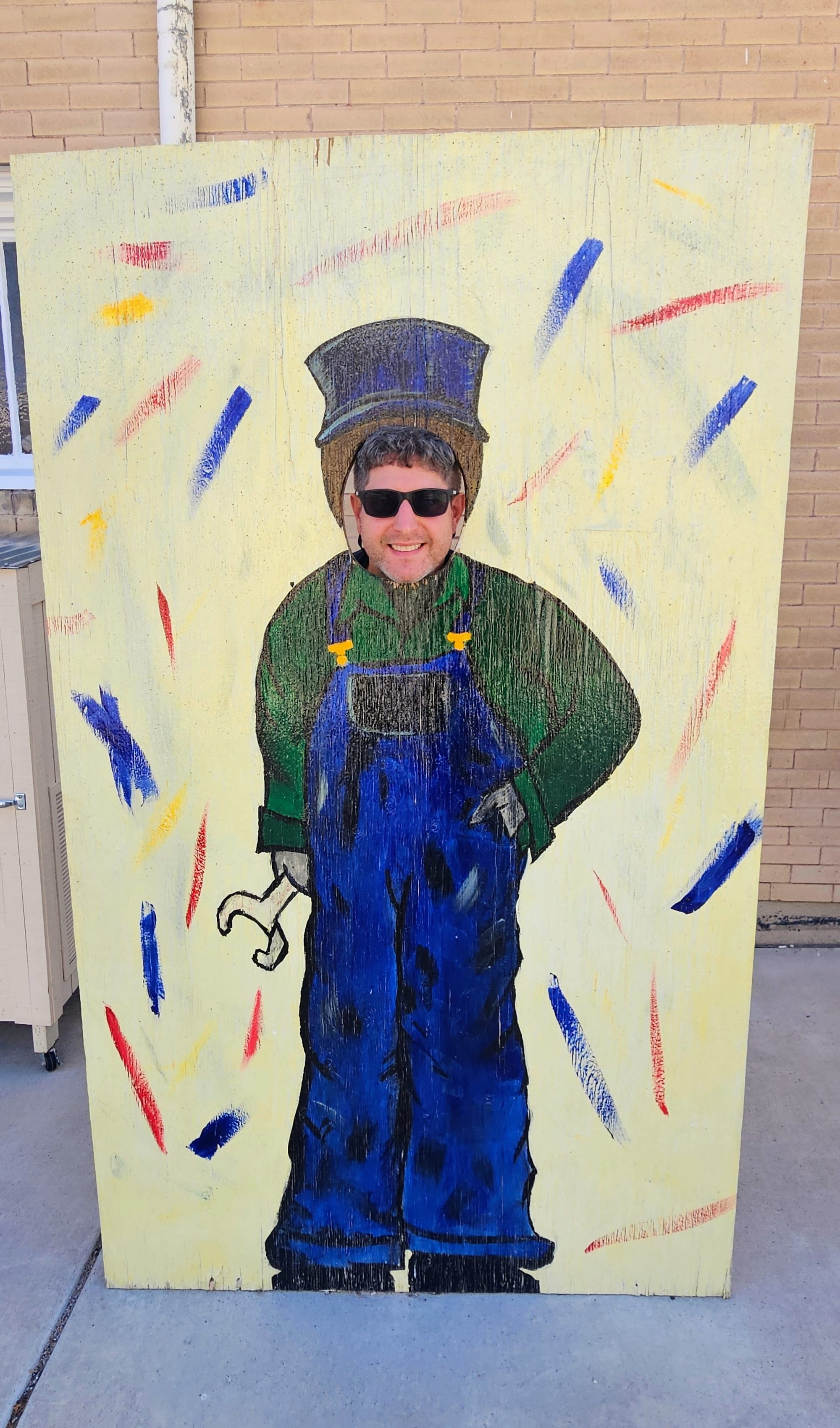
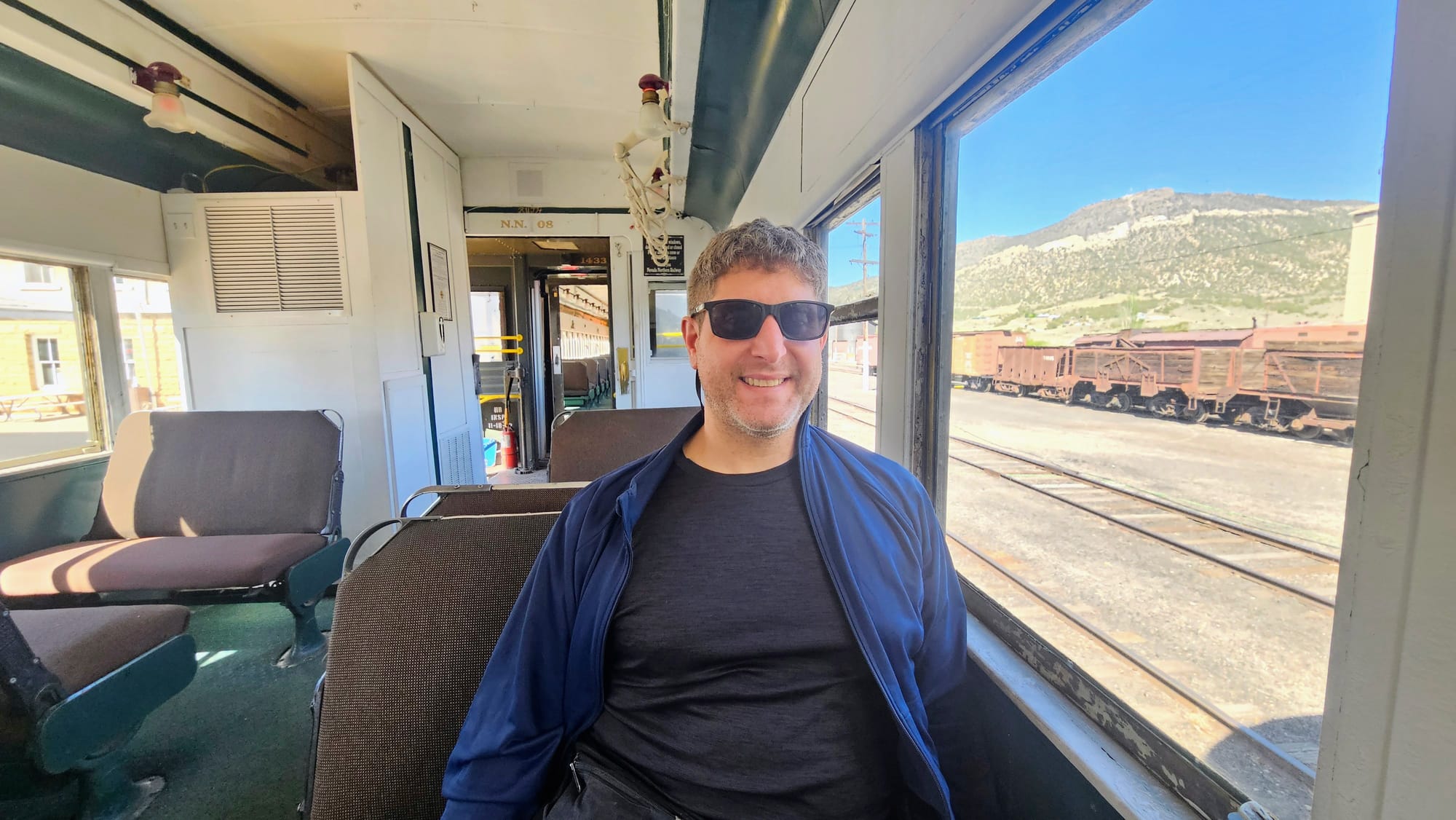
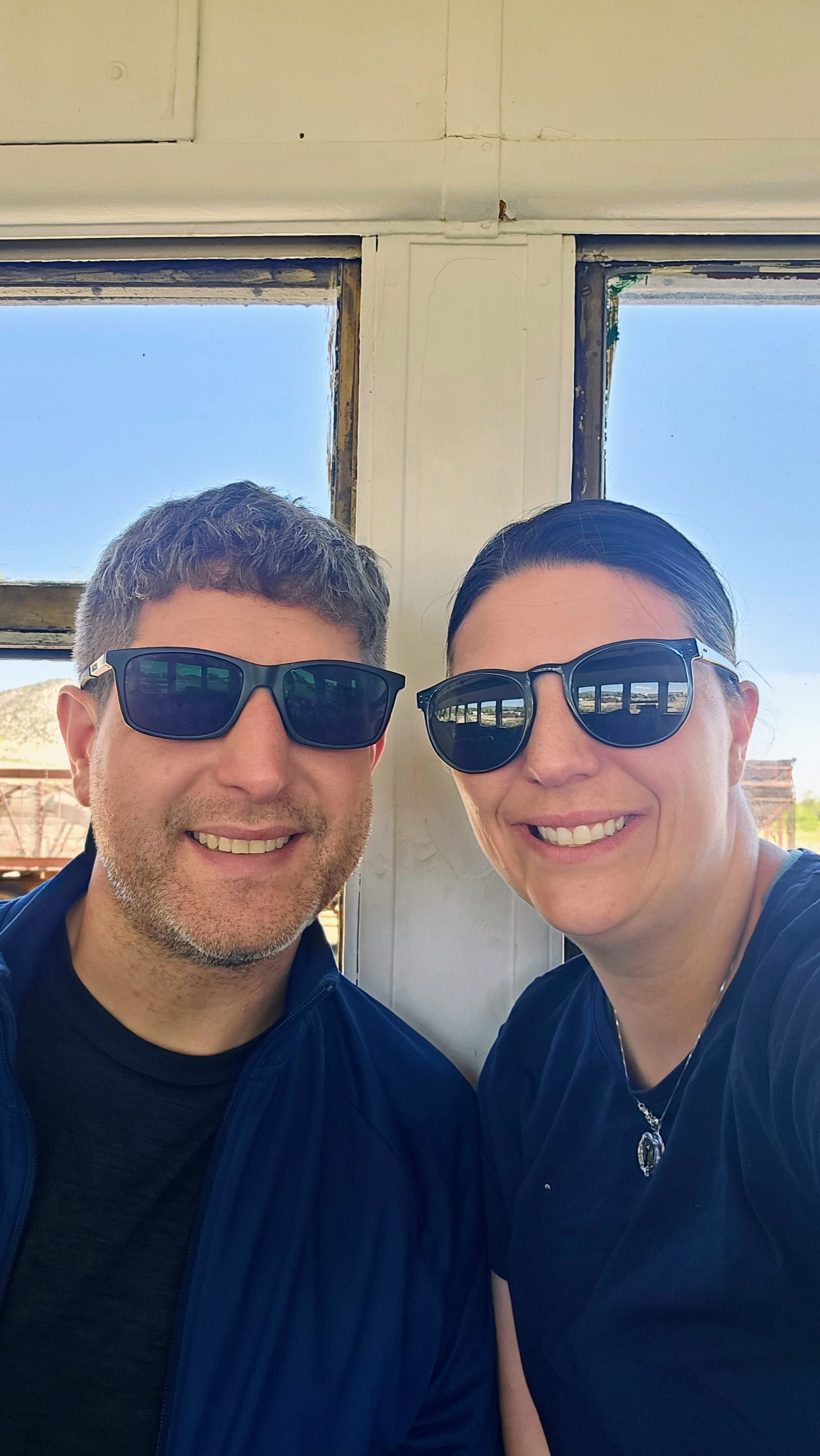
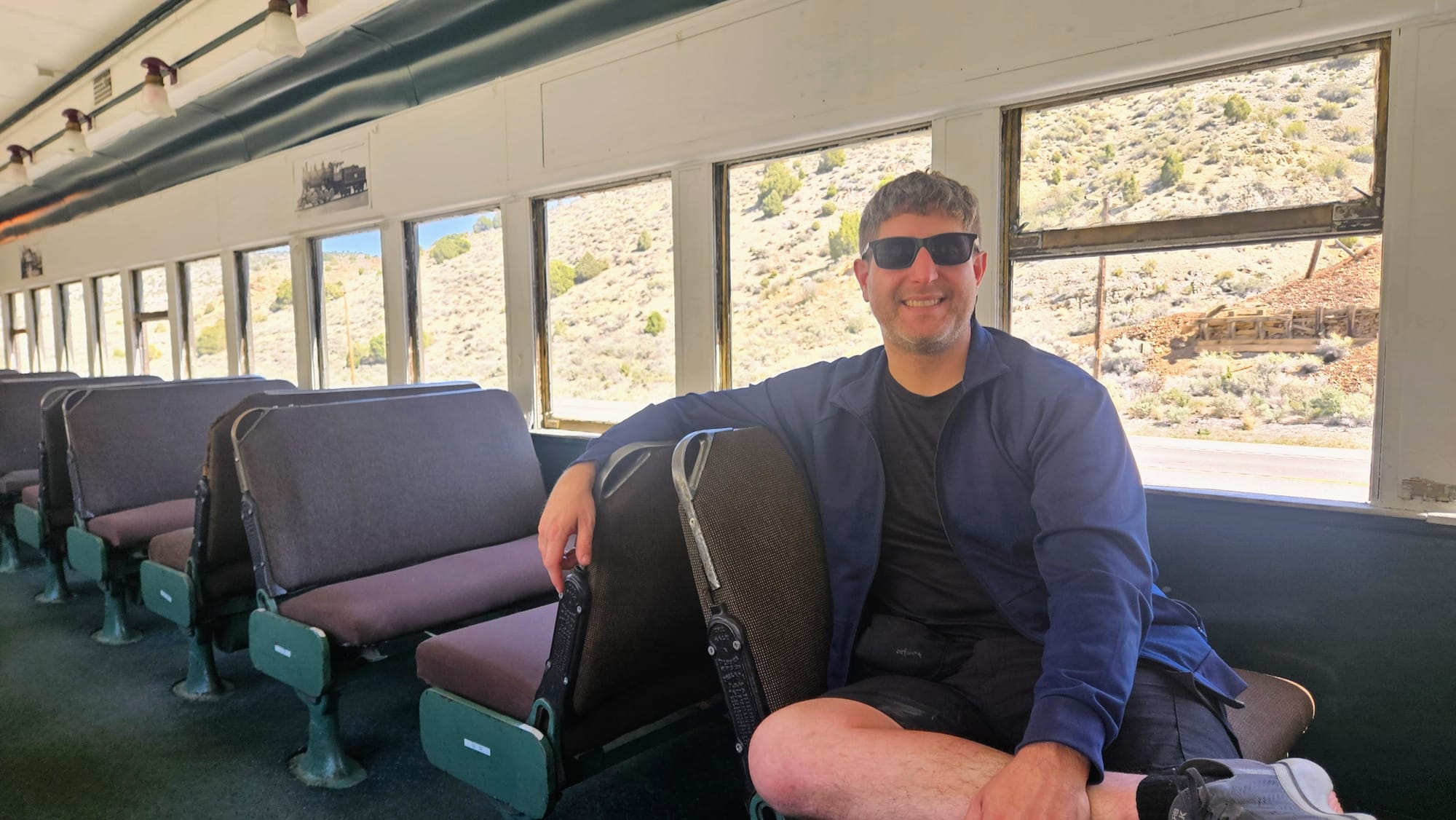
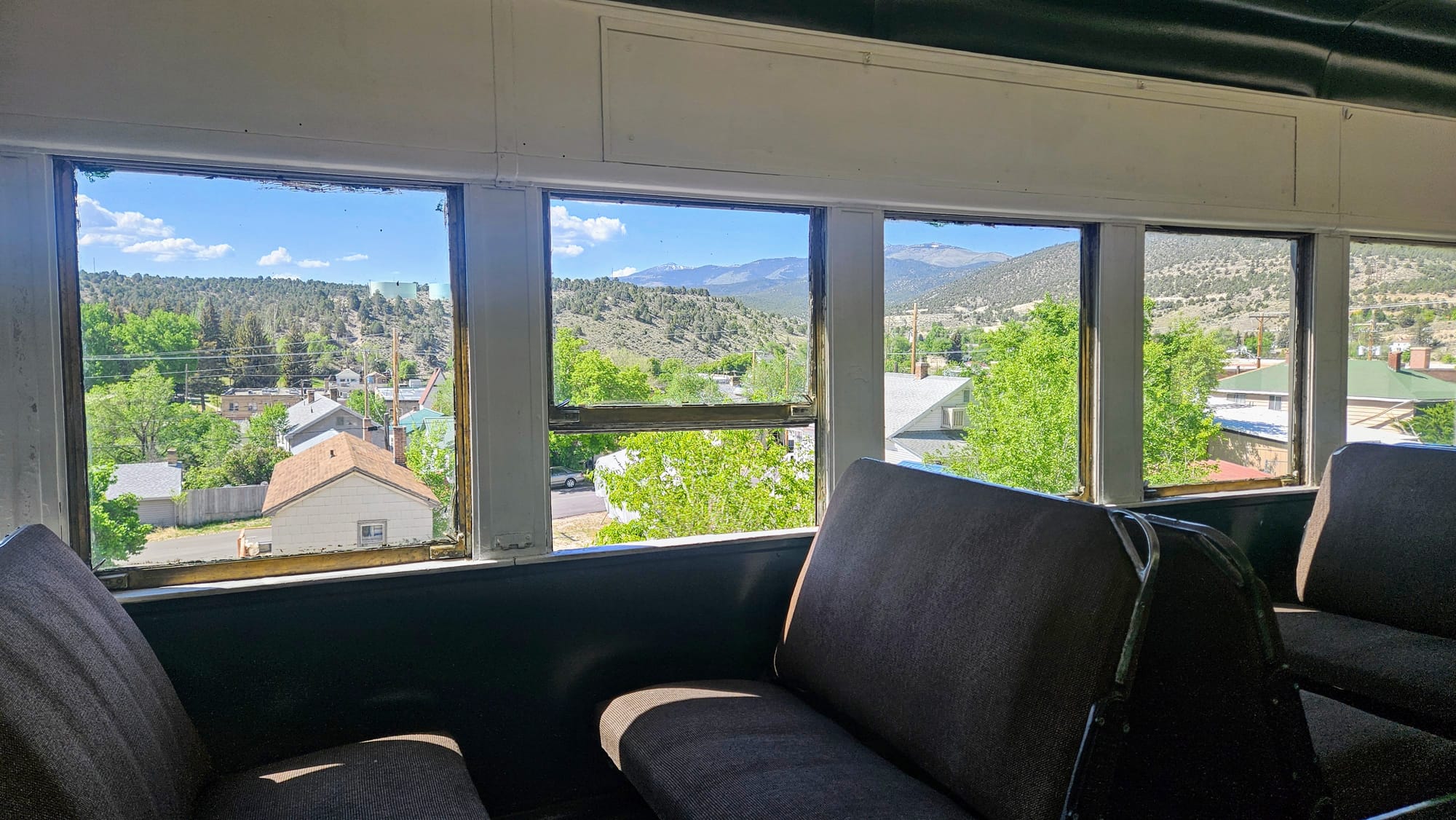
Heading through the original curved tunnel on the railway
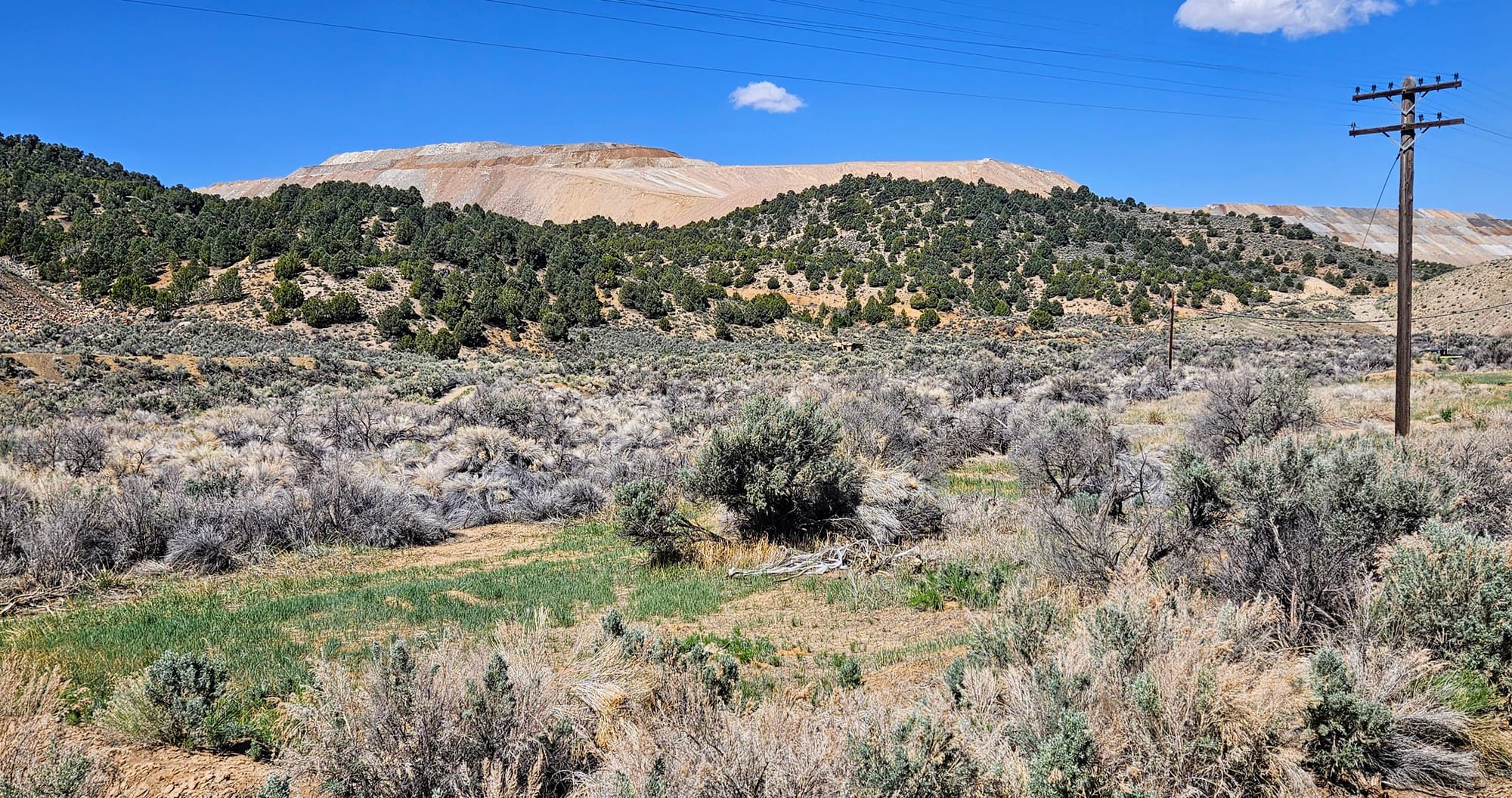
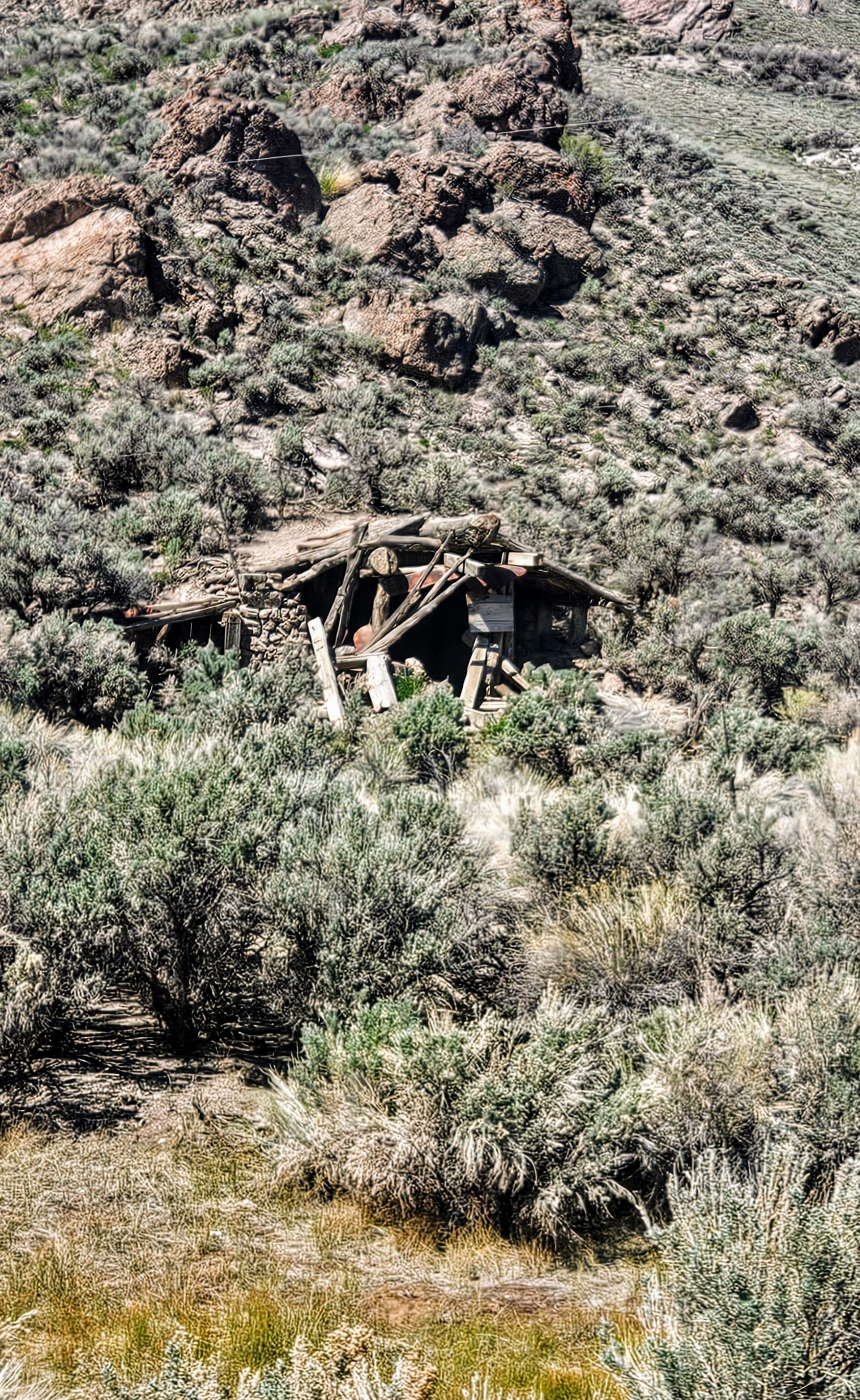
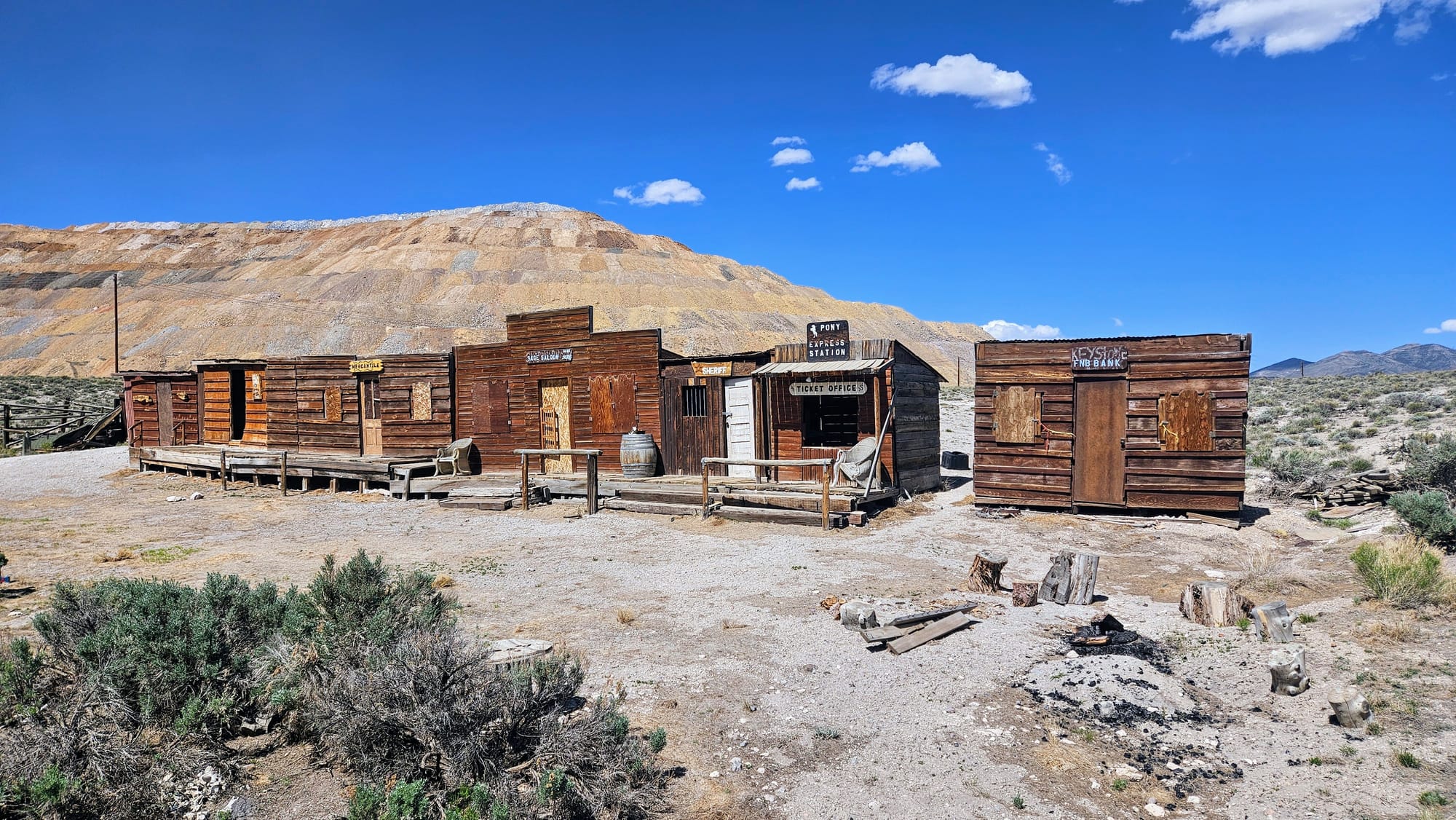
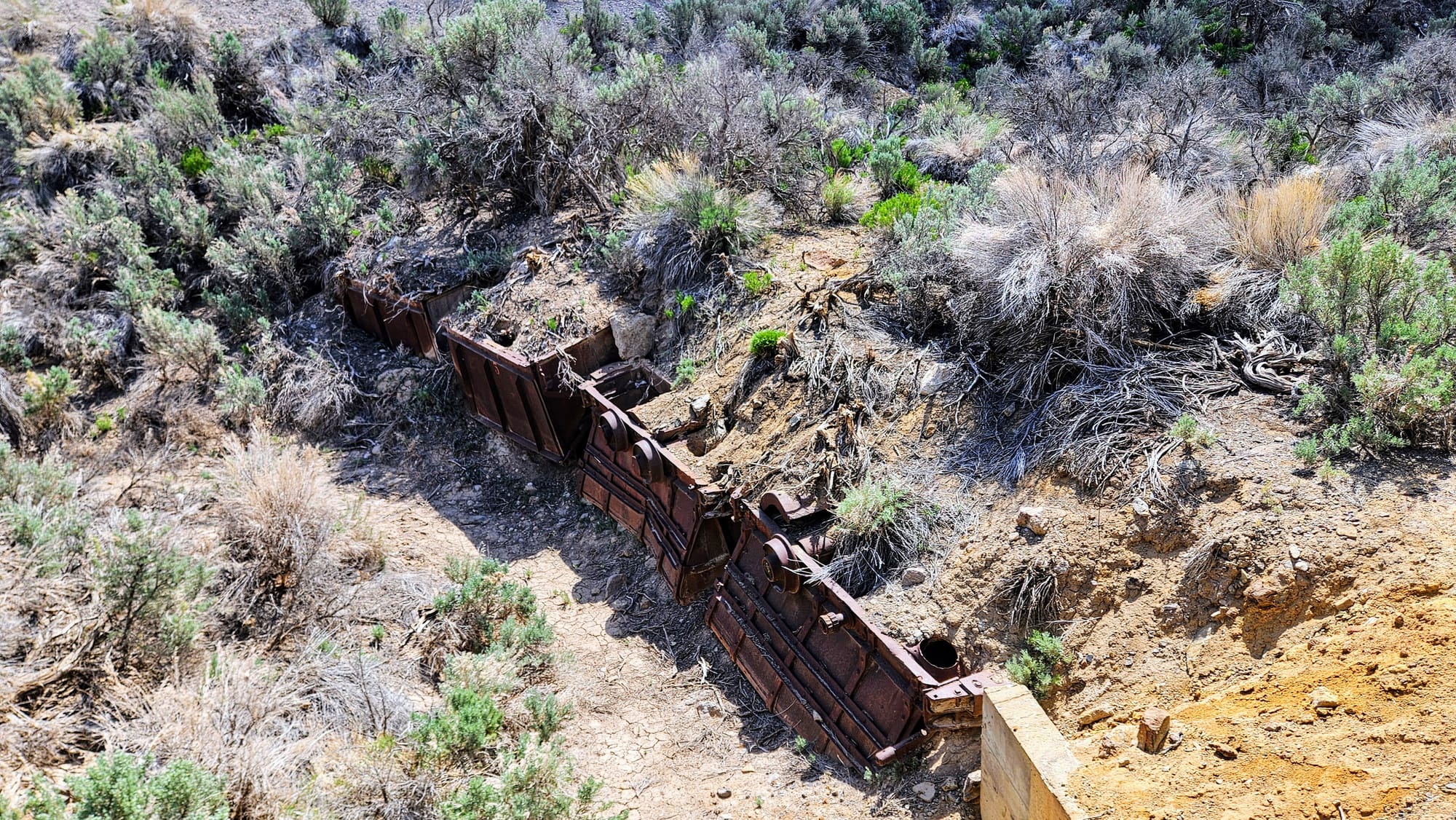
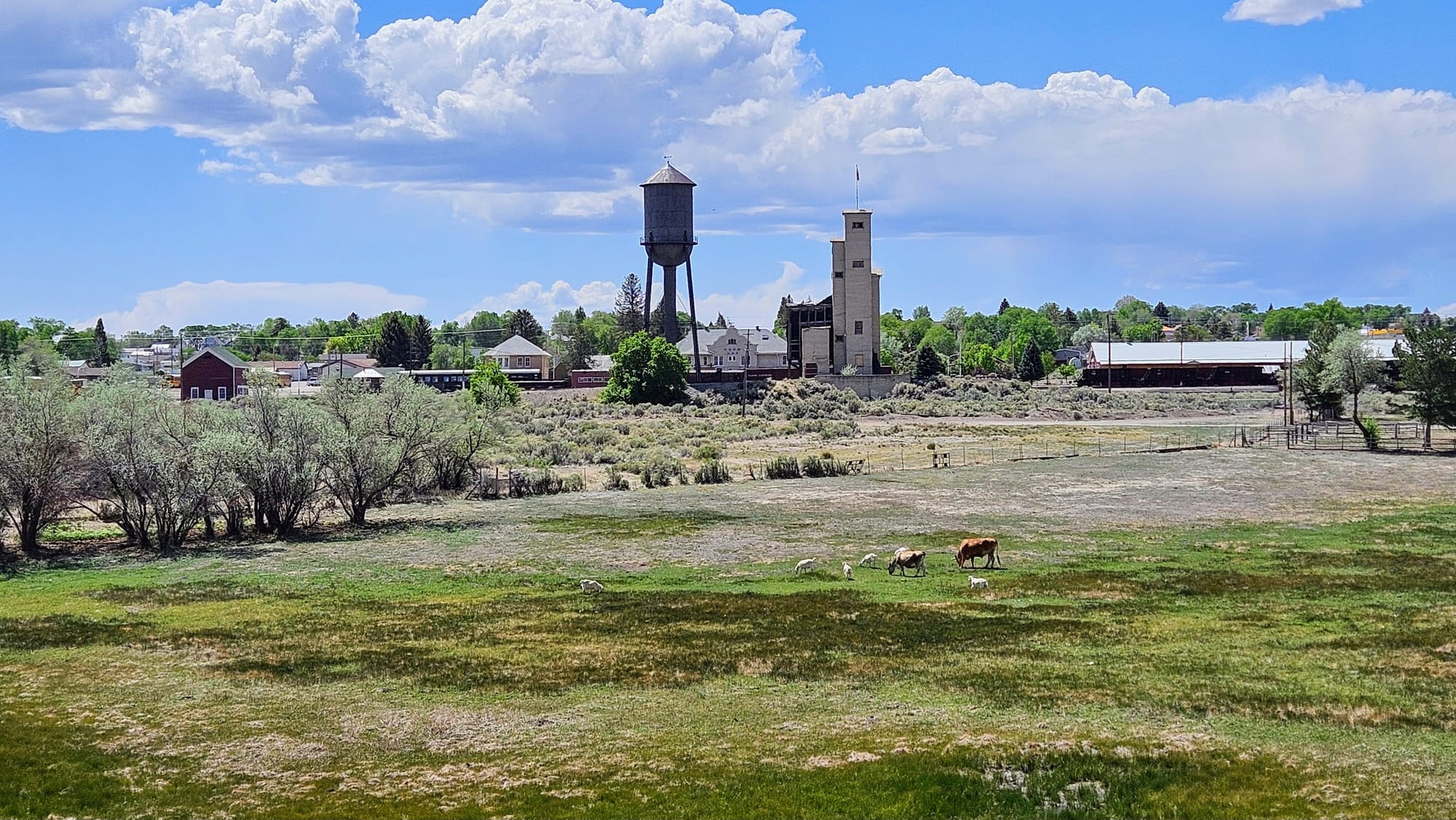
Top left: Open copper mine in the distance. Middle left: The Honeymoon Cabin. Top right: Village where the bandits would hide out. Bottom left: Old mining cars. Bottom right: Arriving back into town.
When we visited Ely, all of downtown had roadwork, so we couldn't meander as easily. However, the town is home to several murals which you can see on the sides of the buildings. Stop into the Chamber of Commerce/visitor center to get a mural map.
We had some work to get done in the afternoon, and so we headed back to camp. We did, however, have time for a lovely evening hike on one of the campground trails, with views of the mountains, and at the end, a vivid sunset shining through the distant rain clouds.
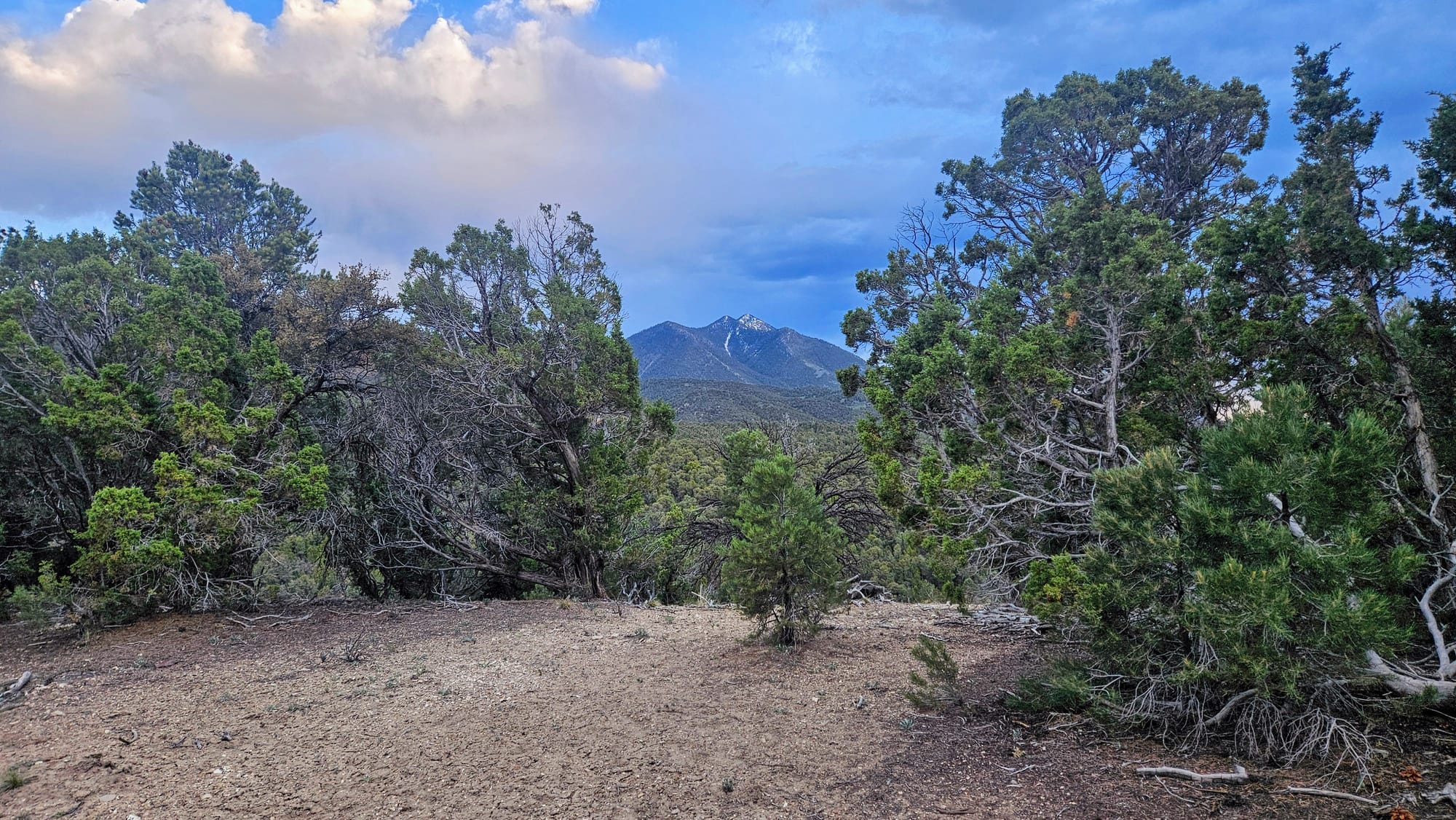
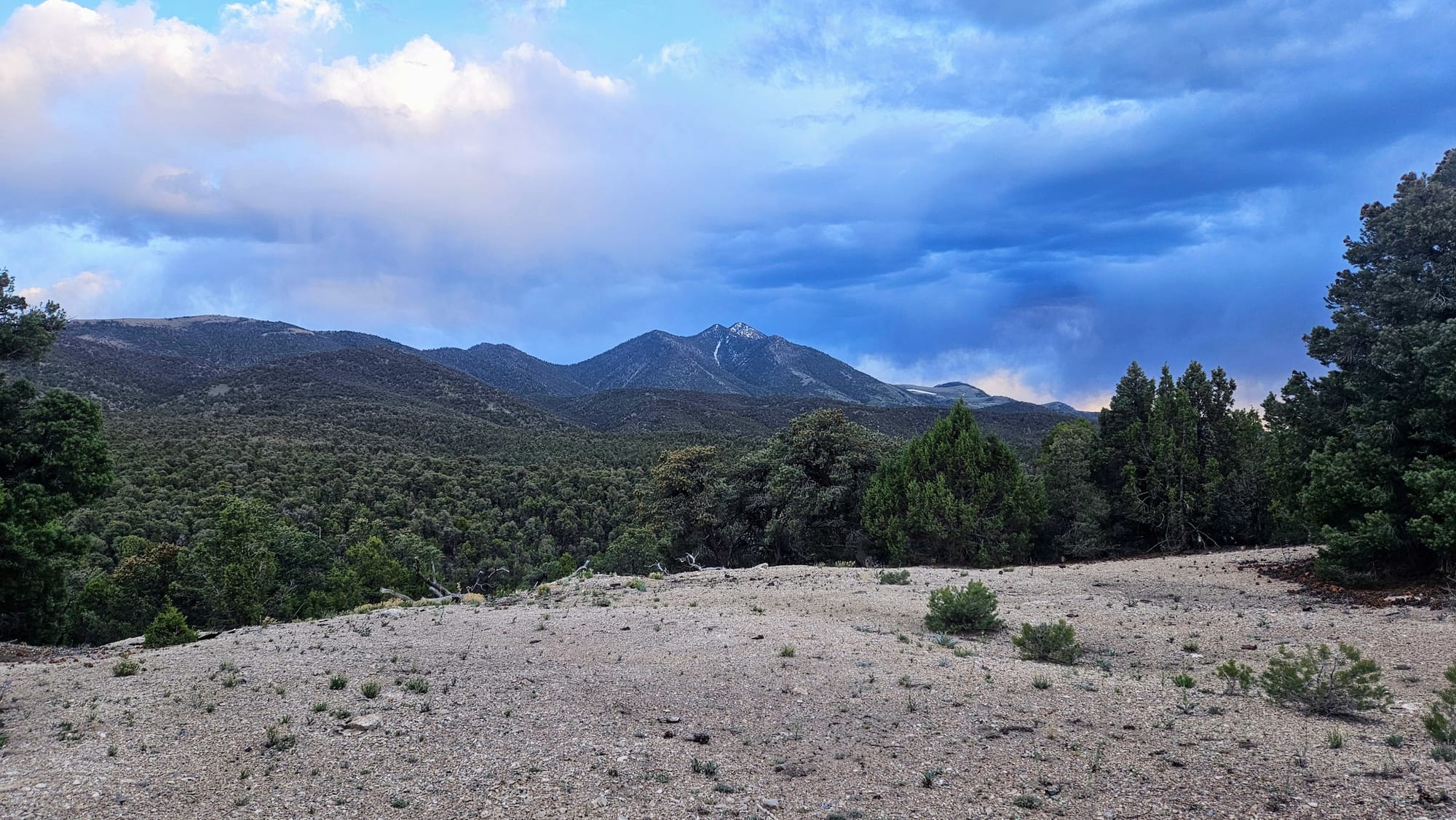
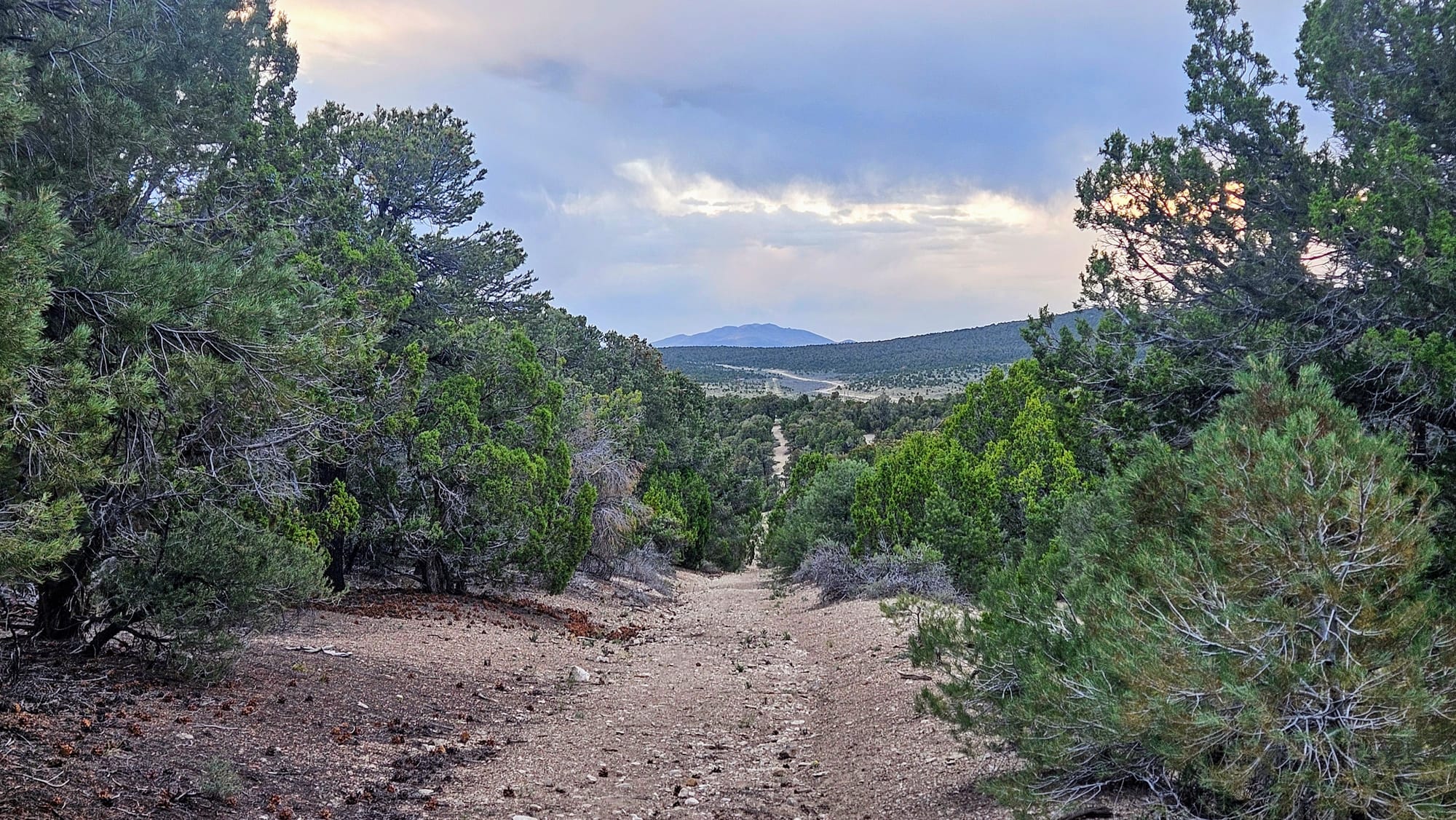
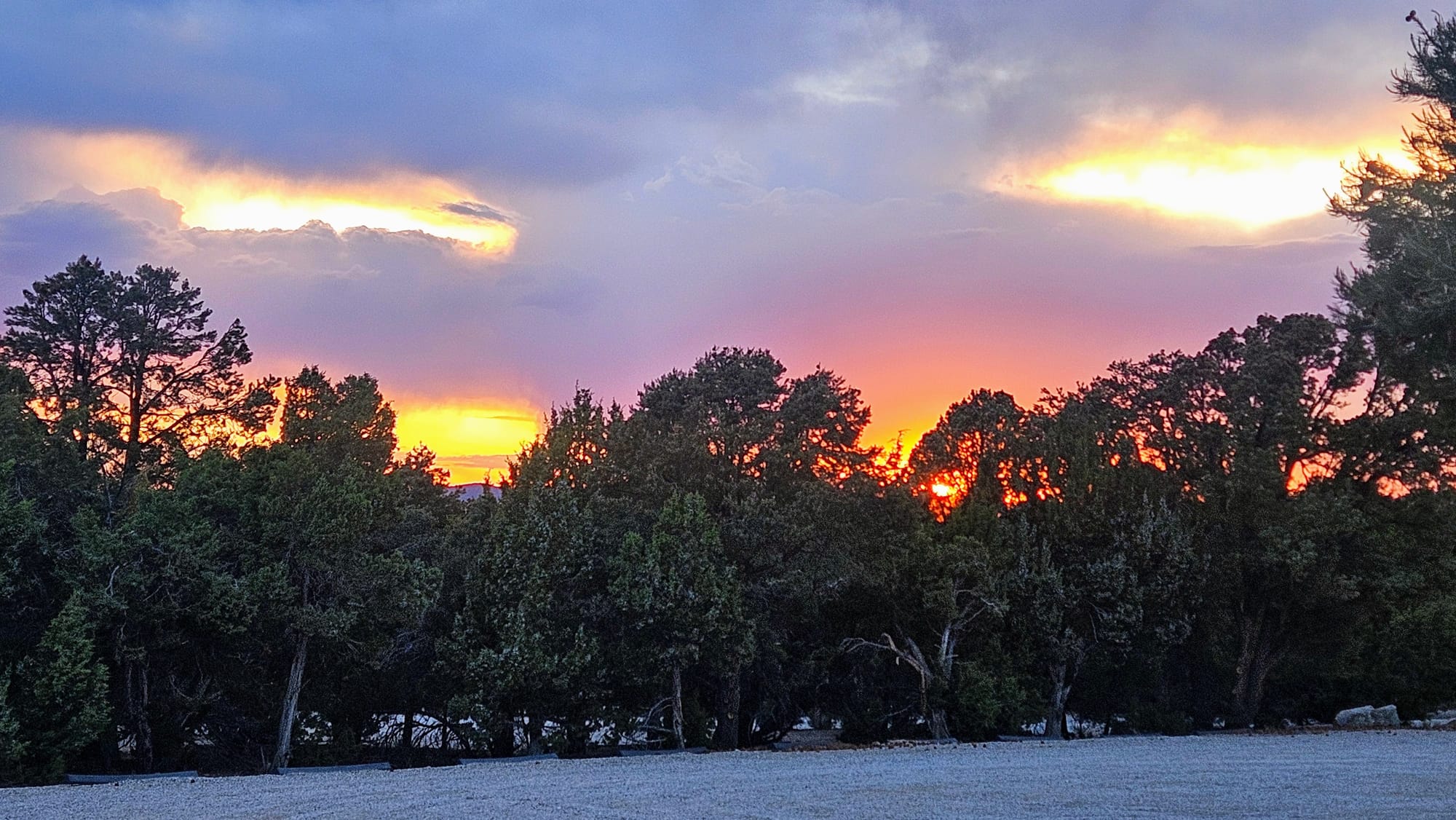
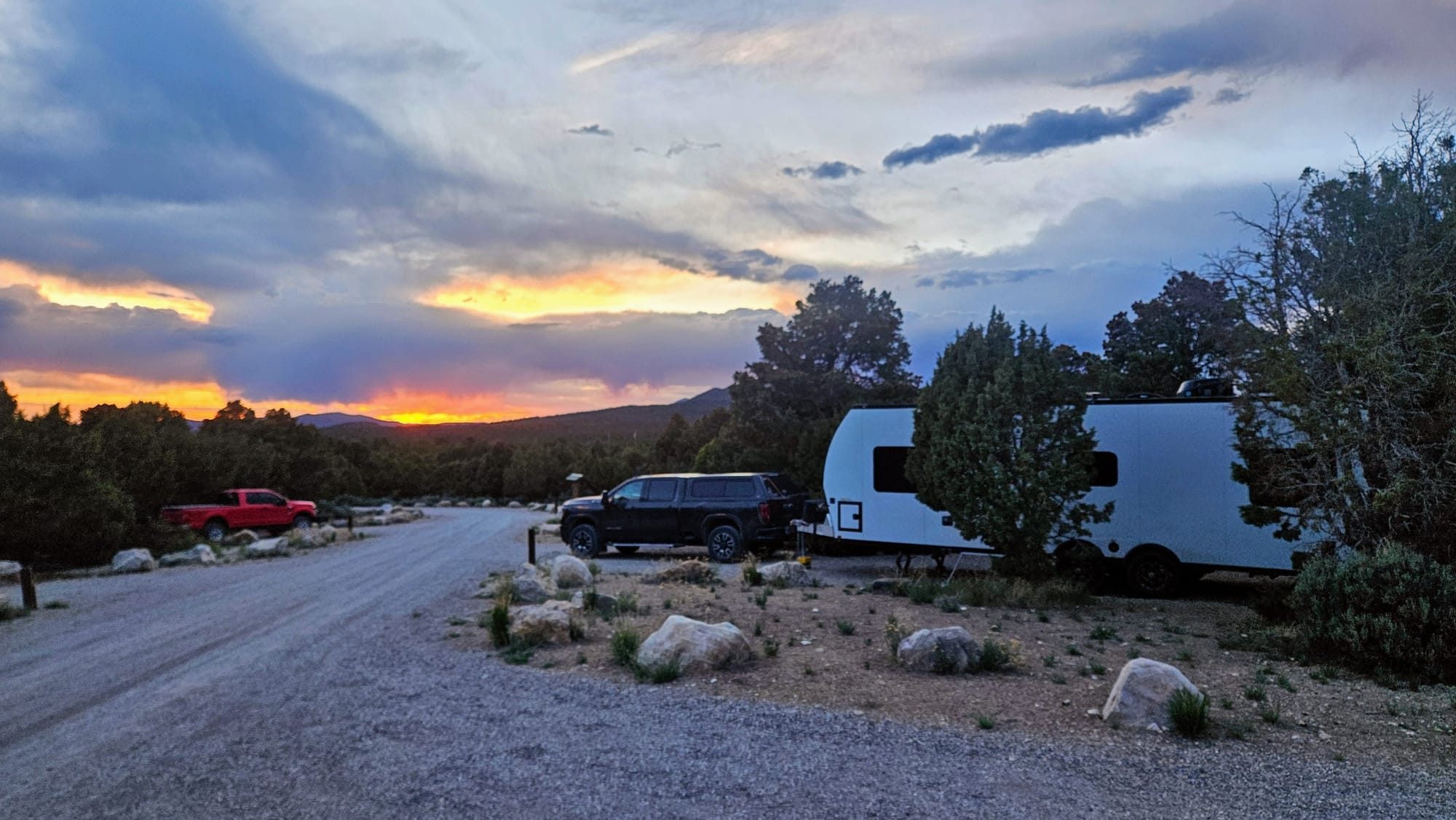
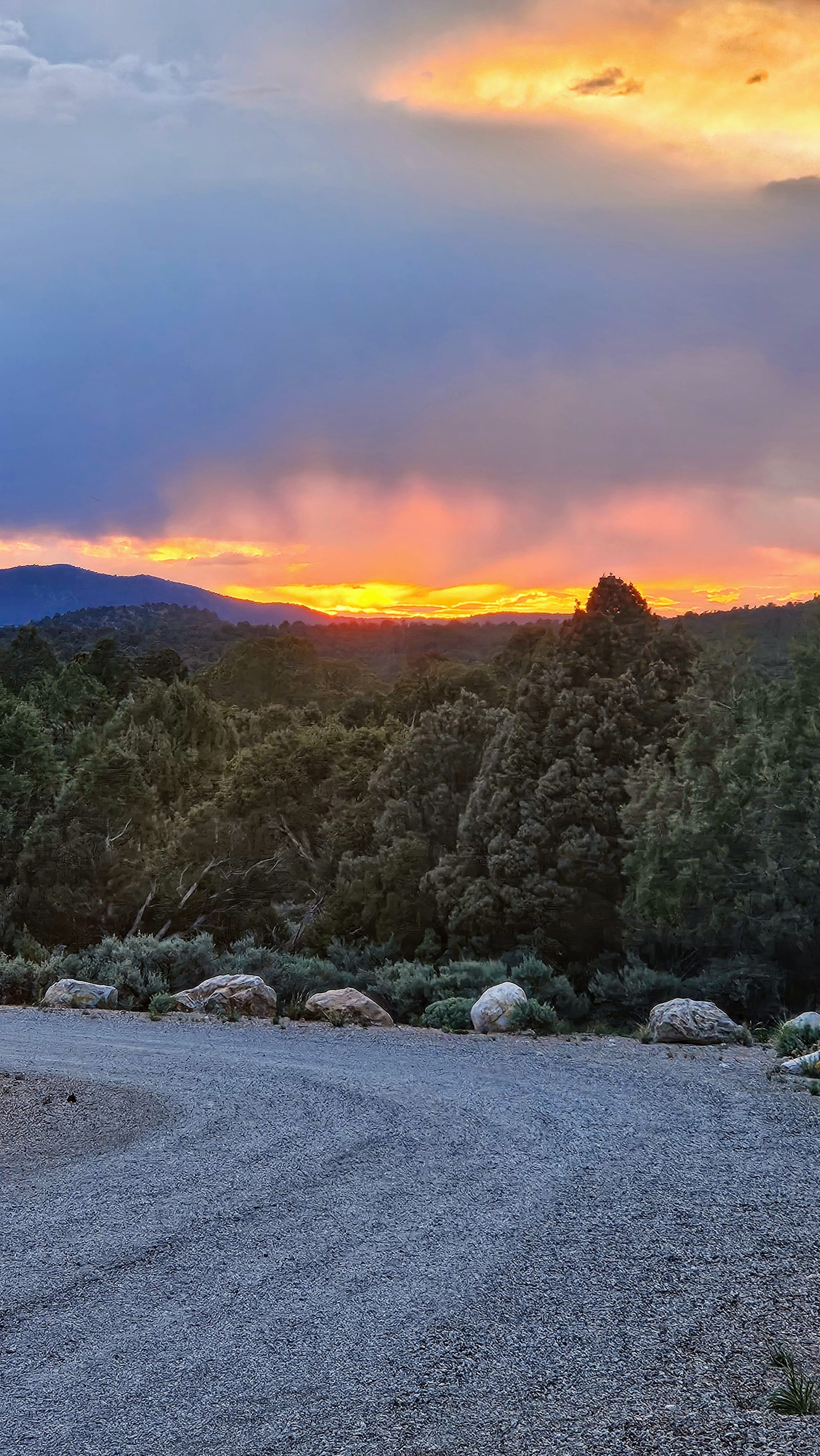
Day 4: Ely to Sacramento Pass
This was our last official drive day on the Loneliest Road, and our goal was to grab a campsite at our third first-come, first-served campground of the week. But there was still more fun to be had on the journey, before reaching that destination.
Stop 1: Ward Charcoal Ovens State Park
You've probably noticed by now that mining was huge in Nevada. It isn't called the Silver State for nothing! But this silver production wouldn't have reached its full potential if it weren't for the smelting process to extract the metals from the ore. This was accomplished by heating the ore and introducing a reducing agent: carbon. Where did this carbon come from? Charcoal.
The Ward Charcoal Ovens played a pivotal role in the burning of wood to make charcoal, which was used in this smelting process. There are other charcoal ovens found in Nevada, but these are some of the largest and finest quality. We couldn't wait to see them in person and get a really cool science and history lesson.
Ward Charcoal Ovens is about 7 miles off US50 down an unpaved road. In dry conditions, it's very doable for RVs, and there is even a campground in the state park. We satellite viewed the day-use parking area to make sure there was enough room for our RV, and like so many stops along this stretch of highway, the parking was a massive, open lot. We made the state park our pit stop for the day.
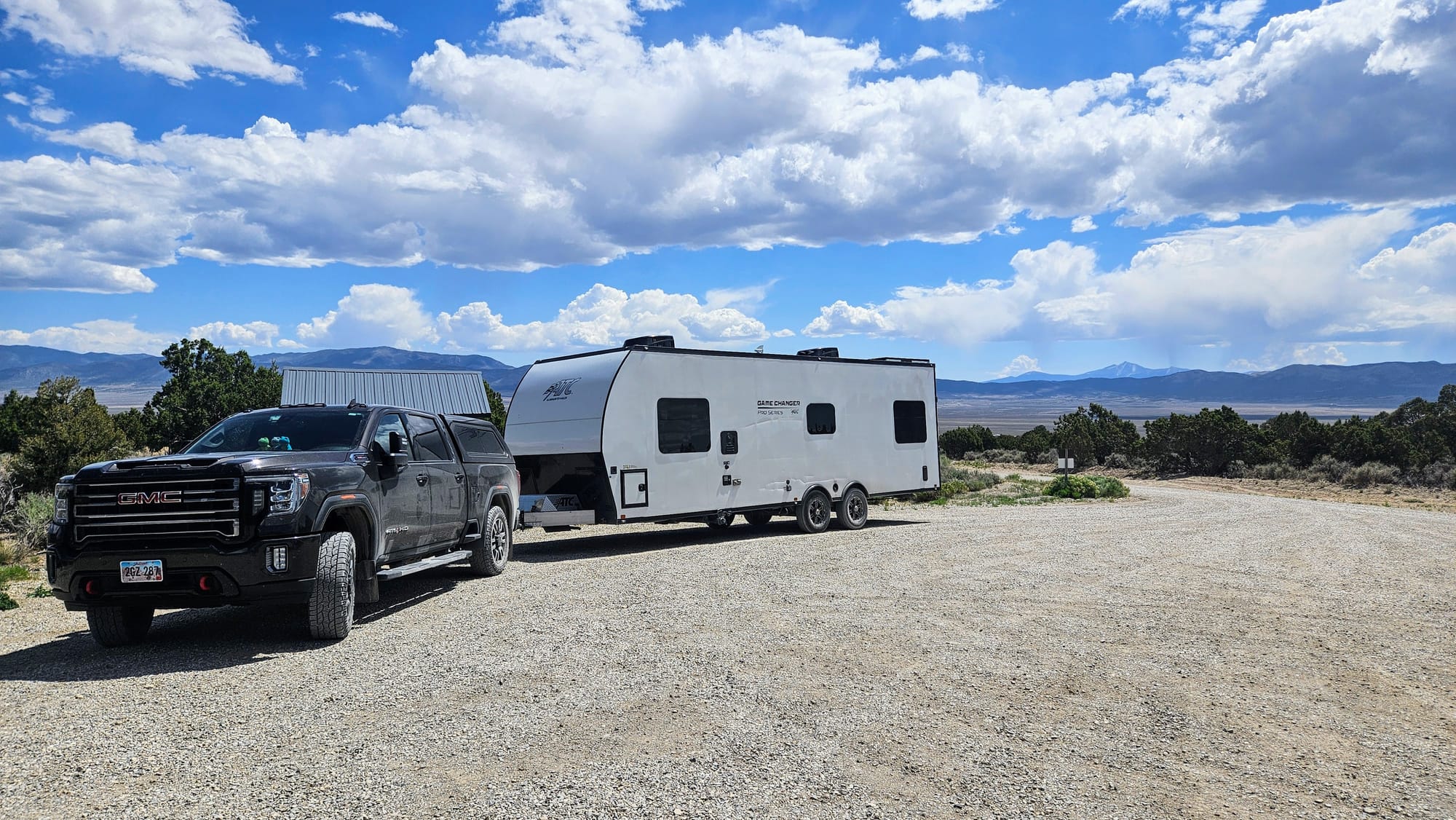
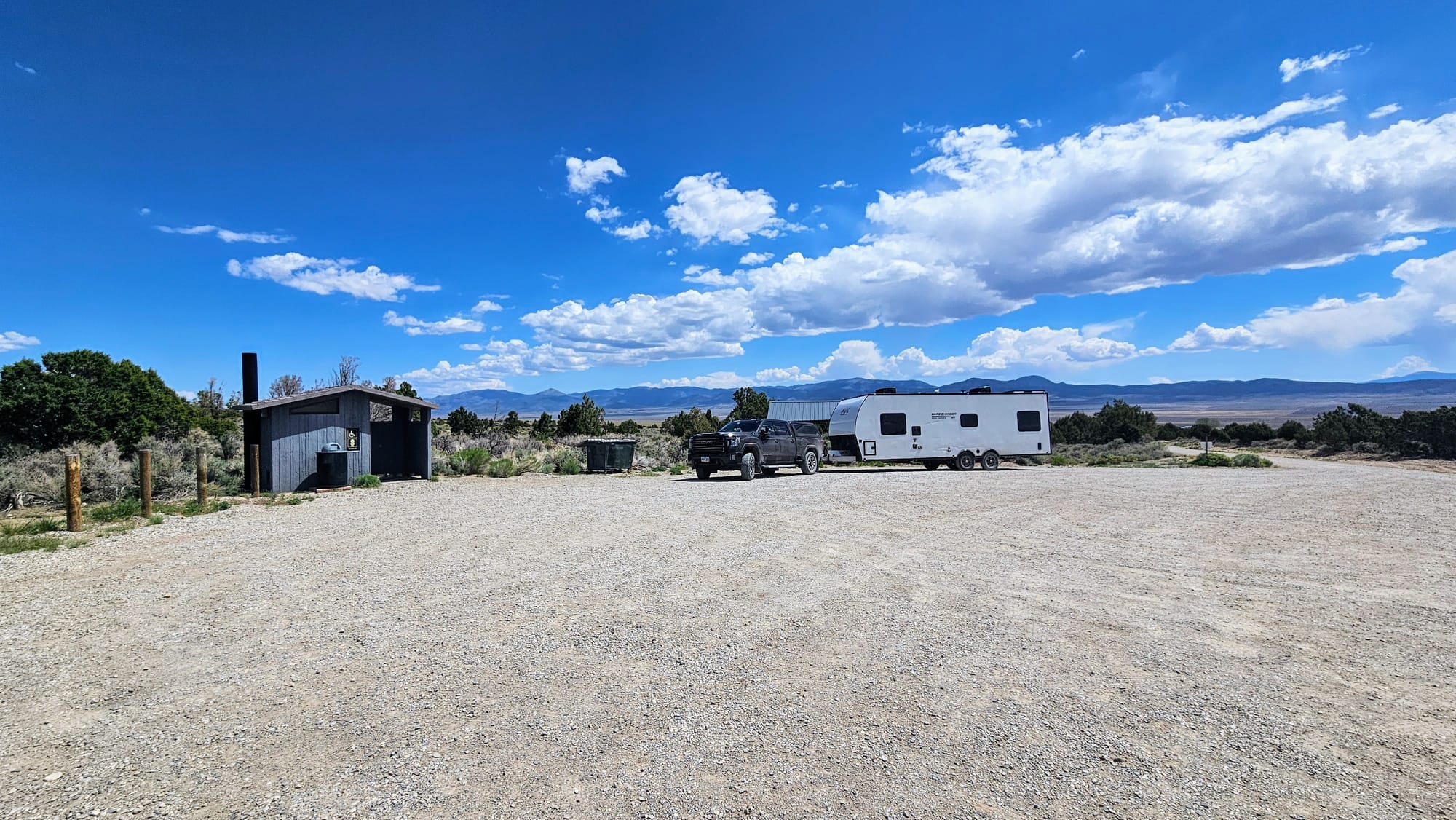

Nevada State Parks are notorious for charging for even the shortest visit, which was the case here. Residents pay $5 and non-residents pay $10. We made the most of our stop by exploring the ovens and taking a short nature trail to Willow Creek.
The ovens are 27ft in diameter and 30ft high. They fit about 35 cords of wood at a time. That was about 6 acres' worth of trees, meaning that for a while, the surrounding land was entirely depleted of timber, and the trees are still growing back today. The burning period took about 12 days and produced 50 bushels of charcoal per cord of wood. In total, the 6 ovens here could produce 10,500 bushels of charcoal in 12 days!
Exploring the ovens gave us new insight into the thriving mining industry that we had been hearing so much about as we traveled the Loneliest Road.
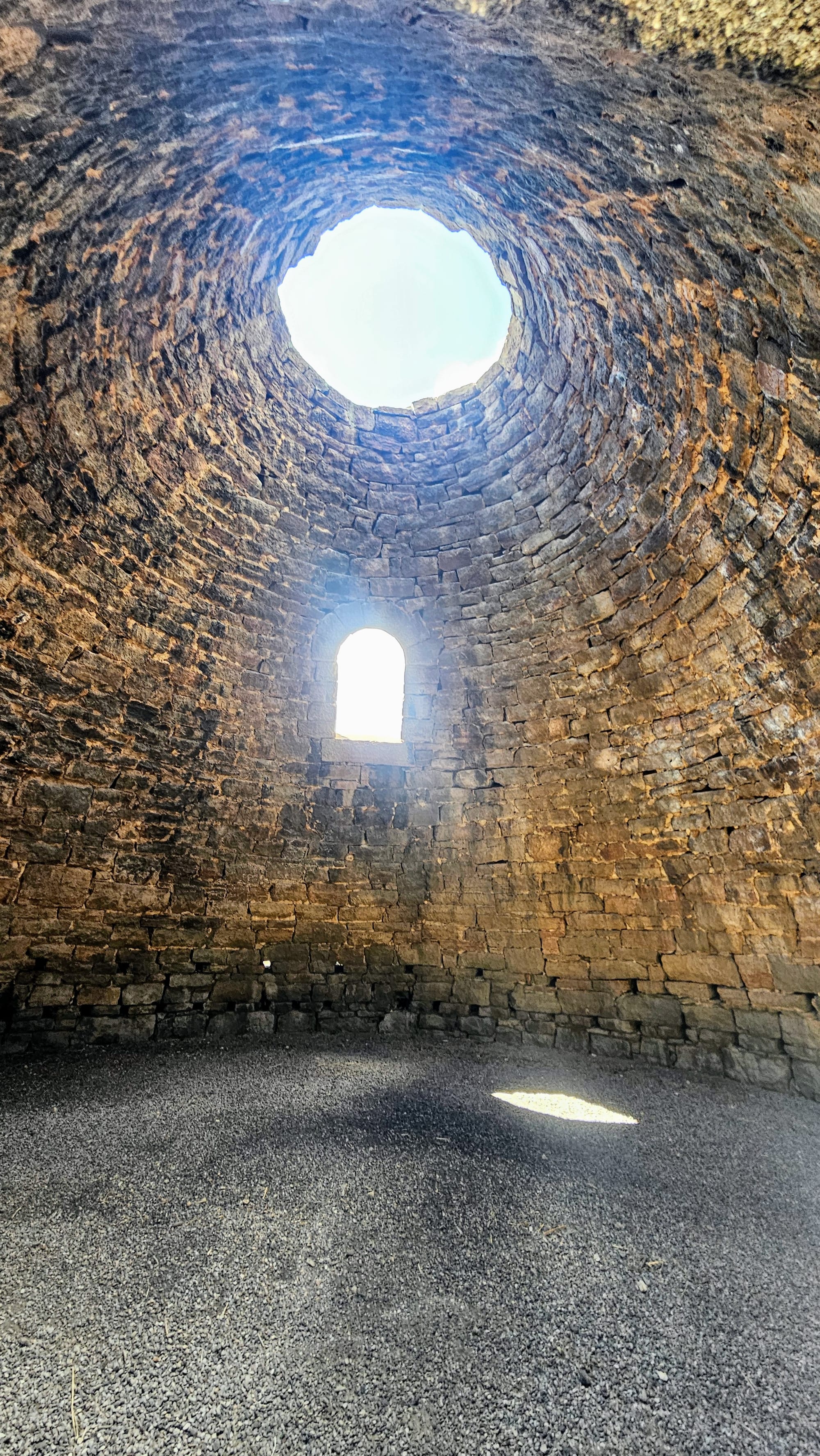
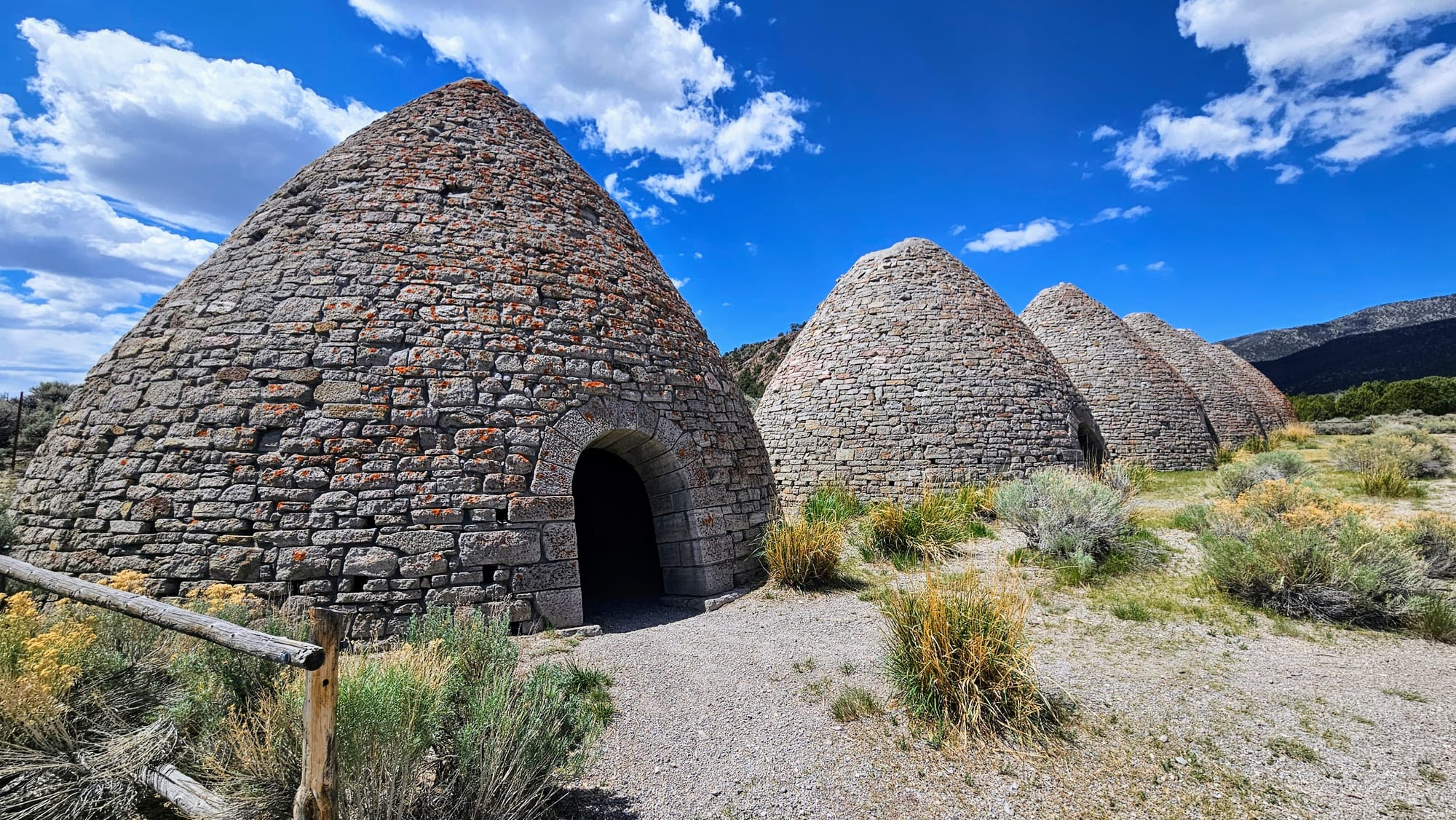
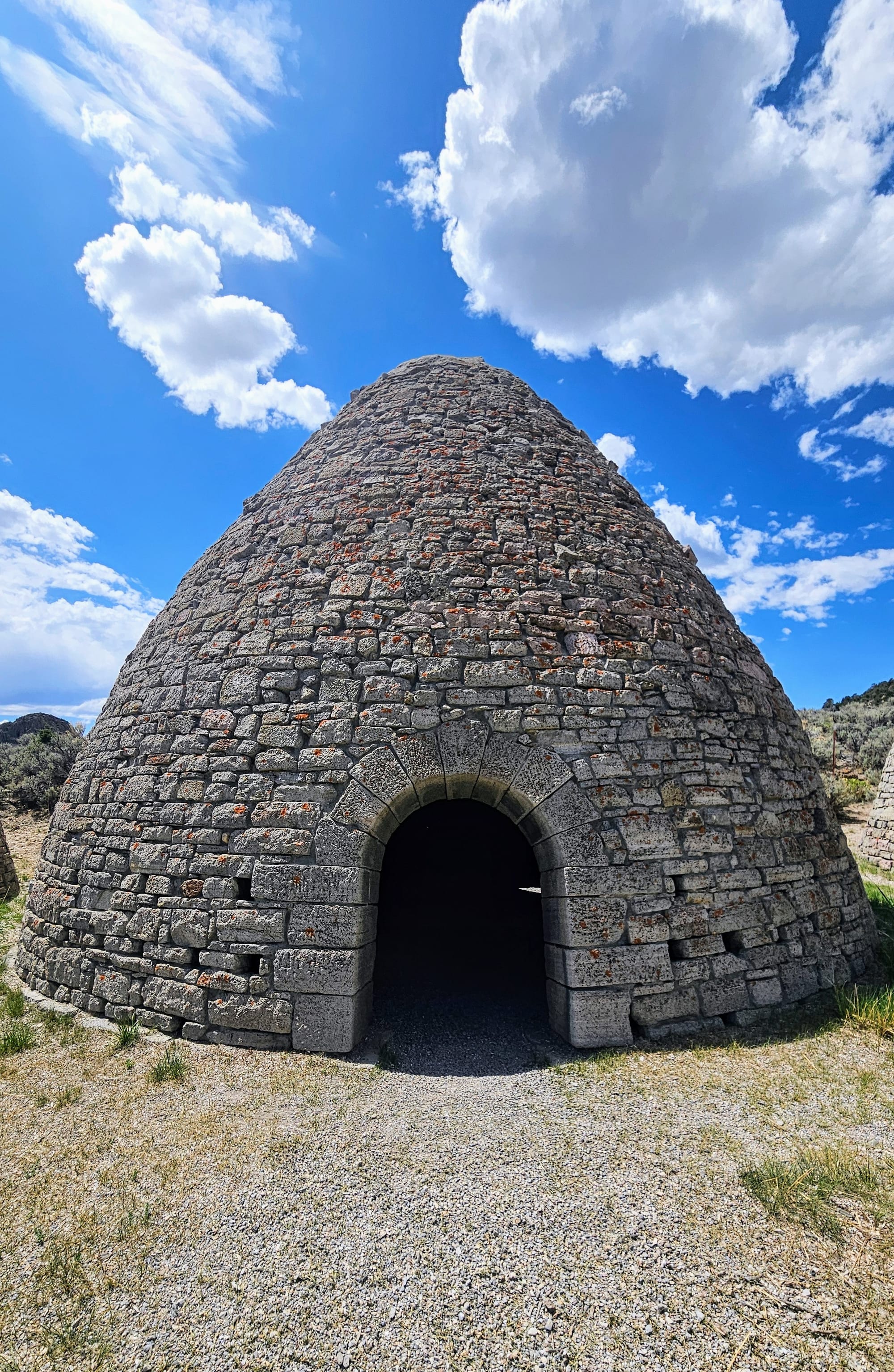
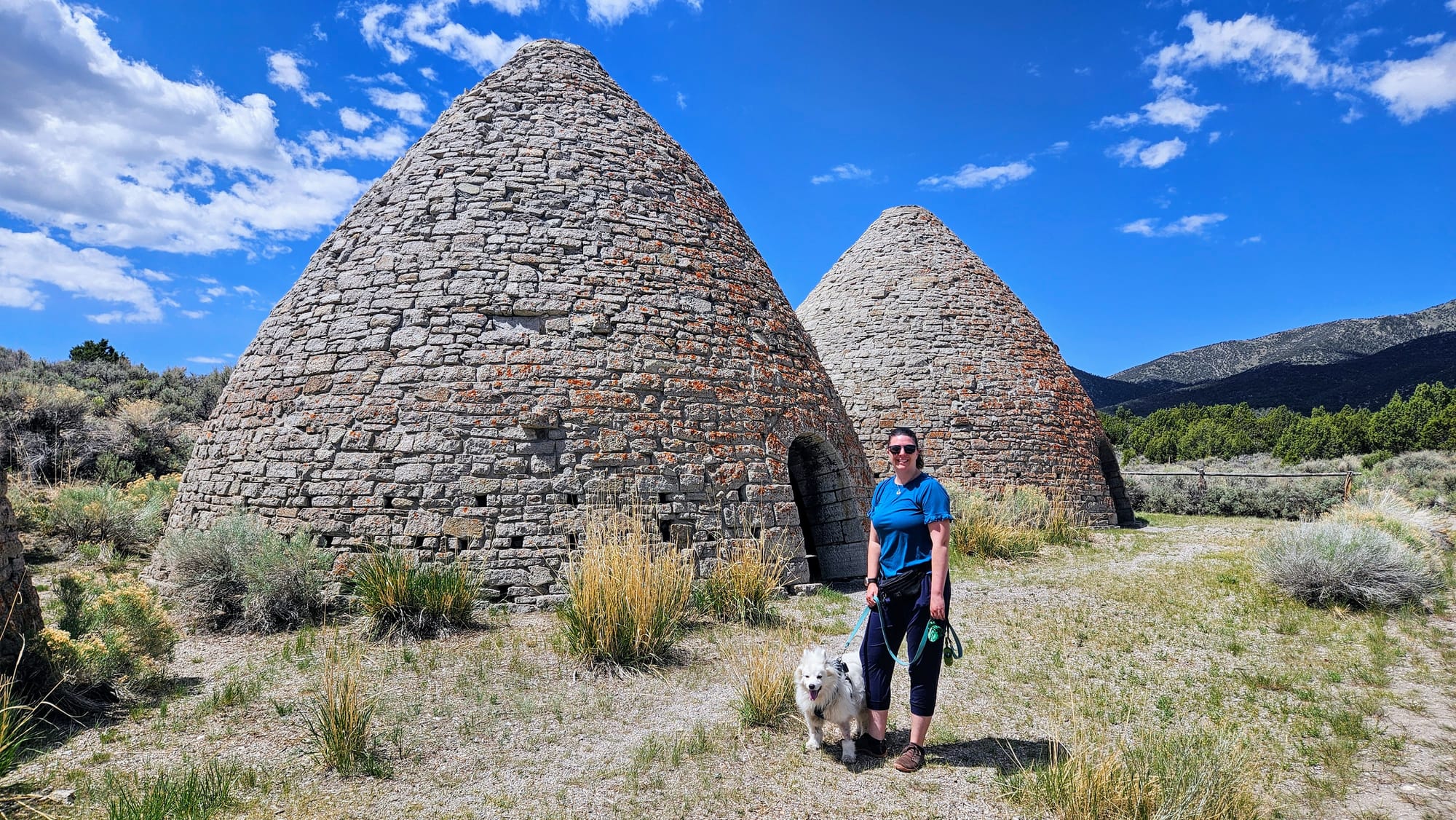
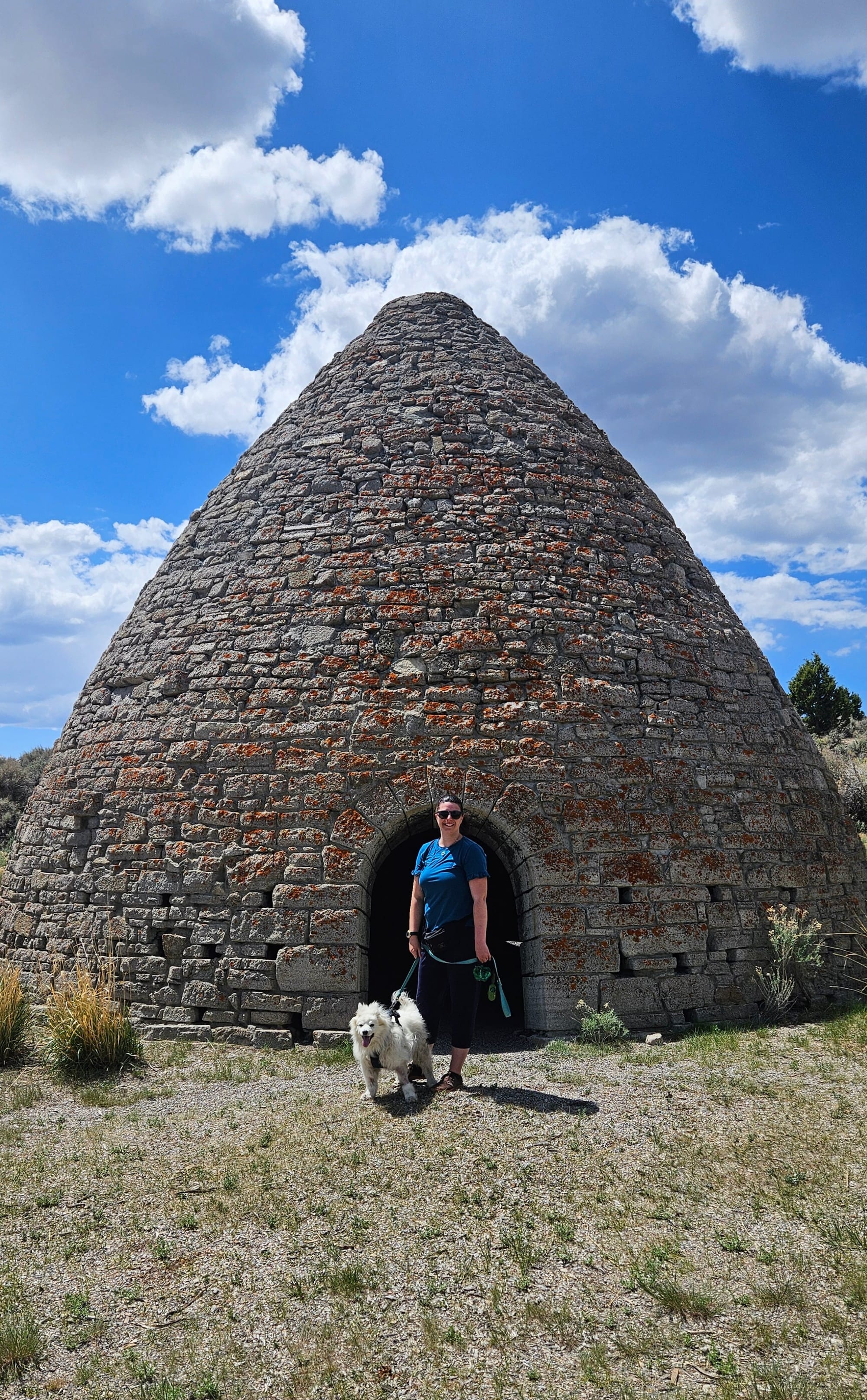
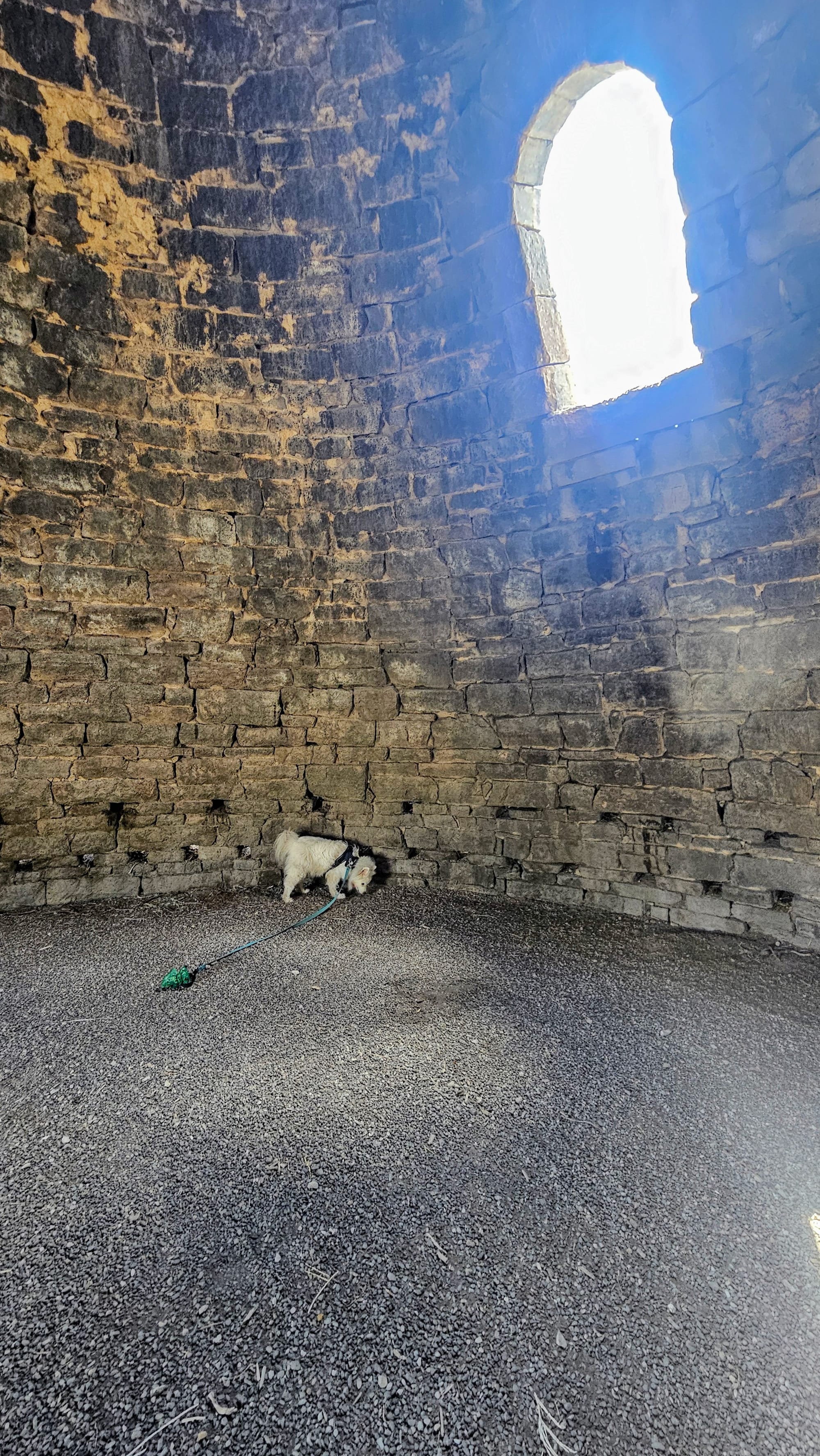
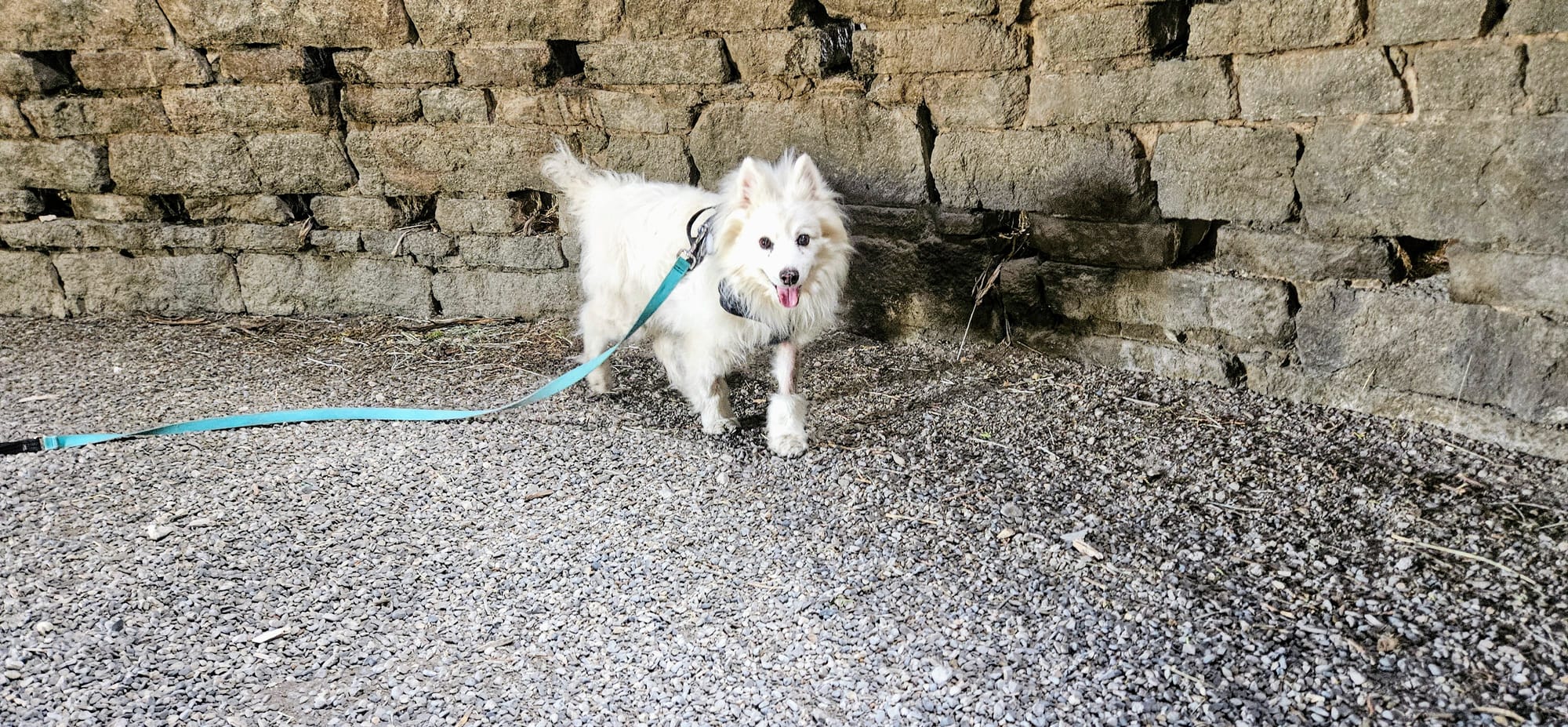
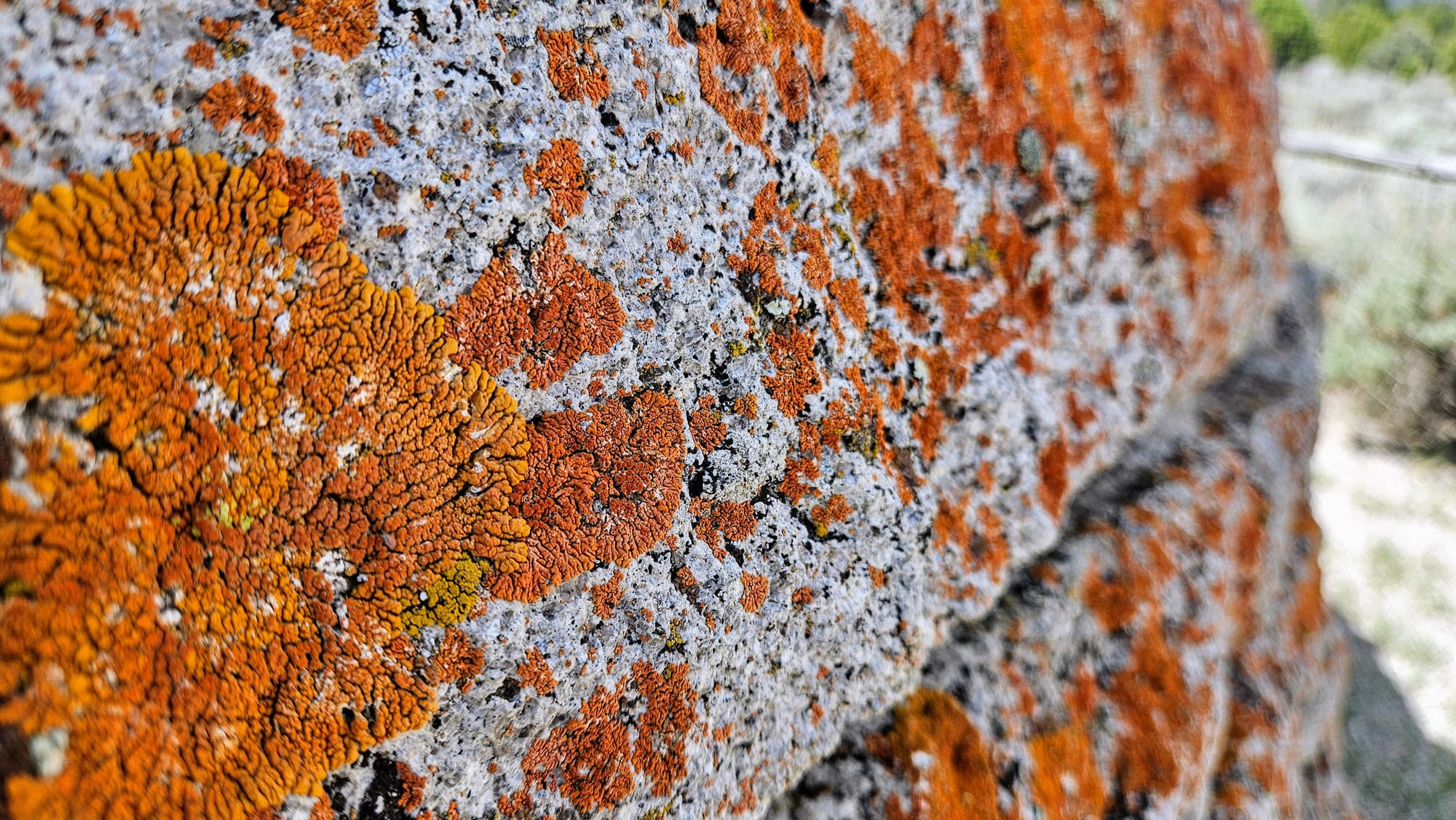
Just past the ovens is the Willow Creek Trail, a half-mile loop with views of the outcroppings from which the stones to build the ovens were quarried. The rocks are made from volcanic ash flows and are light and porous. We also passed Willow Creek, a little oasis in the arid surroundings.
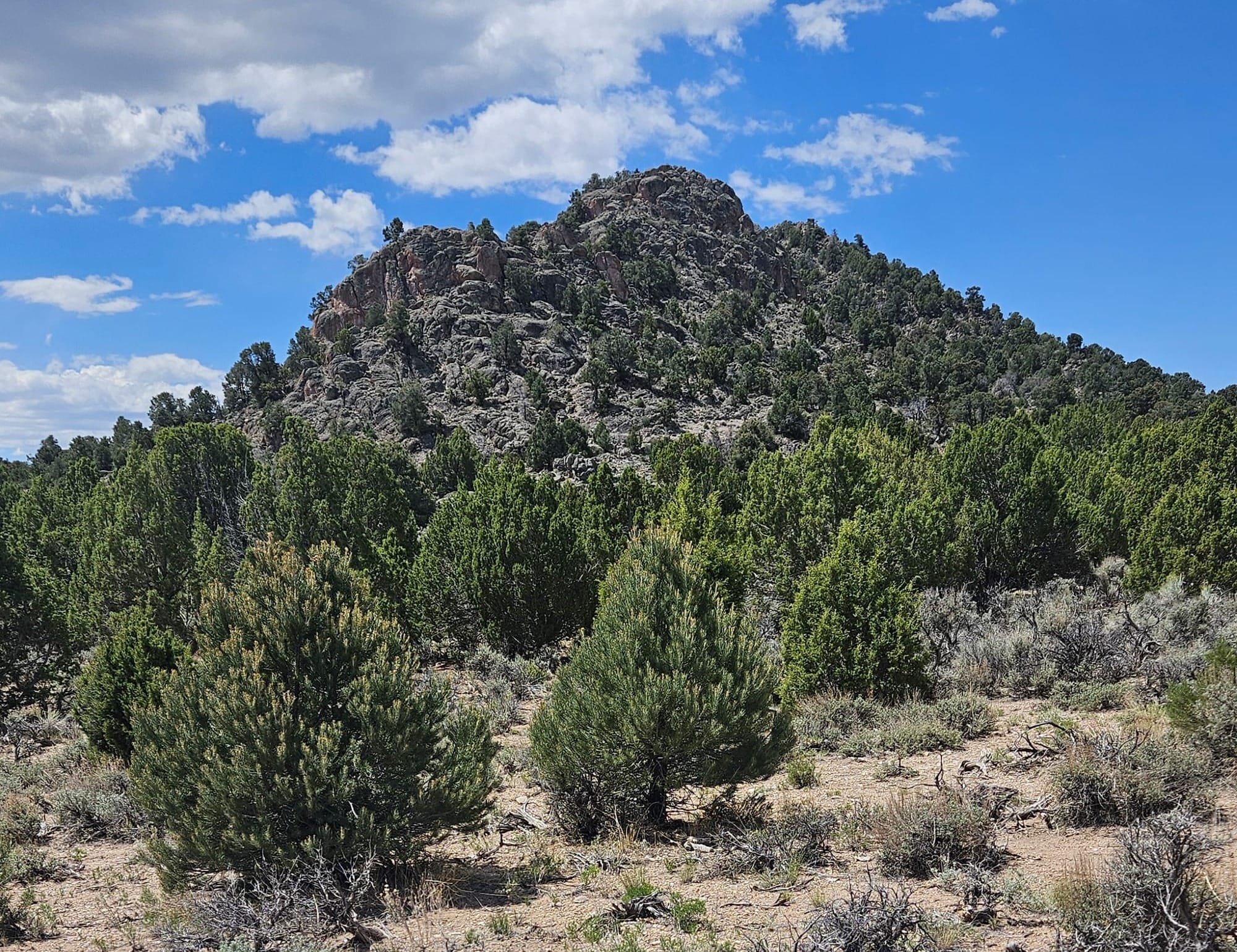
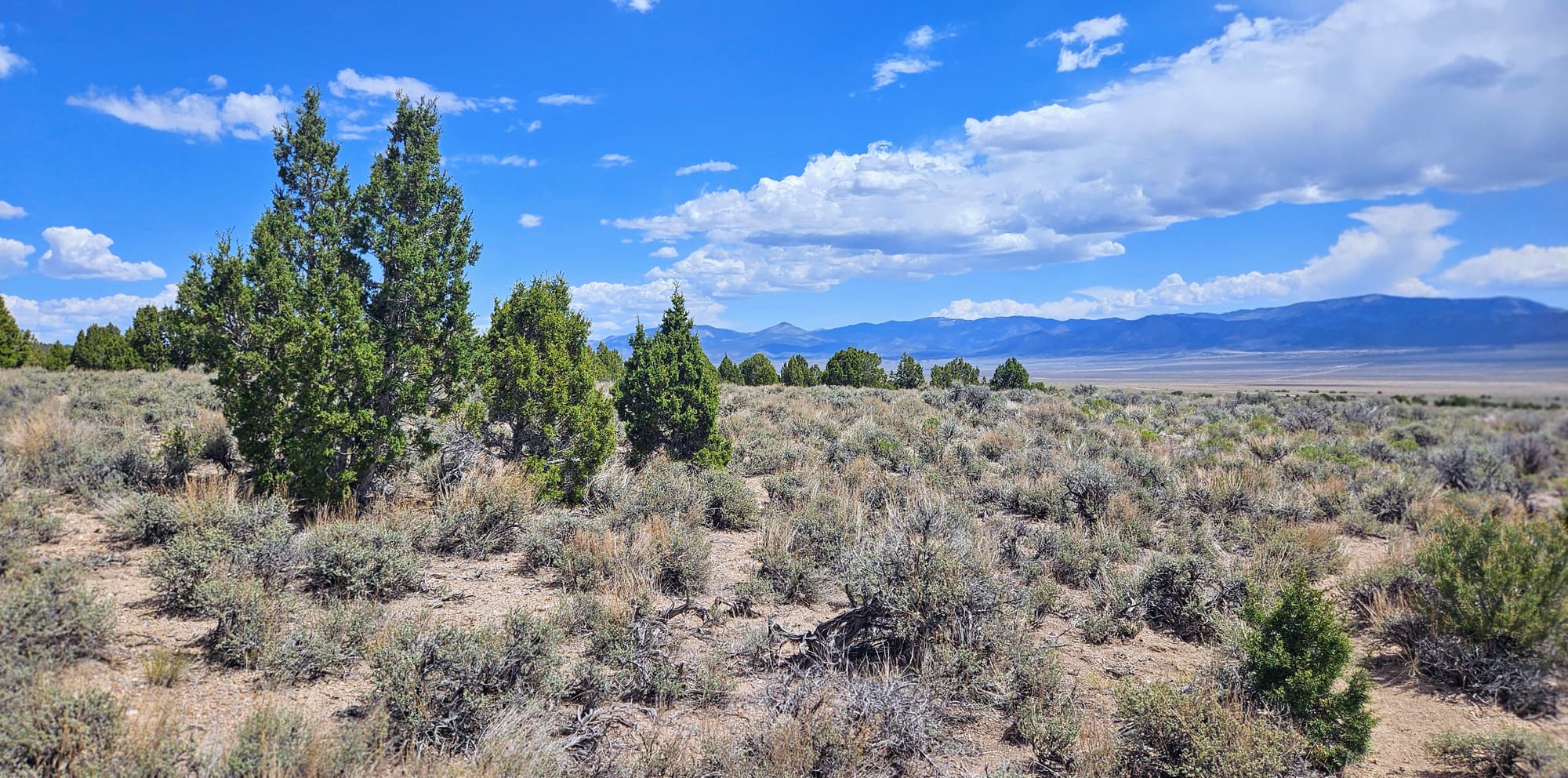
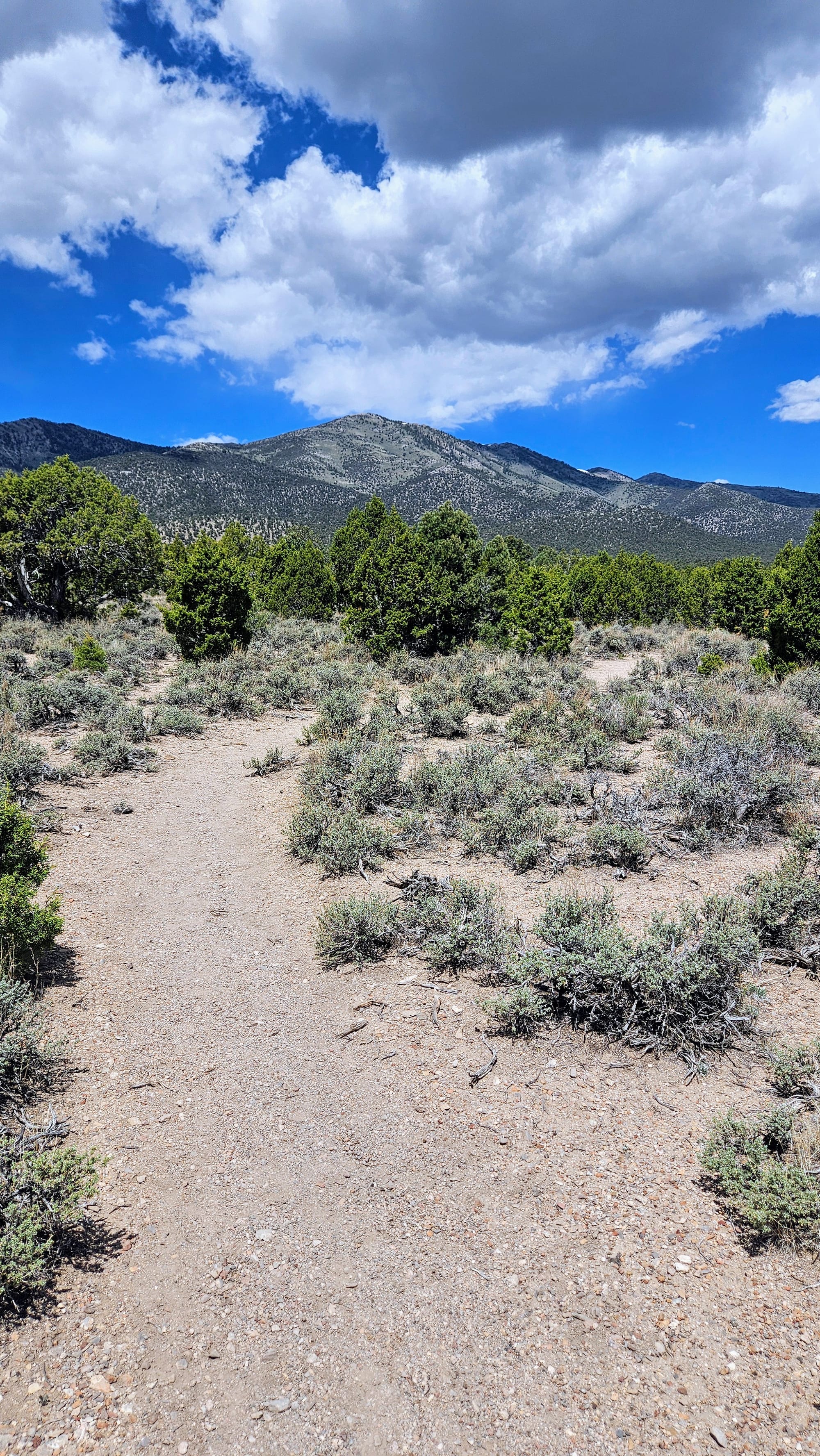
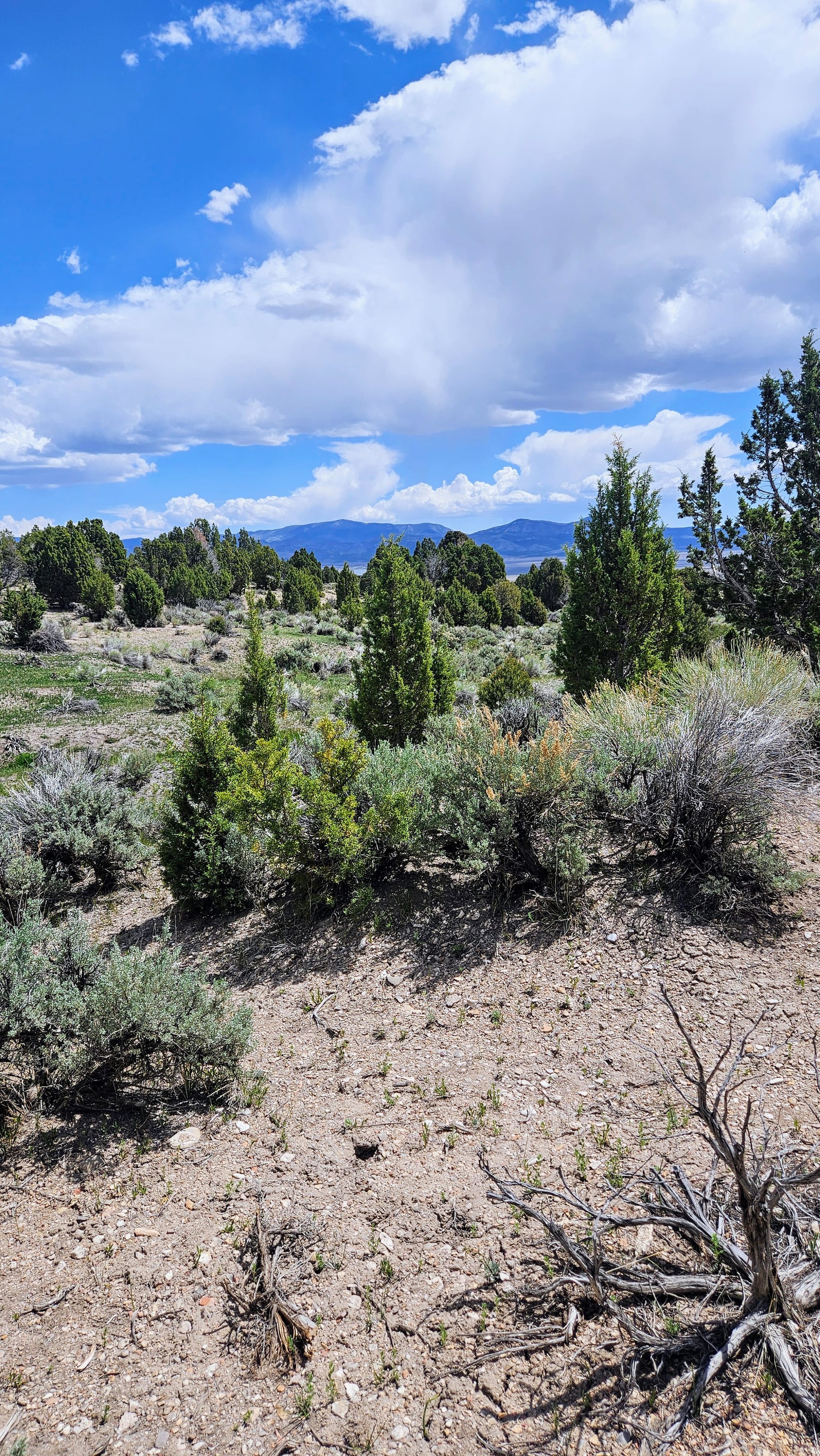
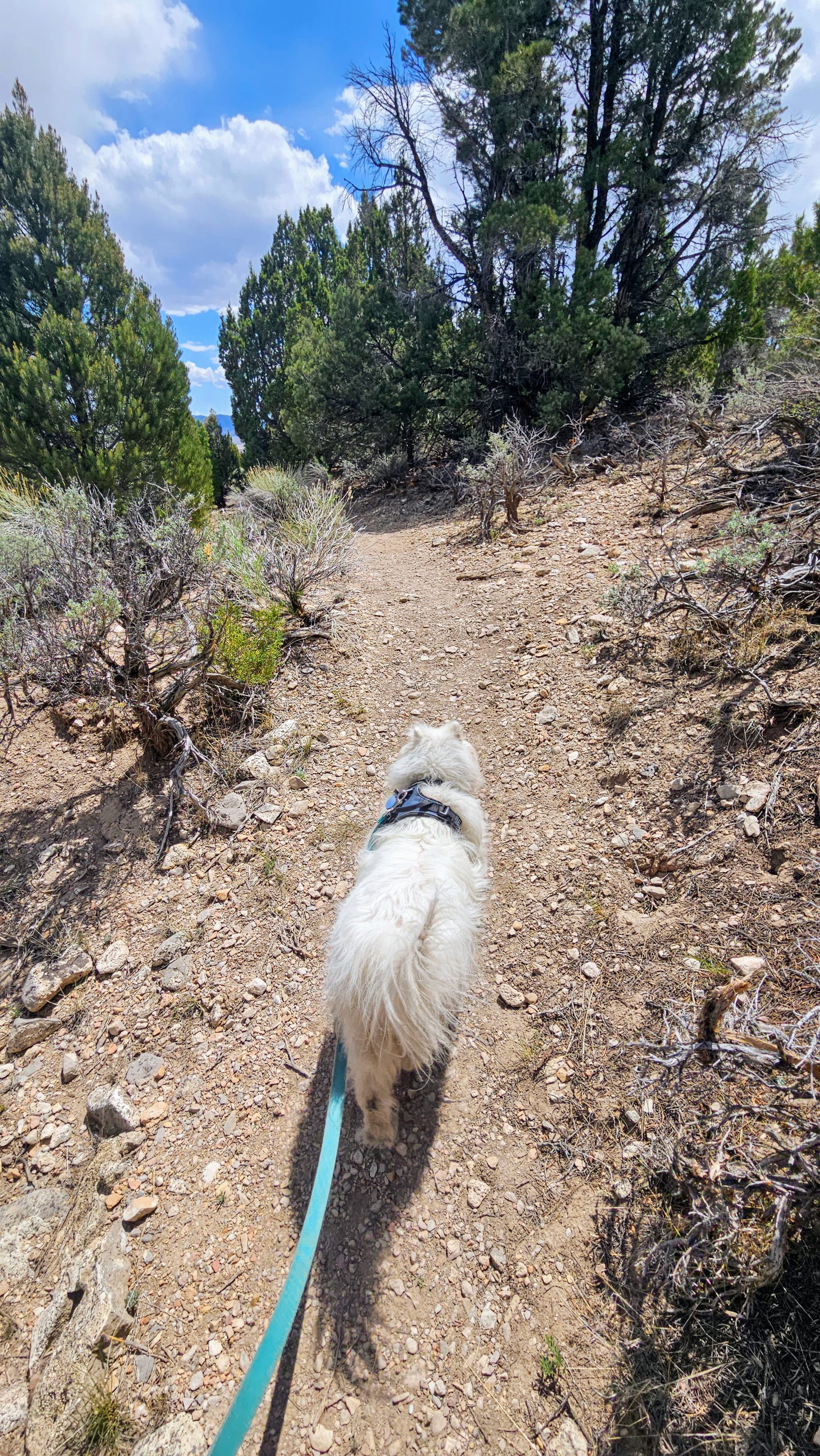
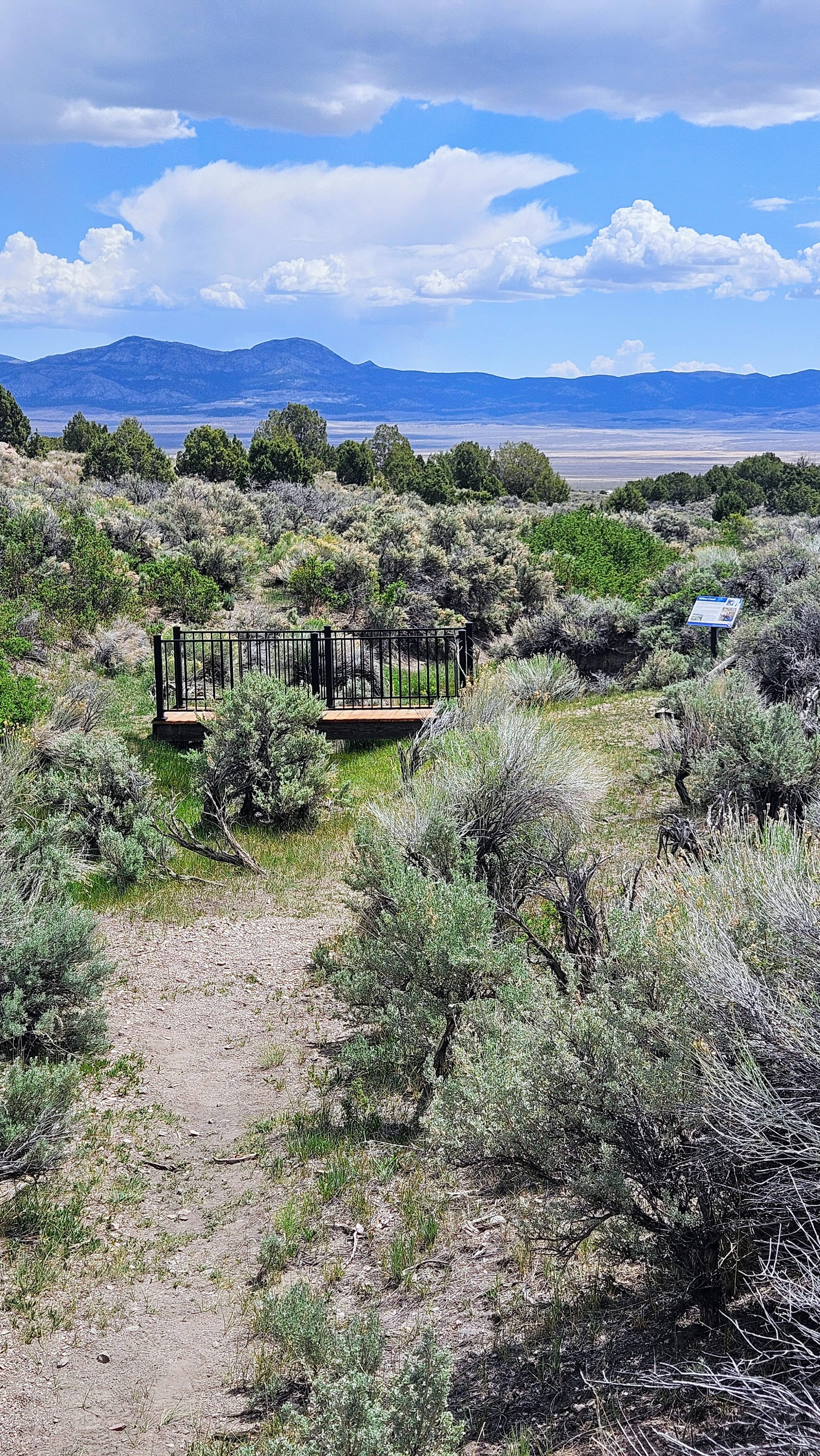
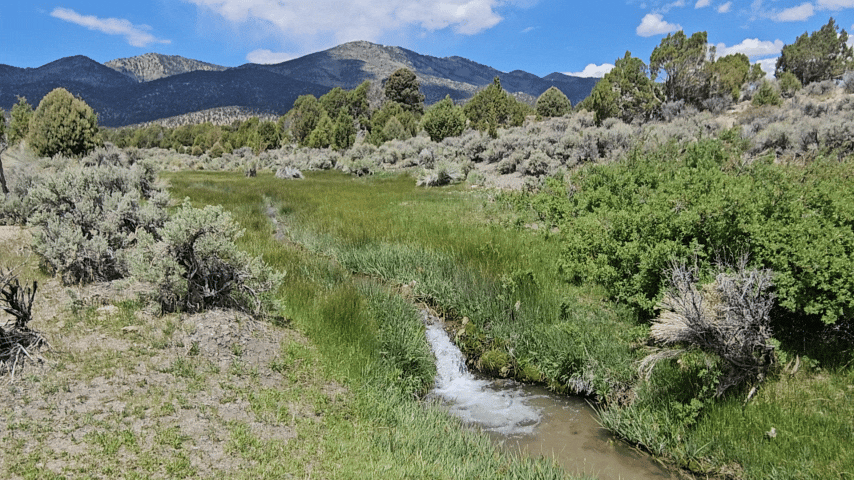
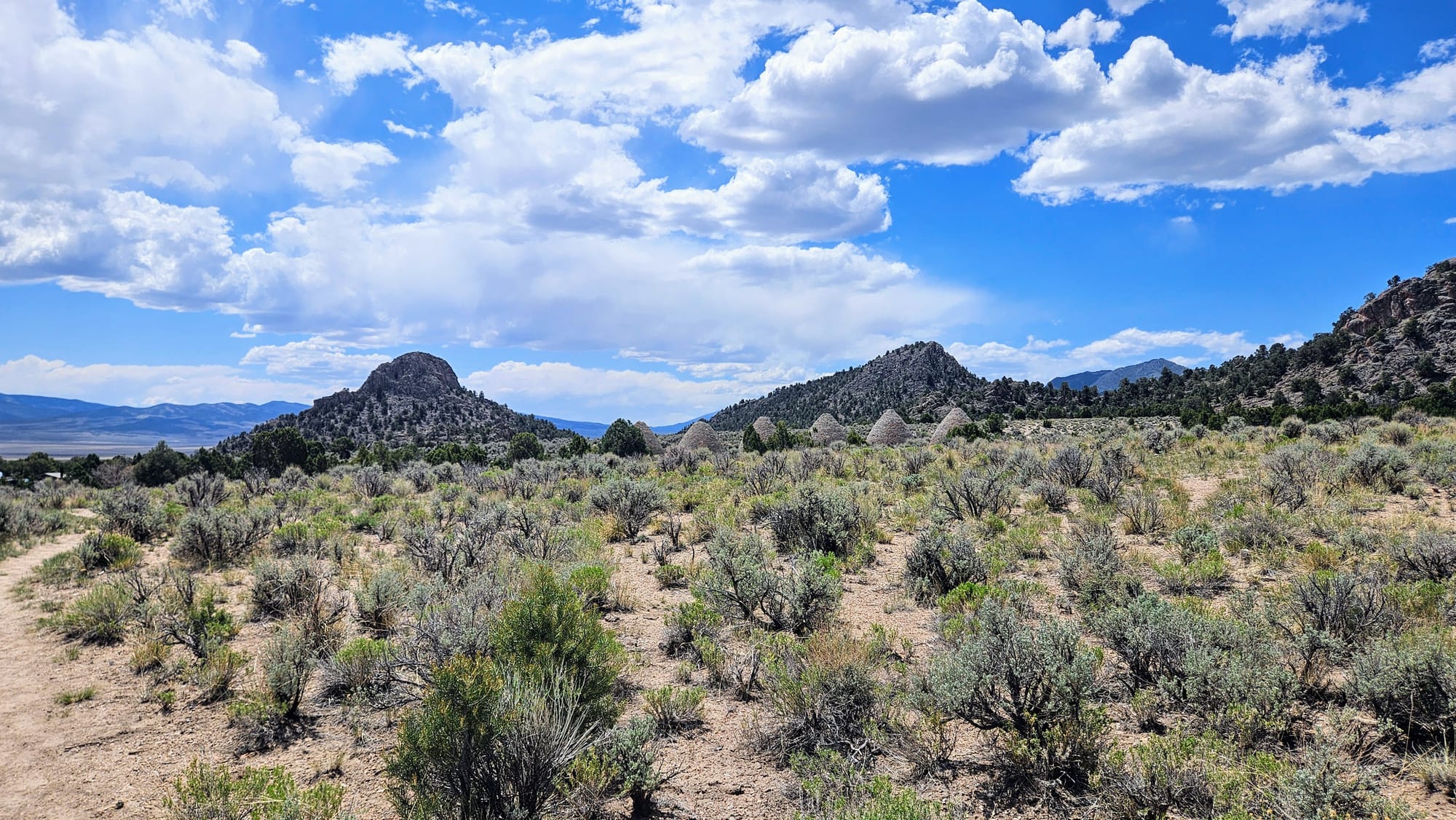
The day was getting hot and we needed to get back on the road. We had a little less than an hour until our final destination on the Loneliest Road, if we could find an available campsite there. We were 2 for 3 on successful first-come, first-served sites in beautiful locations, so we were optimistic, but still didn't want to push our luck too much. We planned to arrive just after noon, which would hopefully be prime time for vacant sites, and if not, would still give us ample time to look for a backup.
The Loneliest Road continued to be lonely enough for us to have no issues finding a site. We chose to stay at Sacramento Pass, a BLM campground with 10 designated sites on two levels. When we arrived, the lower level still had 2 sites available, but neither looked very level. We decided to make the journey up the hill, which is a dirt road but easy with our trailer's clearance. The upper level of the campground has 4 of the 10 sites, including an equestrian site/pen. We read in several reviews that, if one doesn't mind the climb, the upper level is even more secluded and scenic. They were right. We were the first ones to set up camp there and chose site 9, the middle of 3 back-in sites nestled among the juniper trees. This site seemed the longest and most level. We did need to be careful of those pesky juniper branches, as always, but our site was fantastic. We had lots of space and views of the mountains. Not only did this mean we were 3 for 3 on successful first-come, first-served campsites, but we saved the best for last.
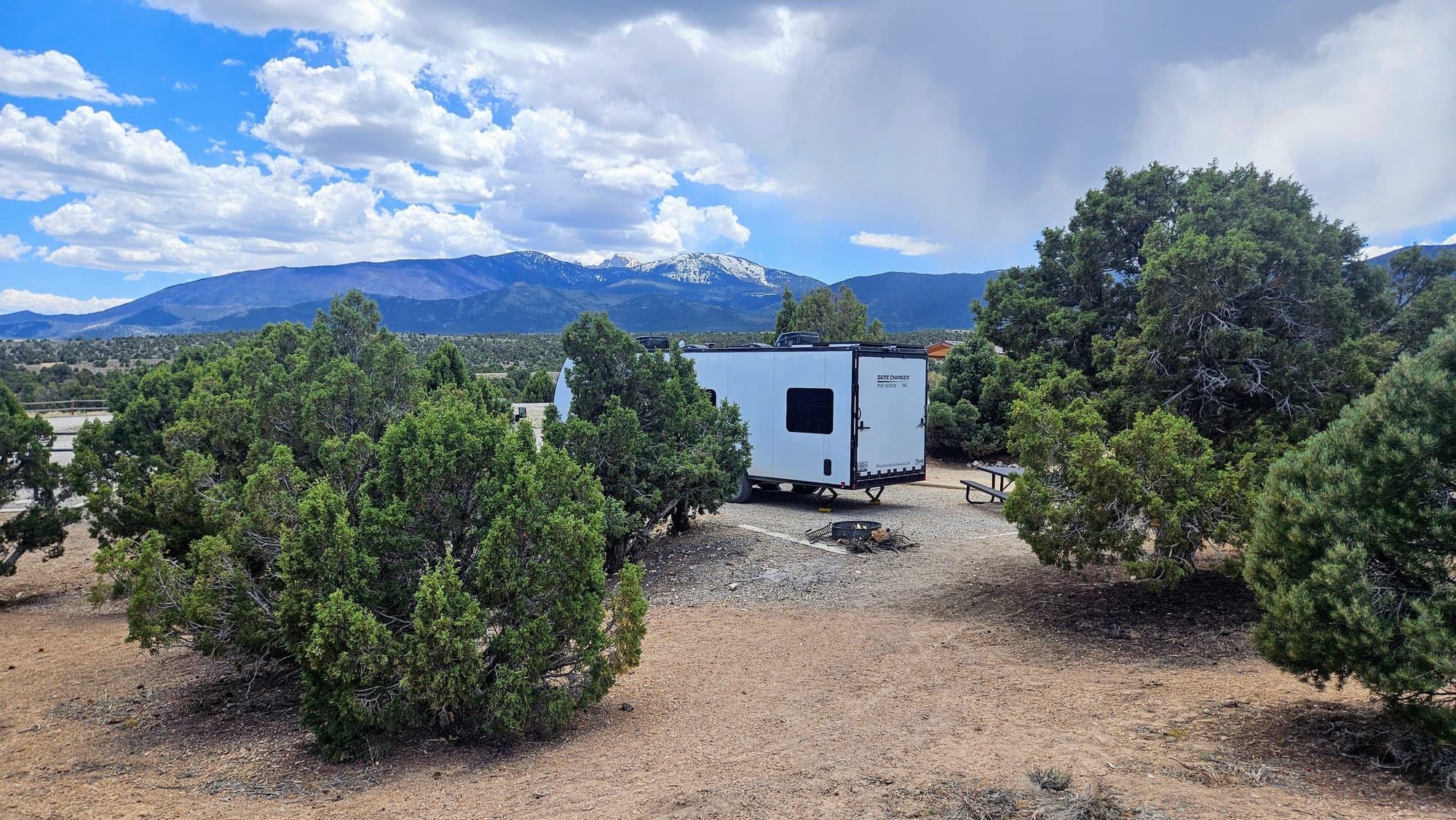

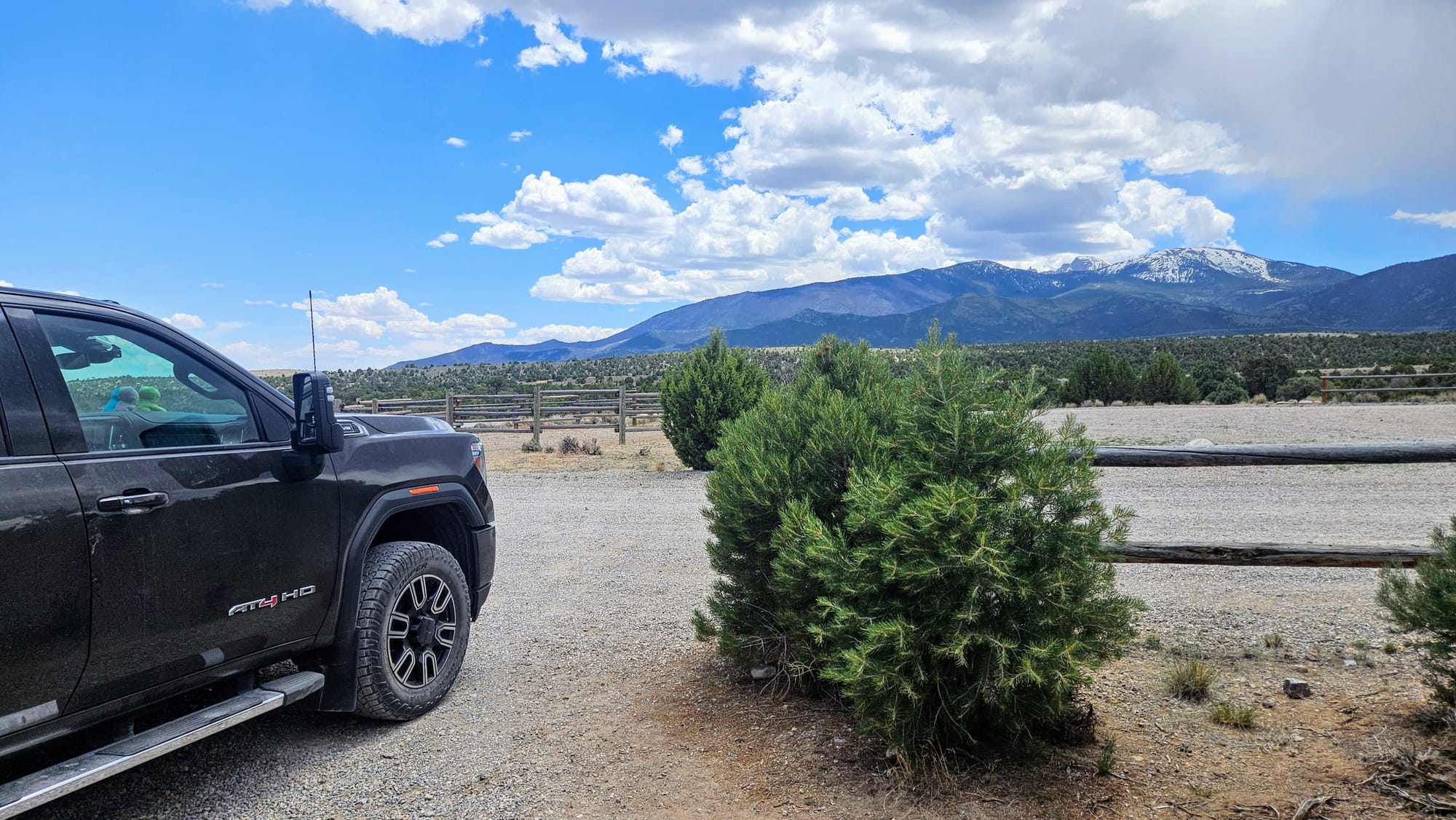
Two other campers came in on our first night, and on our second night, a Friday, the campground was full. We played our cards right, arriving mid-day on a Thursday. It still baffles us how we seem to have first-come, first-served sites down pat, and yet dispersed camping is still a major weak point in our RVing skills. But when a site like this is free and we're told where to park, we have nothing to complain about.
This means that in our 5 nights at 3 camping locations on the Loneliest Road, we only paid a total of $24. Well, technically $25 because we didn't have singles and so used a $20 and a $5. The Hickison Petroglyphs campground was free, Ward Mountain Campground was $12/night, and Sacramento Pass was free. If only our entire year could yield us such beautiful, nature-filled sites for an average of $5/night!
Site closest to day-use parking, back-in, no hookups
Picnic table, fire ring, grill, direct access to petroglyph trail
Campground recommended? Yes for small to medium RVs
Campsite recommended? Yes for small to medium RVs who are able to level
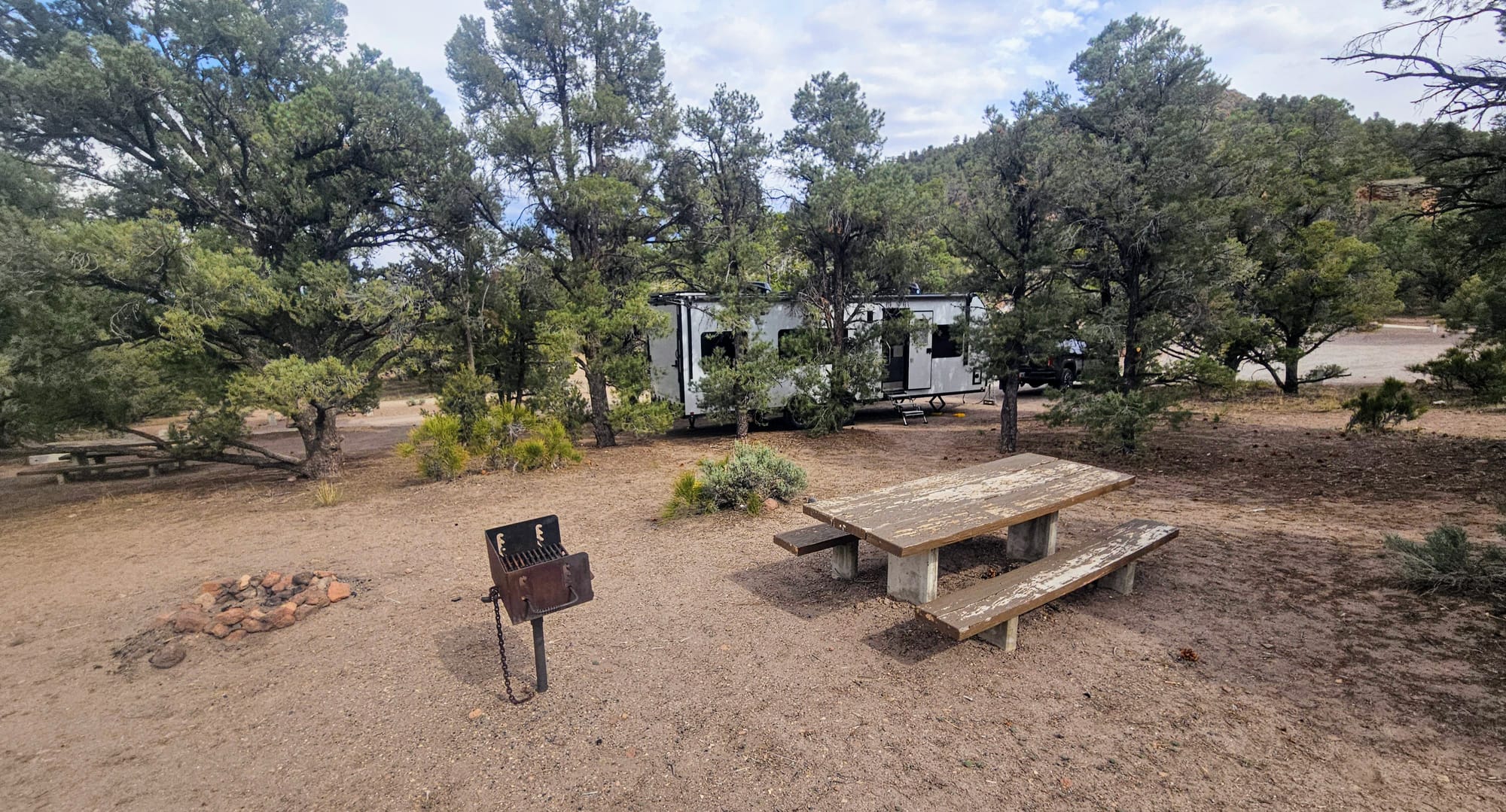
Site 16, back-in, no hookups
Picnic table, fire ring, grill, tent pad, large yard space behind campsite
Campground recommended? Yes
Campsite recommended? Yes
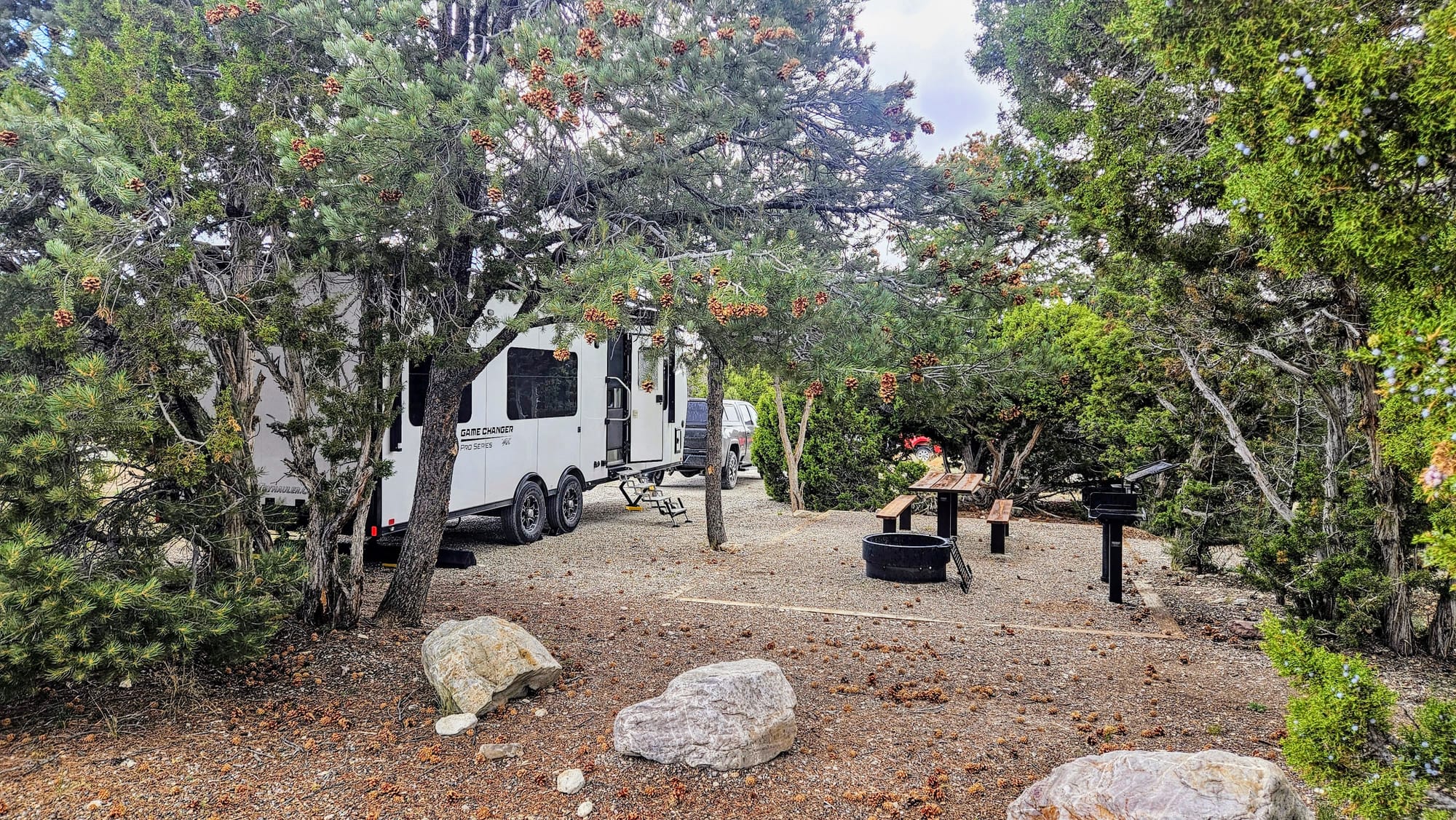
Site 9, back-in, no hookups
Picnic table, fire ring, grill, tent pad, mountain views
Campground recommended? Yes
Campsite recommended? Yes
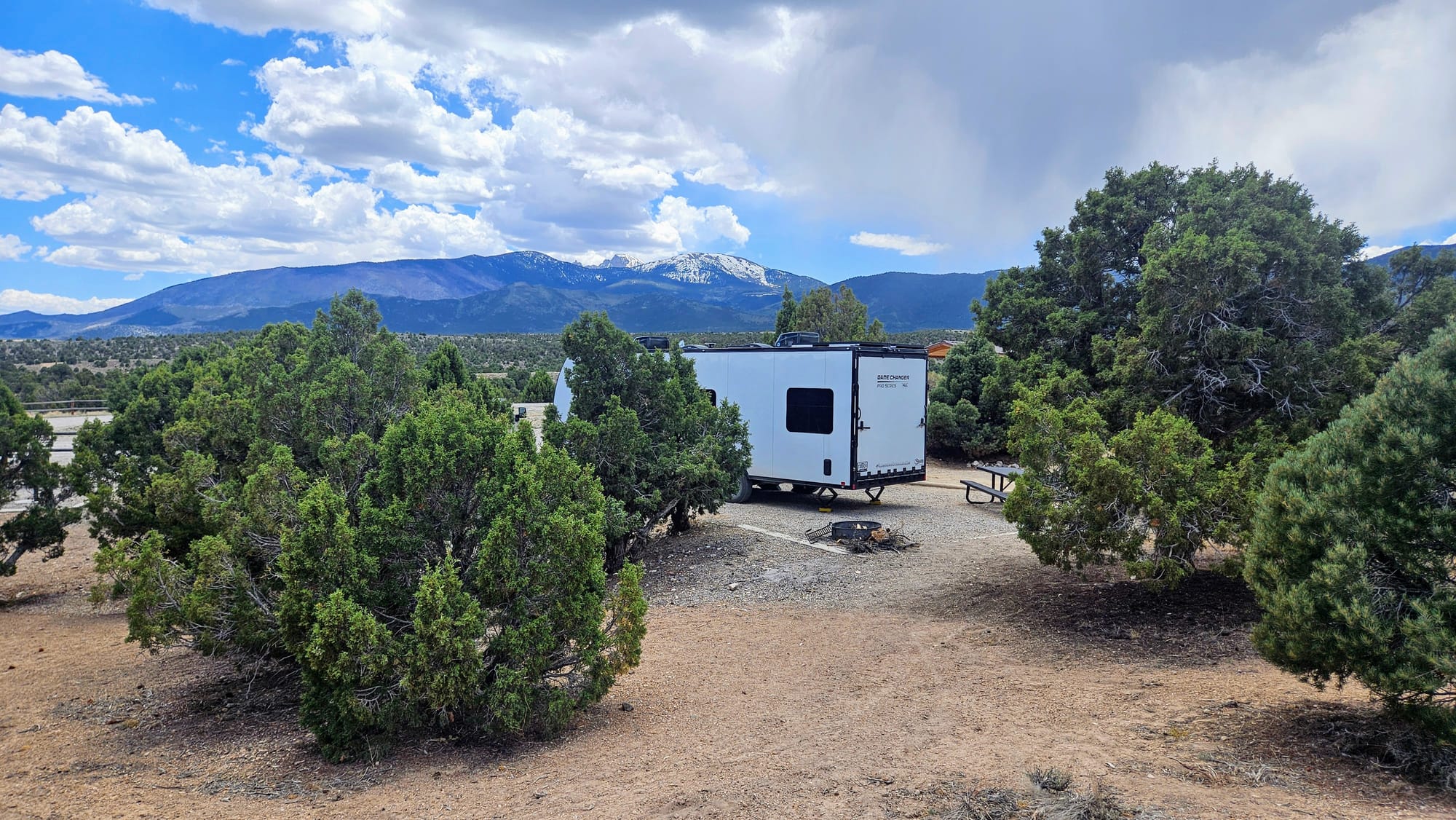
We mentioned lots of camping locations along the Loneliest Road, from reservable to non-reservable, free and cheap to more expensive. If you're traveling the road and want our list of options and recommendations, just shoot us an email or leave a comment below! The best option for you will depend on how you choose to camp. We chose to be more flexible and spontaneous, and to prioritize beauty, nature, and seclusion. It worked out great for us.
Even though Sacramento Pass was our last official stop on the Loneliest Road, we had one more adventure awaiting us before we crossed the border back into Utah and got down to business with more axle troubleshooting. This campground is a great jumping off point for exploring Great Basin National Park! Our adventures there are coming up in the next blog post.
And so, our voyage on America's Loneliest Road comes to an end. We immersed ourselves in more of Nevada's history and geography than we ever thought we'd learn. This state has been a favorite of ours for years, but now we've fallen in love with it even more. Most people think of the desert or Las Vegas when they think of Nevada, and while we love both of those, there is so much more to this state. It has the most mountain ranges of all 50 states. It has the most hot springs of all 50 states. Even though the booming mining industry has vanished, Nevada continues to produce the most gold of all 50 states.
We also answered the question once and for all: Is America's Loneliest Road actually lonely? Well, yes and no. Life Magazine definitely exaggerated the direness of this road, even back in the 1980s. We not only survived this road, but were quite entertained along the way. But, we did hit the towns at a time when a lot was closed, so we did get the lonely vibe at times. Good thing we're two introverts who were looking for solitude! The best part of all, though, was that this journey pushed us out of our comfort zones. We made pit stops in places we'd normally not dare try to fit our RV. We planned no overnights ahead of time. This isn't how we usually travel, but now we know that we're fully capable of it...well, at least in a place where hardly anyone goes.


